HARVARD DEFIES TRUMP

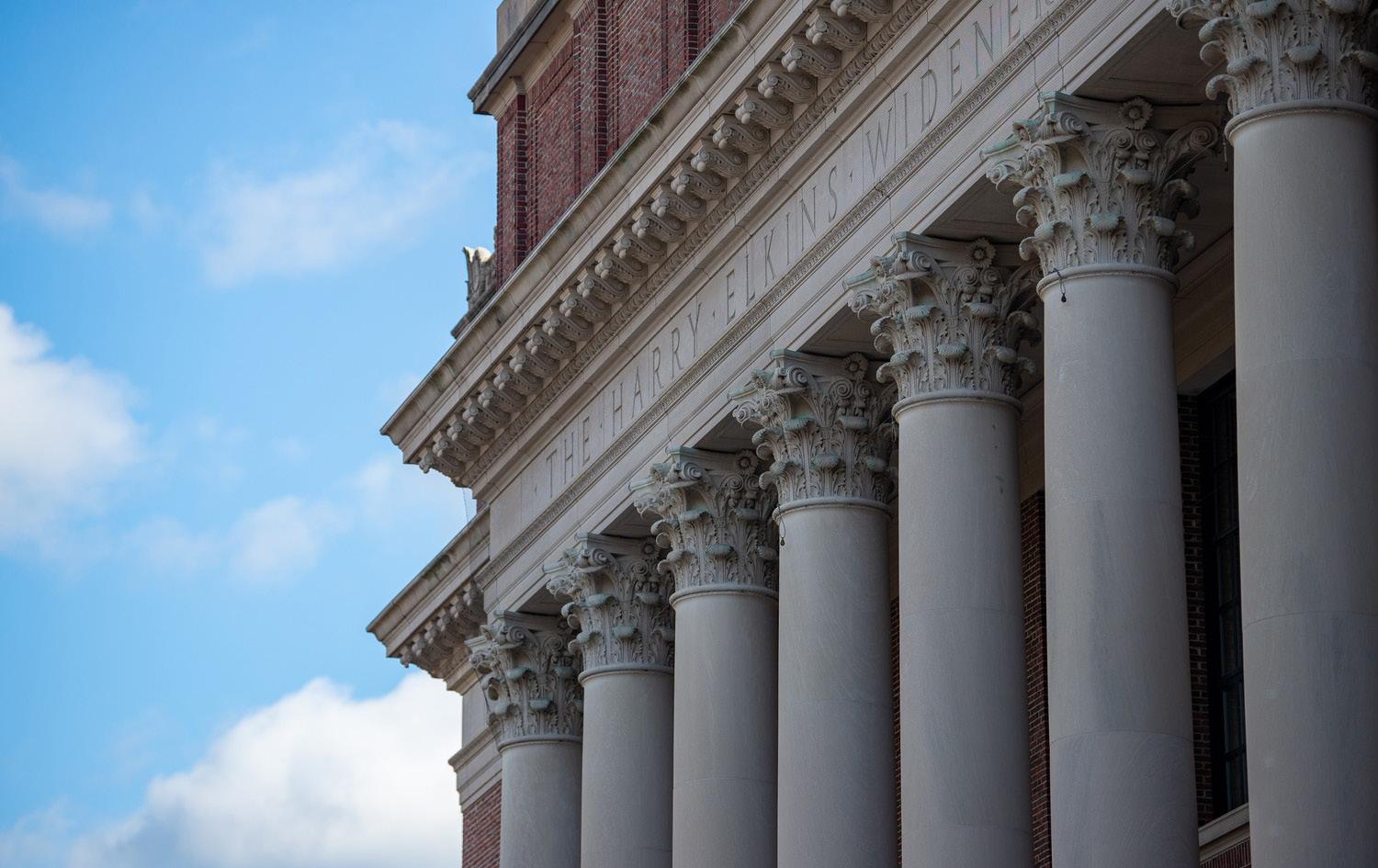
Harvard’s Clash With Trump Raises Stakes — And Closes Doors
plans to revoke Harvard’s tax-exempt status.
For two tense weeks in April, as the Trump administration kept $9 billion in Harvard’s federal funding in limbo, President Alan M. Garber ’76 said little of Harvard’s next move.
Top Harvard administrators gathered in Harvard Square just days after the demands were issued to mull over Harvard’s response — but left without a public decision.
Then, on Monday, Garber broke his silence.
He revealed that three days before, the White House had issued an expanded set of demands, which would have required Harvard to report international students who break University conduct rules to federal authorities, submit to three years of federal audits, and punish students for their involvement in pro-Palestine student groups.
Those conditions, Garber wrote in a University-wide message, were a bridge too far. He announced that Harvard would defy them — risking billions in federal funding, but heeding calls from students, faculty, and alumni to resist pressure from the federal government.
“No government — regardless of which party is in power — should dictate what private universities can teach, whom they can admit and hire, and which areas of study and inquiry they can pursue,” Garber wrote.
Garber’s message stunned Harvard — and left much of its campus briefly euphoric. With a firm new rallying cry, students and faculty were perhaps more united behind Garber than at any previous point in his tenure. But the punishment was swift and relentless. Less than seven hours after Garber’s message, federal agencies announced a freeze on more than $2.2 billion in multi-year grants and contracts to Harvard. The next day, President Donald Trump asked the Internal Revenue Service to make
On Wednesday, the Department of Homeland Security threatened to rescind Harvard’s eligibility to enroll international students. And on Thursday, a House committee demanded documents for a probe into Harvard’s refusal to abide by Trump’s demands. As the week drew to a tumultuous close, international students hunkered down in labs and dorm rooms, fearing a crackdown. Researchers braced for disruptions — and layoffs. Now, all eyes are on how Harvard will respond. Garber faces a high-stakes decision. He could quietly tolerate the funding cut and draw from Harvard’s more than $50 billion endowment to stay afloat. Or he could mount a legal challenge against the White House to rid the funding threat once and for all — even as Harvard shoulders the losses that are already mounting. In either case, the contours of a long and costly battle are forming. And with Trump in office for the next three-and-a-half years, there may not be an end in sight.
Harvard Prepares for a Fight
Until Garber’s statement on Monday, Harvard’s campus was jittery and divided. After Columbia University conceded to similar demands from the government in March, Harvard faculty and students wondered whether their own school would be the next domino to fall.
A series of administrative decisions that mirrored the changes at Columbia — including the ouster of leaders at the Center for Middle Eastern Studies and the dismantling of a Harvard Divinity School program on religion and conflict — were seen by many students and faculty as obedience in advance, designed to placate Republicans and prevent them from making Harvard their next target. As all of Harvard waited for Garber to respond to Trump’s ultima-
tum, activists mounted a pressure campaign to convince the University to fight rather than fold. Local stakeholders — including the Cambridge City Council and Harvard’s chapter of the American Association of University Professors — circulated petitions and held a hundreds-strong protest in Cambridge Common.
Even so, Monday’s announcement was unexpected when it arrived. Quickly, though, it became a call to arms on campus.
Eric D. Hwang ’25 said on Monday that Garber’s decision “made me feel really proud to be a Harvard student.” Praise for Garber flooded the airwaves on Sidechat, an anonymous social media platform for students. And the same faculty who had protested Harvard’s earlier decisions planned a rally to “applaud” Garber’s statement.
Even the Harvard Square burger joint Bartley’s advertised a new menu item on a sandwich board on Mass. Ave.: the “ballsy Harvard.”
But even as Harvard’s stand spurred unity and pride on campus, it did not take long for the University to begin feeling the pain of the multi-agency fusillade Republicans mobilized against it.
The effects of the $2.2 billion funding cut rapidly began appearing across campus. Less than one day after the White House announced the cut, Harvard-affiliated researchers began receiving stopwork orders on contracts worth tens of millions of dollars.
Plans to downsize were also announced across Harvard’s campus.
On Wednesday, Harvard Medical School leadership told researchers and professors at a closed-door town hall to expect “permanent layoffs,” according to a recording obtained by The Crimson.
Layoffs had already begun by Thursday at the Harvard School of Public Health, where faculty have been told to expect significant changes to programming in the wake of a “significant budget crisis.”
Joe Biden Applauds Harvard’s Resistance at Private HKS Event
BY ELISE A. SPENNER AND TANYA J. VIDHUN CRIMSON STAFF WRITERS
Former United States President Joe Biden celebrated Harvard’s decision to defy demands from the Trump administration at a private Institute of Politics seminar with senior advisor Mike Donilon on Wednesday afternoon.
The discussion with the Democratic Party’s de facto leader, planned weeks in advance of the University’s funding showdown, comes as Harvard’s confrontation with President Donald Trump escalates. After rebuffing Trump’s demands, Harvard is now facing possible revocation of its tax-exempt status on top of a $2.2 billion funding freeze — with layoffs expected and stop-work orders rolling in.
“Harvard stepped up in a way no one else has,” Biden said, according to two students who attended the off-the-record event.
“You should be really thankful.”
When asked by a Crimson reporter after the event if Harvard should pursue legal action, Biden doubled down on his defense of the University — but refused to comment on whether Harvard President Alan M. Garber ’76 should take the White House to court.
“I think Harvard should just do what it’s doing — lifting everybody up,” Biden said after the event.
A Harvard Kennedy School spokesperson declined to comment on Biden’s remarks. A spokesperson for Biden also declined to comment.
Since leaving office in January, the former president has largely disappeared from public life. He made his first public remarks just one day before visiting Harvard at a Chicago conference of disability advocates on Tuesday.
Biden appeared at HKS at the invitation of Donilon, a spring resident fellow at the IOP. Biden did not meet with Garber during his brief Harvard visit, according to Harvard spokesperson Jason A. Newton.
Instead, Biden arrived at HKS shortly before 3 p.m. for a photo op with the IOP Student Advisory Committee before proceeding to the private discussion with Donilon and roughly 50 students, open only to invited IOP members and selected HKS students.
His appearance was marked by gaffes of the sort that became political lightning rods during the 2024 presidential race, including mistakenly referring to Ukraine as Iraq while discussing Russia’s invasion before Donilon corrected him.
And when Biden bit into an ice cream bar after the talk, the partially melted dessert fell to the floor.
The appearance was not publicized on the IOP website, and invited HKS students were not told who Donilon’s guest was ahead of time. Boston Mayor Michelle Wu ’07 and former Congressman Joseph P. Kennedy III also attended the event, but neither gave extensive remarks.
Biden’s Wednesday comments — his first reported backing for Harvard after Garber’s statement on Monday — add to an outpouring of support from Democratic leadership.
Former United States President Barack Obama praised the University in a post on X, saying Harvard “set an example for other higher-ed institutions.”
While Biden addressed the invited students, roughly a dozen protesters condemned Biden’s support for Israel’s war in Gaza at a demonstration organized by Harvard Out of Occupied Palestine. Protesters chanted “Biden, Biden, you can’t hide. You’re committing genocide” and attempted to disrupt the event by chanting, ringing bells, and hammering drums.
“We are here to protest the arrival of yet another genocidaire onto our campus, particularly the president, who gave billions and billions of dollars of support to Israel,” Olivia G. Pasquerella ’26, a Harvard Undergraduate Palestine Solidarity Committee group organizer, said.
“Harvard needs to stop inviting genocidaires to speak on campus,” Pasquerella added. One event attendee said the protest was faint and indistinguishable inside the classroom, but still audible. Inside, Biden also issued sweeping criticisms of the current White House, saying that the erosion of democratic institutions was threatening domestic and international stability.
“If America doesn’t lead the world, who does?” Biden said.
“Someone has to stand up and unite the world.”
“We need you. Not hyperbole,” the former president said.
Sen. Bernie Sanders (I-Vt.) and Massachusetts Governor Maura T. Healey ’92 have also publicly backed Harvard. But support from powerful political figures has fallen squarely along political lines, and Republican retaliation from government agencies has been swift. The Internal Revenue Service is making plans to revoke Harvard’s tax-exempt status, and the Department of Homeland Security threatened the University’s ability to enroll international students in a request for information Wednesday night, demanding international students disciplinary records and information about their participation in protests.
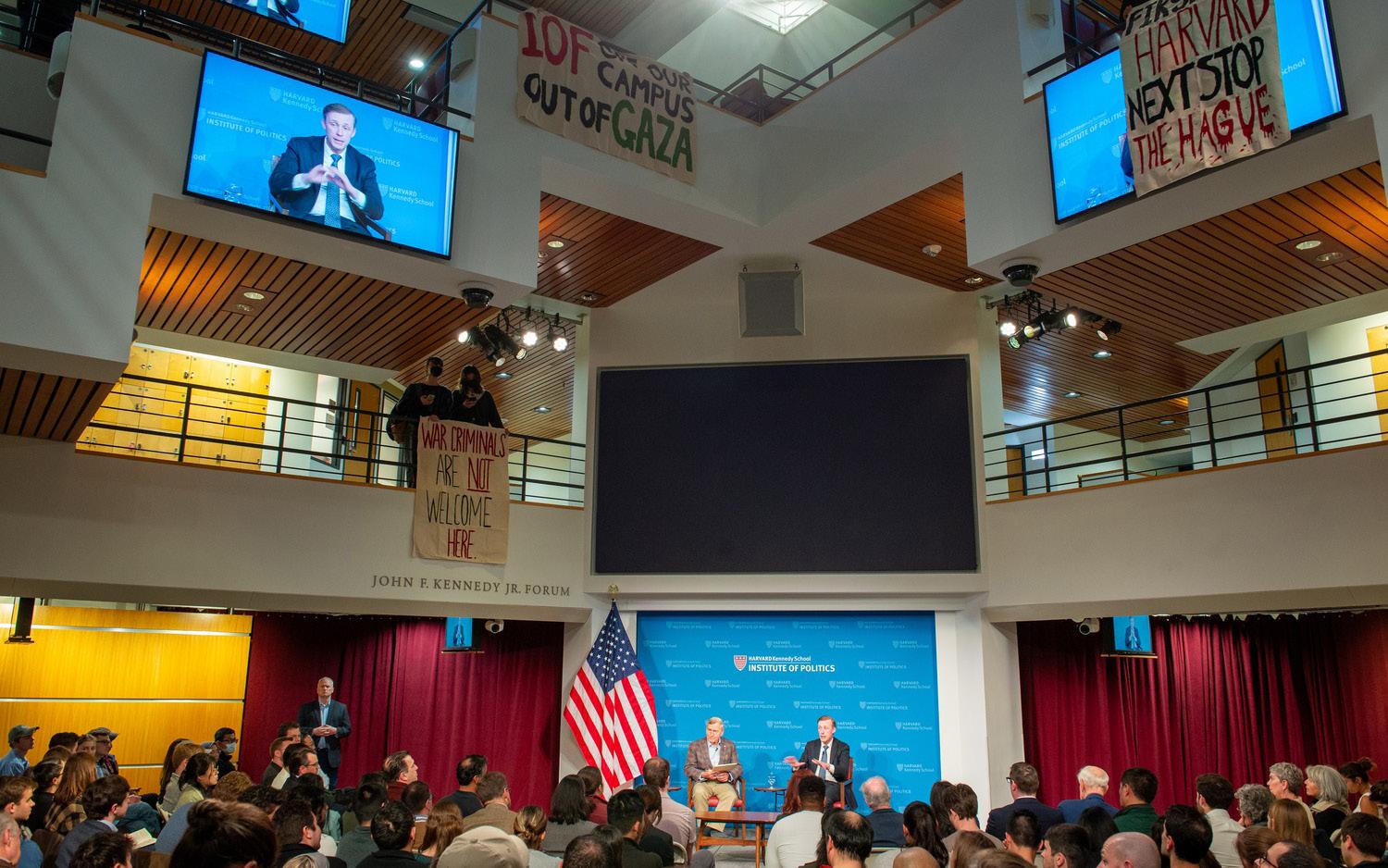

THE BROWN DAILY HERALD BROWN TO BORROW $300 MILLION FOLLOWING TRUMP FUNDING THREATS The University of Pennsylvania’s Wharton Business School has been ranked the best business school in the country by the U.S. News and World Report, the
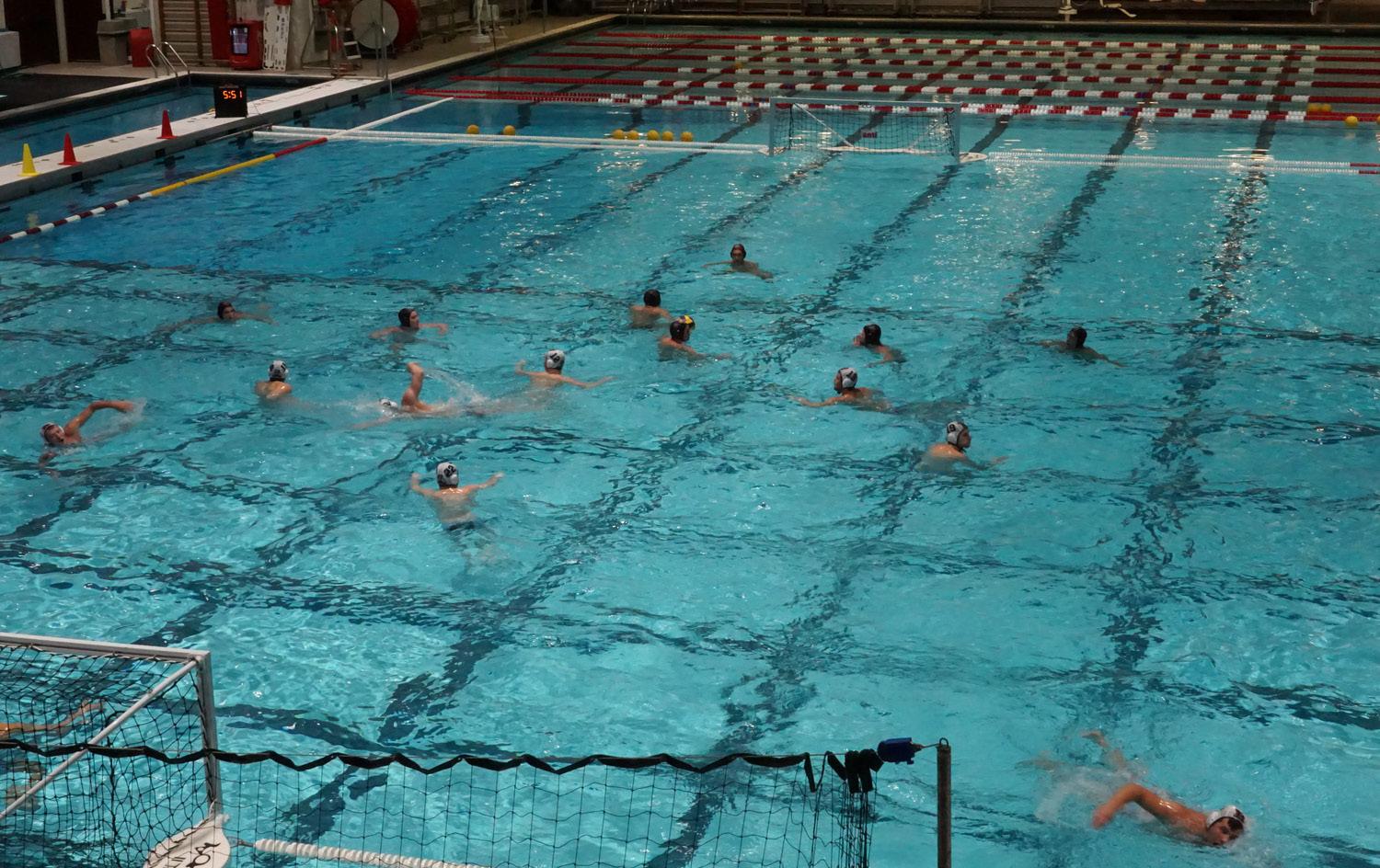

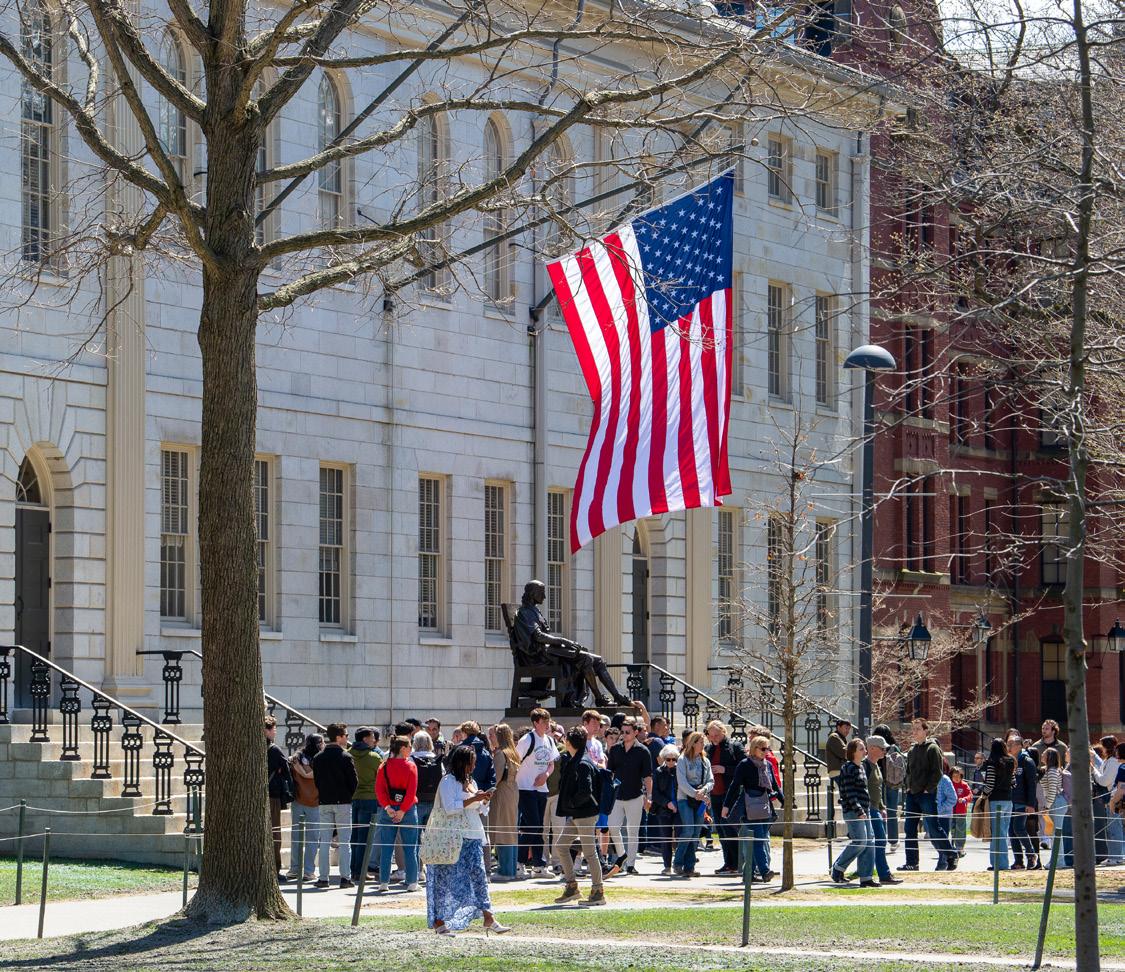
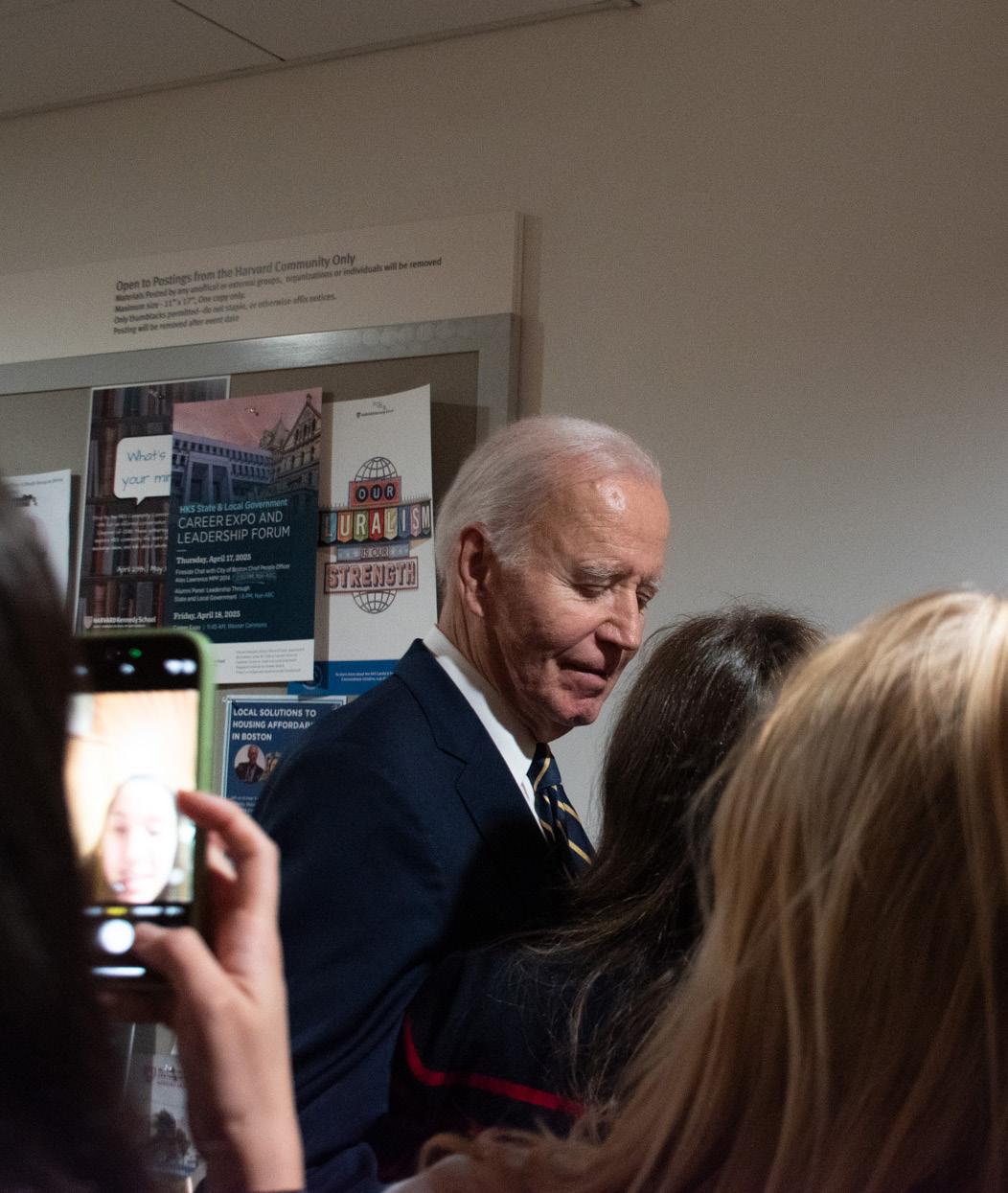
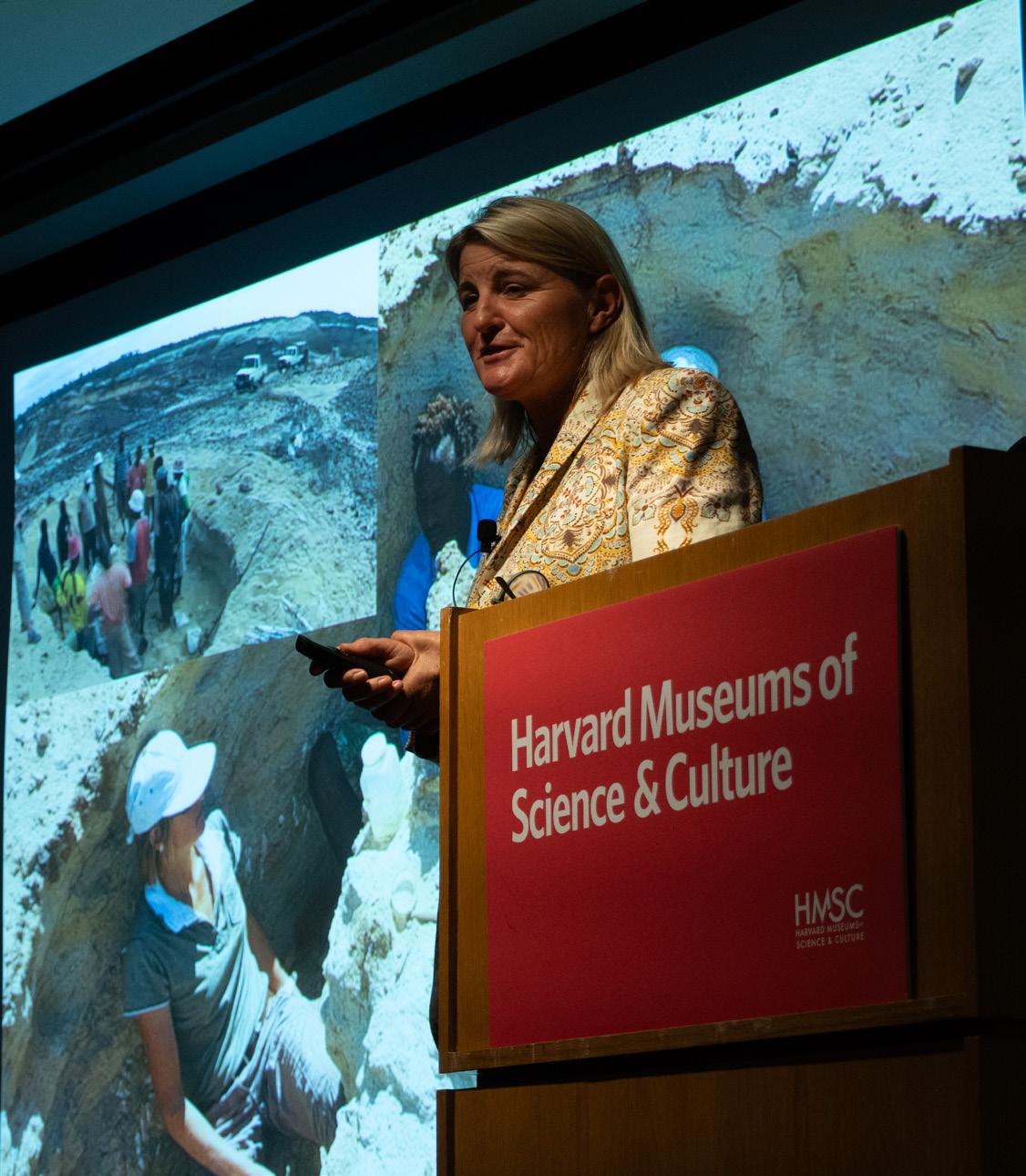
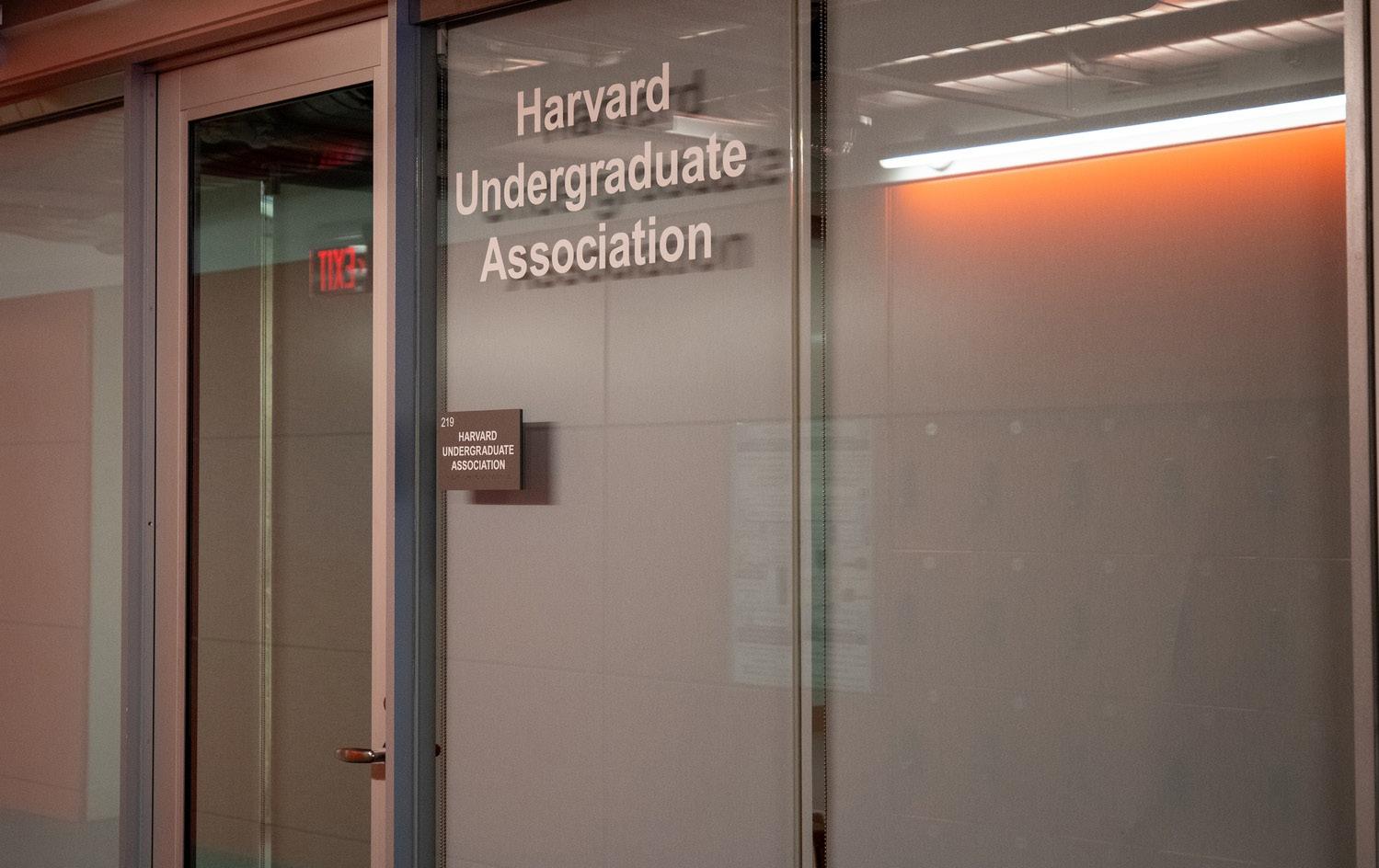

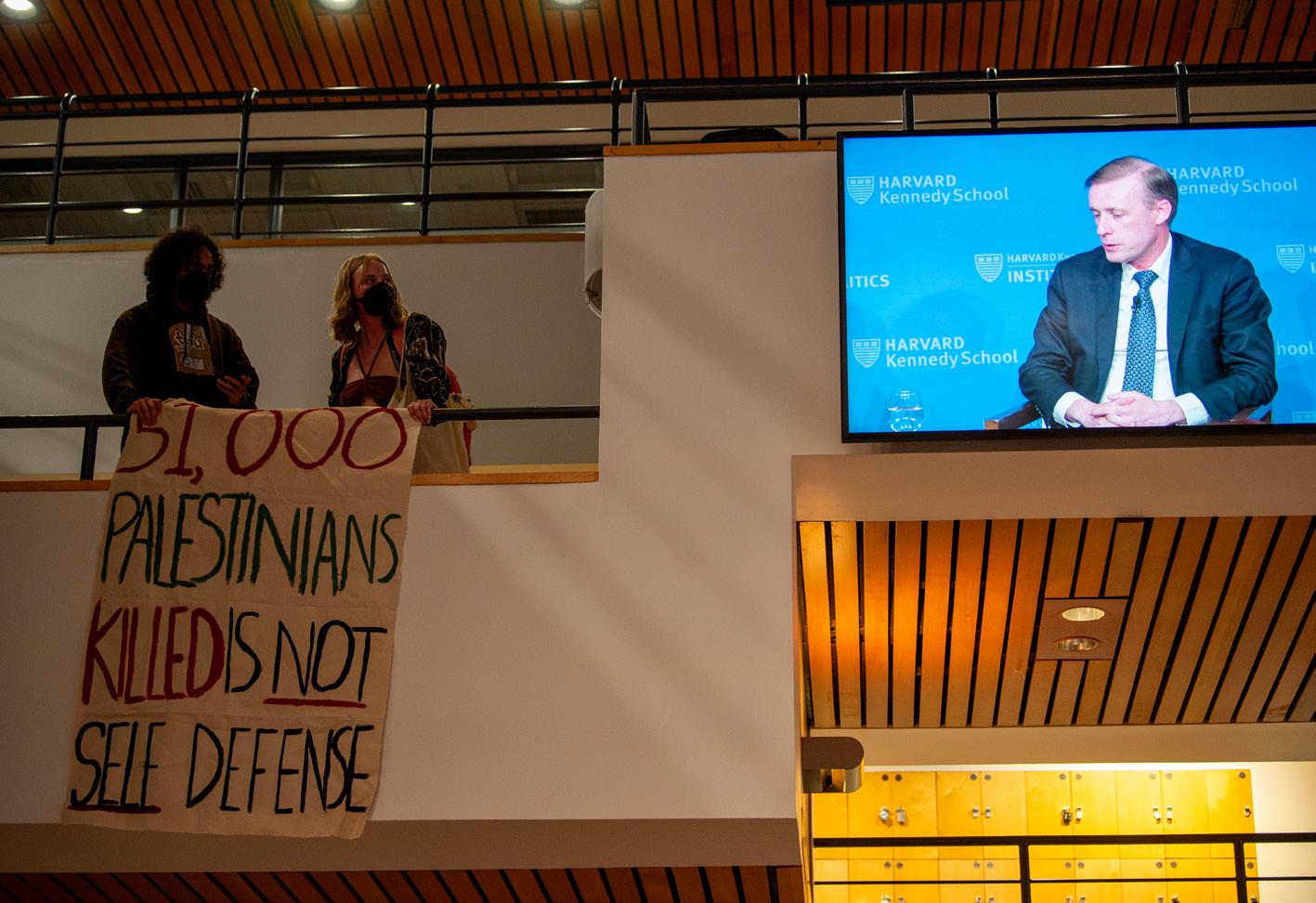
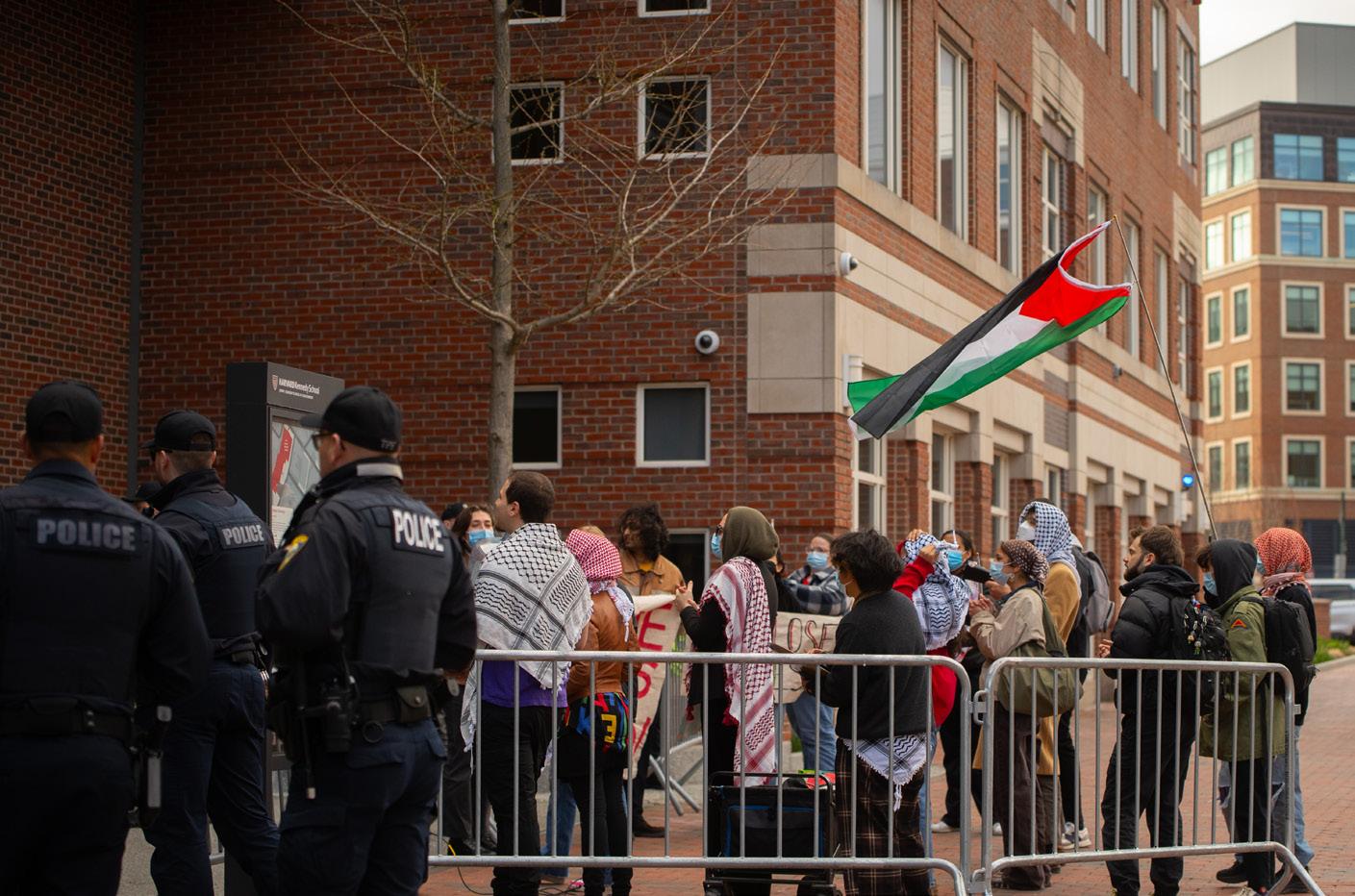

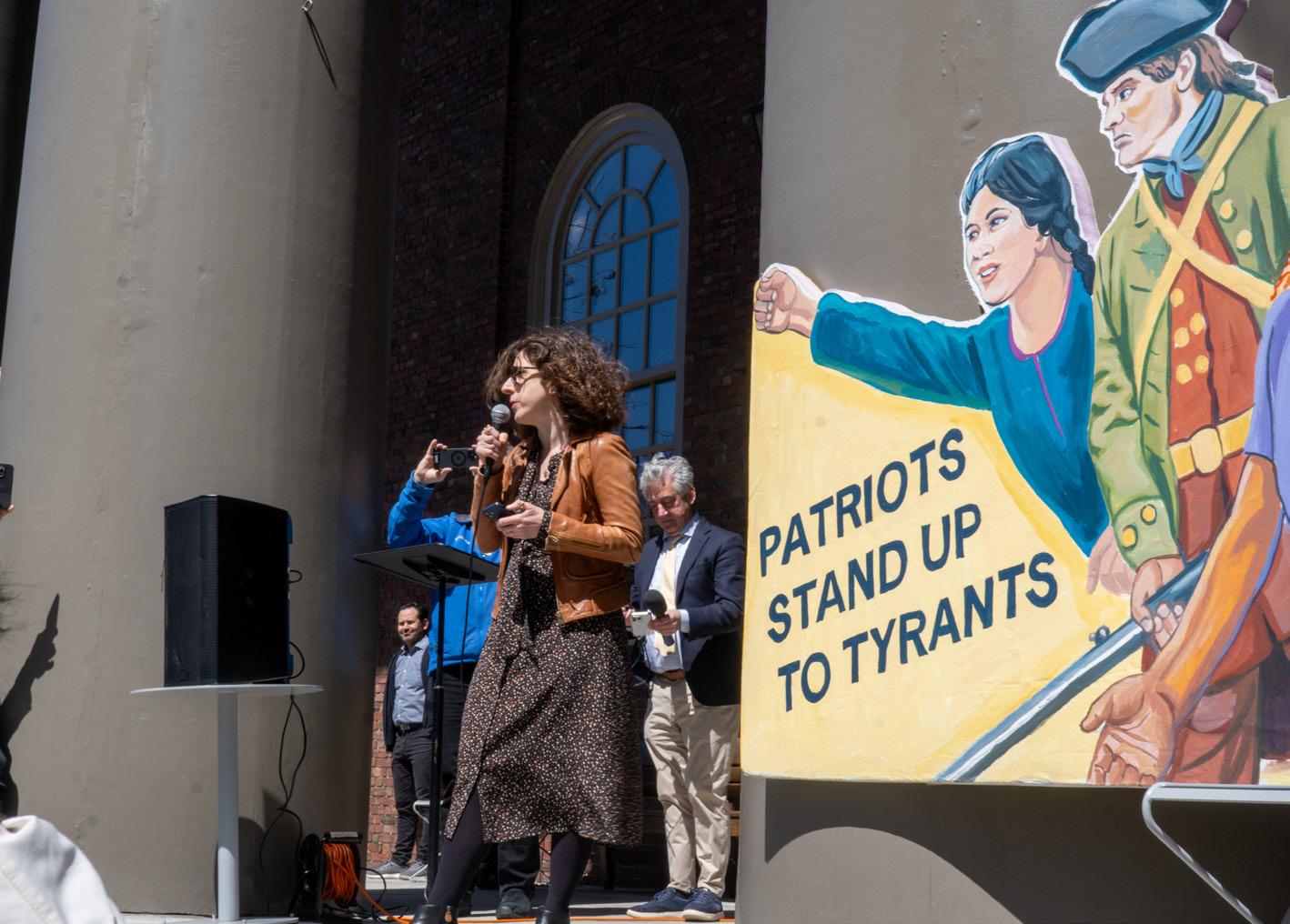
FEDERAL JUDGE HOLDS TRUMP OFFICIALS IN CONTEMPT FOR VIOLATING DEPORTATION ORDER
U.S. District Court Judge James Boasberg ruled that federal officials showed a “willful disregard” for his March order demanding the government stop its deportations of a number of alleged Venezuelan gang members to El Salvador, according to Reuters. Boasberg ruled that the Trump administration could not deport people under the 1798 Alien Enemies Act because it deprived them of their due process rights. He ordered the administration to halt such deportations. He has given attorneys for the federal government until April 23 to either explain the steps they would be taking to rectify the situation or disclose the names of officials who had disregarded his order.
MAN ACCUSED OF ARSON
ATTACK ON PENNSYLVANIA GOVERNOR’S MANSION ARRESTED
Cody Balmer was held without bail after being charged with setting fire to Pennsylvania Governor’s mansion while the governor, Josh Shapiro, and his family were sleeping, according to NPR. Search warrants were executed on Balmer’s mother’s home as well as a storage locker. It is alleged, according to the search warrant, that Balmer called 911 50 minutes after the attack and said that he “will not take part” in Shapiro’s “plans for what he wants to do to the Palestinian people.” Shapiro had Seder dinner with his family shortly before the attack.
WTO WARNS TARIFFS WILL DECREASE GLOBAL TRADE PROJECTIONS
The WTO predicts that the global economy will be negatively impacted by the Trump Administration’s tariff war this year, expecting North America’s economy in particular to grow at a slower rate, according to CNN. The economic output of North America is expected to be 1.6 percent below what it would have been without the tariffs, leading its predicted global economic output to shrink from 2.8 percent to 2.2. While Trump’s reciprocal tariffs for all countries except China have been paused, the WTO believes that China may send products originally intended to go to the U.S to other countries instead, increasing the competitiveness of markets outside of North America.
CALIFORNIA IS FIRST STATE TO SUE TRUMP ADMINISTRATION OVER TARIFFS
Governor Gavin Newsom and Attorney General Rob Bonta announced on Wednesday that California is suing the Trump Administration over the reciprocal tariffs it is imposing on U.S. trading partners, according to ABC News. Newsom believes that “no state is poised to lose more than the state of California,” citing the state’s importance to the global economy. The state is suing the administration on the grounds that Trump is incorrectly using the International Economic Emergency Act to justify his tariff war, claiming that tariffs are the responsibility of Congress rather than the executive branch.
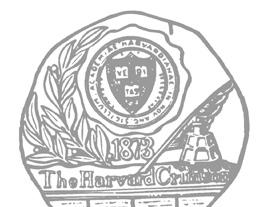
What’s Next
Start every week with a preview of what’s on the agenda around Harvard University
Friday 4/18
PBHA SUMMER URBAN PROGRAM
AUCTION
Gutman Conference Center (HGSE), 5 p.m.
The PBHA is hosting their 22nd annual SUP program auction. Hundreds of alumni, sponsors, Harvard staff, families, and community partners to raise more than $120,000 through donations and bidding in one of the PBHA’s primary fundraisers.
Saturday
THE CENTRAL ASIAN ORIGINS OF POST-SOCIALIST ECONOMIC REFORMS
S010 (Tsai Auditorium) CGIS South, 9 – 10:30 a.m.
The Davis Center for Russian and Eurasian Studies is hosting Temple University Professor Artemy Kalinovsky for a free talk on how Central Asian states transitioned away from state socialism.
Sunday
HARVARD UNIVERSITY BASEBALL VS CORNELL UNIVERSITY
12 p.m. to 3 p.m. Hey batter, batter, looking for a chance to show your school spirit? Support the Harvard Baseball team as it takes on Cornell in its 3rd game of the Weekend on Sunday. Harvard baseball has a 4-3 record at home, while Cornell has an 8-8 record on the road.
Monday 4/21
THEOLOGY ON TRIAL: FAITH’S ROLE IN MASS INCARCERATION
James East, Swartz Hall, 120, 12:30 – 1:45 p.m.
Interested in the influence of culture on governance? Harvard Divinity School, along with sponsors from across the University, will hold a conversation with three Harvard scholars
prison at 16.
a man who was
Tuesday 4/22
EDUCATION IN AMERICA & BEYOND AND THE FUTURE OF THE DOE
JFK Jr. Forum, 6:00 p.m.
The JFK Jr. Forum will be hosting former Secretary of Education Miguel Cardona for a discussion about the future of the Department of Education and on the overall state of education in the United States and around the world.
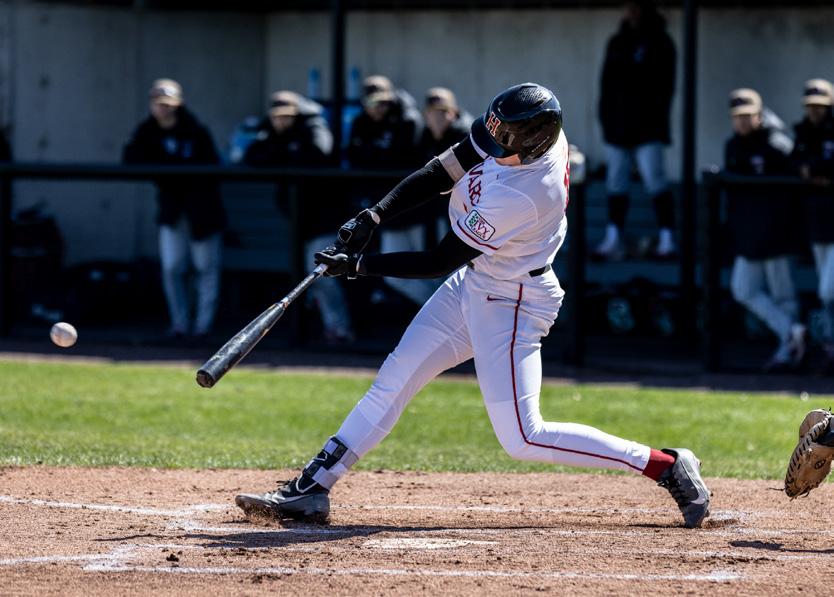
Wednesday 4/23
A FIRESIDE CHAT WITH THE DOGIST Kirkland House JCR, 7:30 – 8:30pm Join New York Times-bestselling author and content creator Elias Weiss Friedman, Assistant Professor in Human Evolutionary Biology Erin Hecht, and HKS professor David Deming for a conversation about dogs, their evolution, and the role they play in the human experience.
Thursday
SPRING IS STARTING

Friday 4/25
DHS Asks Harvard To Report International Students’ Info
the letter read.
American universities may host international students on student visas only if they have certification under the Student and Exchange Visitor Program.
The Department of Homeland Security sent Harvard a letter on Wednesday threatening to revoke its eligibility to enroll international students unless it submits information on international students’ disciplinary records and protest participation.
In a Wednesday press release, the DHS wrote that it had also canceled two grants worth $2.7 million to Harvard.
The letter threatening Harvard’s authorization to host international students, which was signed by Secretary of Homeland Security Kristi Noem, accused Harvard of creating a “hostile learning environment” for Jewish students.
“It is a privilege to have foreign students attend Harvard University, not a guarantee,”
The Wednesday letter calls on Harvard to provide information regarding visa holders’ “known threats to other students or university personnel,” “obstruction of the school’s learning environment,” and any disciplinary actions “taken as a result of making threats to other students or populations or participating in protests.”
It comes less than a week after three federal agencies threatened to pull Harvard’s federal funding unless the University agreed to report international students for violation of its conduct policies. Harvard rebuffed the government’s demands on Monday and now faces cuts to more than $2.2 billion in federal funding.
The Internal Revenue Service is also now reportedly making plans to revoke Harvard’s tax-exempt status, which would require Harvard to pay federal taxes on its endowment income and donor contributions.
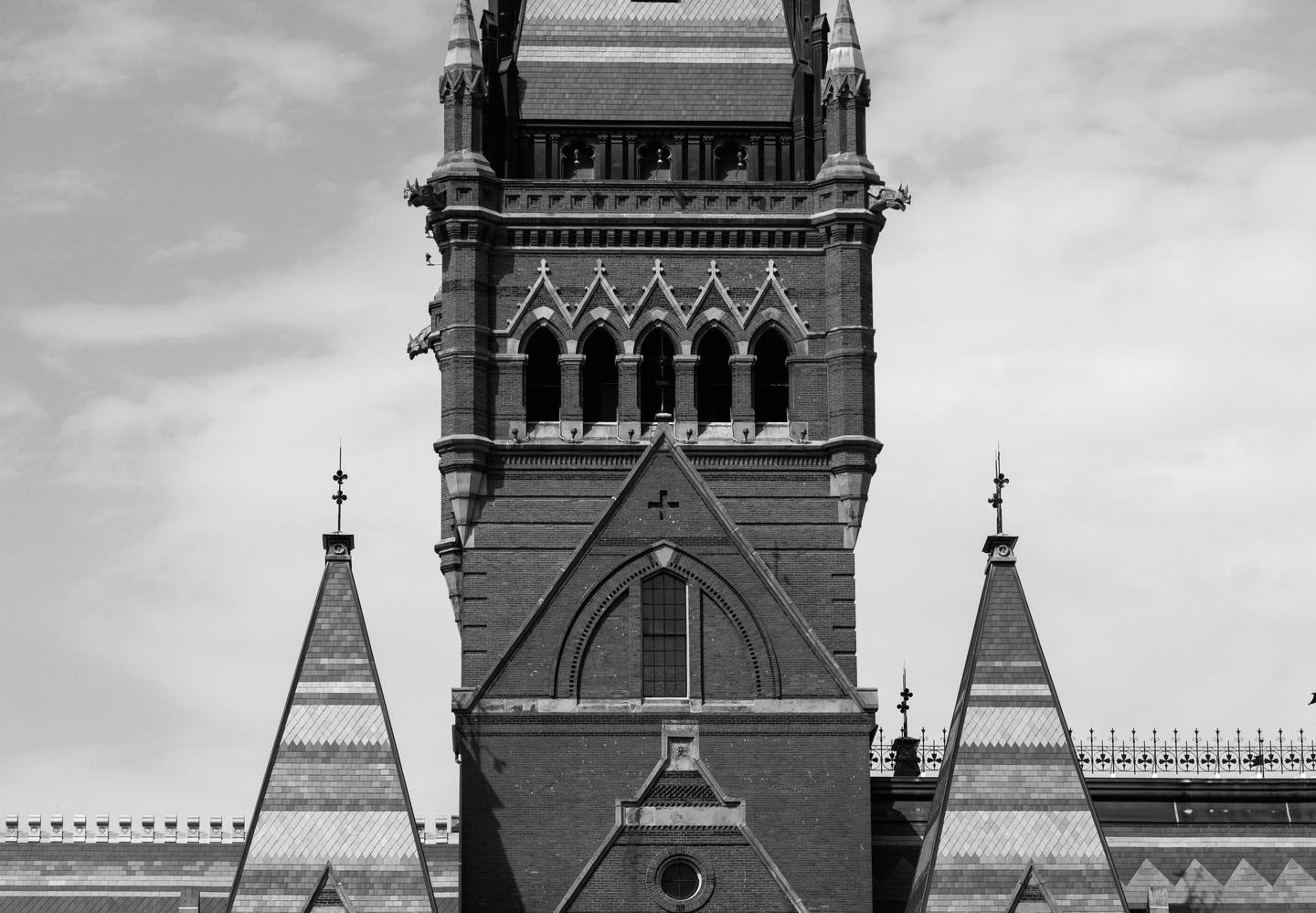
The Wednesday letter cites a Jan. 28 executive order that instructed universities, including Harvard, to monitor international students for suspected participation in crime or terrorism.
“Harvard bending the knee to antisemitism — driven by its spineless leadership — fuels a cesspool of extremist riots and threatens our national security,” Noem said in the press release.
Noem added that if Harvard fails to comply with the student records request by April 30, “SEVP will automatically withdraw the school’s certification.”
One of the canceled grants is the $1.9 million Blue Campaign Program Evaluation and Violence Advisement grant, which supported research on mass violence and human trafficking
500 Harvard Affiliates Rally To Support International Peers
BY SAMUEL A. CHURCH, WILLIAM C. MAO, VERONICA H. PAULUS, AND SAKETH SUNDAR CRIMSON STAFF WRITERS
More than 500 Harvard affiliates and Cambridge residents gathered on the steps of Memorial Church on Thursday afternoon to rally in support of international students after the Trump administration threatened to revoke the University’s eligibility to host them.
Faculty and students delivered speeches urging Harvard to stand unified in the face of Trump’s threats to deport international students and maintain its stance established when Harvard President Alan M. Garber ’76 publicly rejected the administration’s demands.
“They want us to turn on each other, and now more than ever, we need to have each other’s backs,” said Abdullah Shahid Sial ’27, the incoming co-president of Harvard College’s student government. “We cannot, at any cost, leave anyone behind.”
“This is a conversation which includes all of us, because when they come for one of us, they’re coming for every single one of us,” Sial, who is from Pakistan, said.
The Department of Homeland Security sent Harvard a letter on Wednesday threatening to remove the University’s ability to enroll international students unless it shared information about international students’ disciplinary records and protest participation.
The communication came just two days after the Trump administration pulled more than $2.2 billion of Harvard’s federal funding in response to Garber’s rejection of the administration’s demands, which would have escalated its monitoring of international students. Since Garber’s defiant email, the University has not issued any additional statements regarding Trump administration moves other than reaffirming it. Leo Gerdén ’25, an international student from Sweden, urged Harvard not to capitulate
to Trump’s conditions for hosting foreign students, saying that “for every demand we accept, there will be a new letter next week with new demands of what professors to fire, what subjects we can talk about, and what friends we have to turn in.”
“If we sell our soul to combat authoritarianism, then we have let the authoritarians win,” Government professor Ryan D. Enos said in a speech.
During the event, protesters held signs saying “Thank You Harvard!” “patriots stand up to tyrants,” and “courage is contagious.”
Anurima Bhargava ’96 applauded the University for rejecting the Trump administration’s demands and said that alumni supported Harvard in its fight against the White House.
“We stand with you, and we stand with Harvard against this administration’s attempts to narrow our freedoms to learn, to think, to act and to dictate who can wield those freedoms,” Bhargava said.
During Wednesday’s protest, rumors of U.S. Immigration and Customs Enforcement presence in the Yard ran rampant in campus groupchats and on Sidechat, a social media app that allows users to publish posts anonymously. Two Harvard University Police Department officers said during the protest that they were not aware of any ICE presence in the Yard.
“That would be news to me,” one officer responded when asked by a Crimson reporter if ICE officers had entered the Yard. University and HUPD spokespeople declined to comment.
Unlike for recent pro-Palestine protests, Harvard Yard remained open to the public for the duration of the event, enabling non-Harvard affiliates to participate in the demonstration.
Attendees briefly participated in a call-and-response chant of “academic freedom is freedom for all — there is no Palestine exception.”
Event speakers also spoke in front of a large banner which said “Free Speech Includes Palestine.”
Wednesday’s protest merged what was initially supposed to be two rallies: the first organized by faculty earlier this week to “applaud” Garber’s Monday response and the second organized by students late Wednesday night to stand in solidarity with their international peers.
Though all of the speakers expressed support for international students, not everyone lauded Garber’s response to the White House’s demands.
Harvard Kennedy School Professor Sandra S. Smith said she was “not here to celebrate,” adding that “I categorically reject the notion that Garber deserves praise for defending our academic freedoms.”
Instead, Smith pointed to the recent dismissals of leaders at the Center for Middle Eastern Studies, severance of ties with Birzeit University in the West Bank, and suspension of Harvard Divinity School’s Religion, Conflict, and Peace initiative as examples of how Harvard administrators have “quashed or silenced” Palestine-related activities on campus.
“Forgive me for being a bit skeptical when Garber writes that the Harvard community will work together to find ways consistent with law to foster and support a vibrant community that exemplifies respect and embraces difference,” Smith added.
History professor Kirsten A. Weld — who voiced similar criticisms of the University’s actions — said that Garber “did the right thing by refusing to capitulate.” Weld added, however, that “his job now is to lead a battle with existential implications for all of U.S. higher education.”
“It’s going to take solidarity. But it’s also going to take vigilance because this University cannot save itself if it leaves any of its people behind,” Weld said. “In particular, it must fight with every means at its disposal to protect our international students and scholars.”
prevention efforts. The DHS wrote in the press release that the grant “funded Harvard’s public health propaganda.”
The other canceled grant is the $800,000 Implementation Science for Targeted Violence Prevention, which the DHS alleged “branded conservatives as far-right dissidents in a shockingly skewed study.”
The letter cited a statute of Title 8 of the U.S. code — which governs immigration and nationality matters — that requires schools to keep information on student coursework and academic status, including suspensions or probations. The information sought by the DHS seems to focus on student speech and conduct at protests.
The DHS did not respond to a request for comment on how it plans to use the information if
Harvard complies with the records request.
Over the last several weeks, the Trump administration has cracked down on international students who have engaged in pro-Palestine activity on college campuses. More than 600 international students have had their visa status changed under the Trump administration, according to a tracker maintained by Inside Higher Education. At least 12 of the affected visa holders have been either current Harvard students or recent graduates. If Harvard’s SEVP status is revoked, current international students will face three options: transfer to a different university, seek changes to their immigration status, or depart the country, according to the Immigration and Customs
Harvard spokesperson Sar
ah E. Kennedy O’Reilly wrote in a statement that Harvard is “aware” of the letter, but stands by its assertion on Monday that the University “will not surrender its independence or relinquish its constitutional rights.”
“If federal action is taken against a member of our community, we expect it will be based on clear evidence, follow established legal procedures, and respect the constitutional rights afforded to all individuals,” Kennedy O’Reilly wrote.
Hospitals Will Not Be Affected By Freeze, Trump Admin Says
Hospitals affiliated with Harvard will not be affected by the Trump administration’s $2.2 billion pause in federal grants and contracts, according to a Department of Education spokesperson. When the White House announced a $9 billion review of federal funding two weeks ago, it threatened to slash funding from Harvard’s hospital affiliates — but Education Department spokesperson Madison Biedermann confirmed Monday’s cut was limited to the University itself.
Just hours after President Alan M. Garber ’76 announced that Harvard would defy the Trump administration’s demands, Mass General Brigham CEO Anne Klibanski wrote in a letter to researchers — which was obtained by The Crimson — that the funding threats to the University were “not applicable to our separately incorporated and independently operated medical and research hospitals.”
Most teaching hospitals in the country are owned by universities, but Harvard’s affiliated hospitals are independent from the University. Instead, the two institutions have an agreement that the hospitals will teach Harvard Medical School students and Harvard will give hospital physicians appointments at HMS.
Klibanski added in her Monday night letter that officials at MGB
were not aware of what impact the funding would have on Harvard affiliated hospitals. Klibanski’s statement came after a letter signed by over 220 employees was sent to top officials at MGB calling on the healthcare giant to “mount a coordinated and courageous opposition” to the Trump administration’s agenda. That letter urged MGB leaders to commit to protecting immigrant and “gender diverse” patients. Both demographics have been targeted by a raft of executive orders and funding threats by the White House. The letter also warned against “anticipatory compliance” with the administration’s priorities and pushed MGB leaders to file legal challenges against the administration as needed.
“Appeasement has never been a successful strategy and it is not one now. Institutions that comply with these demands are not spared — they are only asked to give up more,” the employee letter read.
While Klibanski’s email represented a partial reaction to the Trump administration’s decision to pause $2.2 billion in funding to the University, it did not provide answers to other concerns raised by the letter sent Monday morning. One such concern included protecting immigrant patients. The Trump administration has overseen a major crackdown against undocumented and documented immigrants in the US alike, which has led many to avoid interacting with institutions that they worry could risk providing their person-
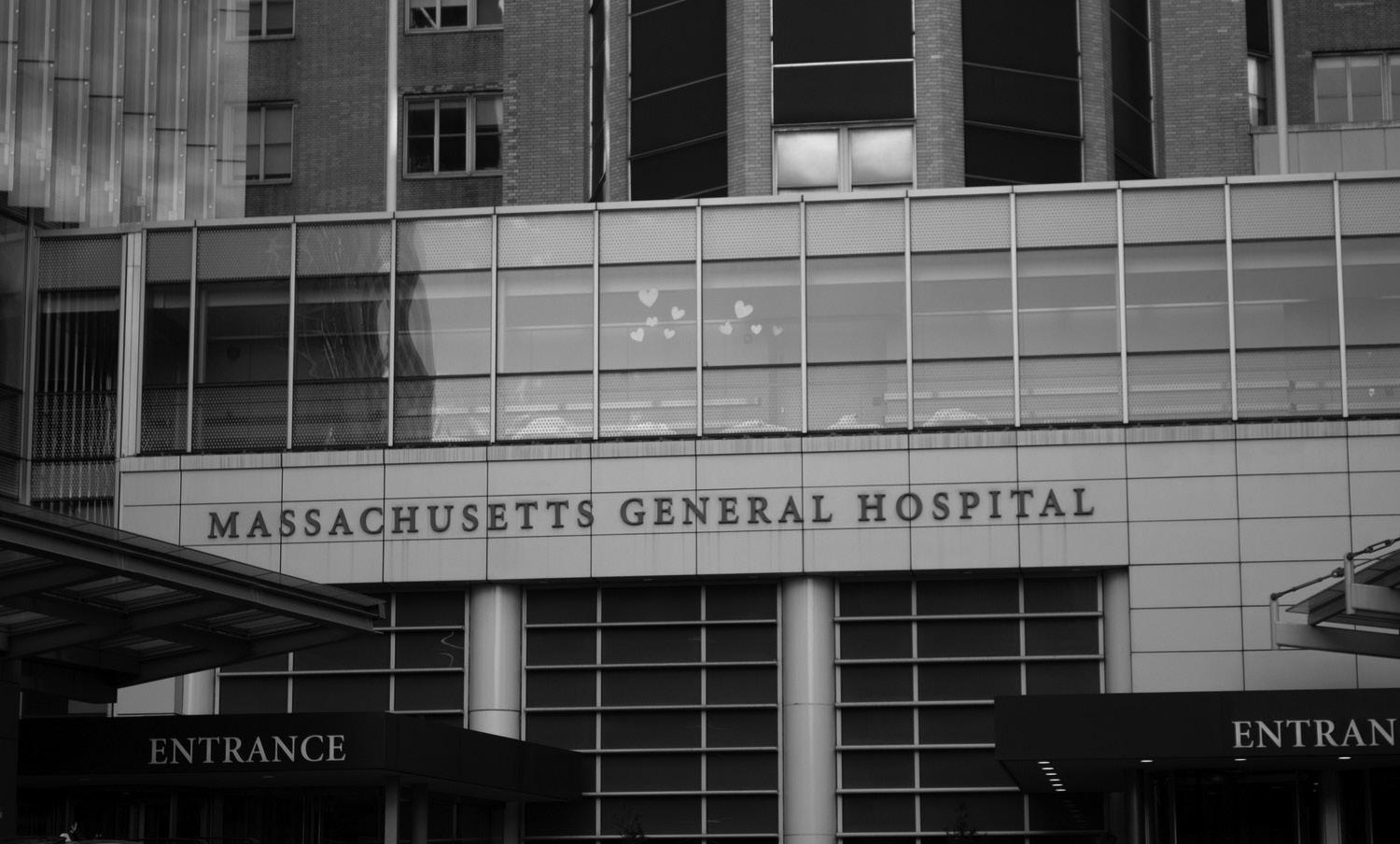
al information to immigration authorities. Many immigrants are already avoiding going out even to schools or businesses for fear of exposure to ICE officers.
“Patients should not be forced to balance a need for medical care with a fear of detention,” the letter read.
Employees on the letter also asked MGB to push back on the White House’s attack on trans healthcare, emphasizing that “families of gender-diverse youths should not be threatened with a loss of the care that they need.”
A January executive order threatened to revoke federal funding for hospitals that offered gender-affirming care to children, although the order was temporarily blocked by a federal judge. If the order proceeds, MGH will be vulnerable to losing such funding, since it is currently a provider of transgender health services.
The letter also marked the first major show of public pressure on MGB — the state’s largest private employer, with over 82,000 staff — to resist funding threats and other policies of the Trump administration which have shaken trans and immigrant communities in the Boston area.
Vandana L. Madhavan ’98, a specialist at MGH and a co-author of the letter, told The Crimson in an interview that work among her colleagues was sparked by their disappointment that Mass General Brigham hadn’t “come out with a stronger, more forceful statement.”
“A lot of the focus has been on research funding that has been threatened,” Madhavan said. “But we’re talking about all of this.”
“Our patient communities are threatened,” she continued, adding that some patients were now afraid of coming to the hospital for treat-
Donors Rush To Support Harvard
UNIVERSITY. Harvard received more than $1 million in donations in the 24 hours after Garber’s letter.
BY DHRUV T. PATEL AND GRACE E. YOON CRIMSON
After Harvard publicly rejected the Trump administration’s demands, a wave of support — and money — has come rushing in.
In the 24 hours after Harvard
President Alan M. Garber ’76 announced that he would not comply with the White House, the University received more than 3,800 online donations totaling more than $1 million, according to a person familiar with the matter.
The surge — more than 40 times Harvard’s average daily intake in April — was a striking show of support for Garber’s forceful stance, drawing praise from alumni, faculty, and even some non-Harvard affiliates.
And it comes at a pivotal moment as Harvard stares down a $2.2 billion cut in federal funding and continues to recover from a $151 million drop in donations last year.
To some longtime givers, Garber’s stand was a sign that Harvard is beginning to reclaim the conviction — and fighting spirit — they feared it had lost.
Peter L. Malkin ’55, the namesake of the Malkin Athletic Center, said he upped his donation to back Harvard in what he saw as a critical moment of trial.
“It’s a time of special need, and I have faith in the current leadership,” he said. “I’m not talking about the Corporation — I’m talking about the president and the provost. Michael T. Kerr ’81 — the former co-chair of the Harvard College Fund Executive Committee — said the outpouring of support from alumni signaled it was a “critical point in time” for fundraising efforts.
“We’re back on track, and at long last we can reconnect and start to make the lockdown commitments,” he said. Following Hamas’ Oct. 7, 2023, attack on Israel, some of Harvard’s biggest donors paused their donations in high-profile statements, citing what they called an institutional failure to address campus antisemitism.
Within two weeks of Oct. 7, the Wexner Foundation ended
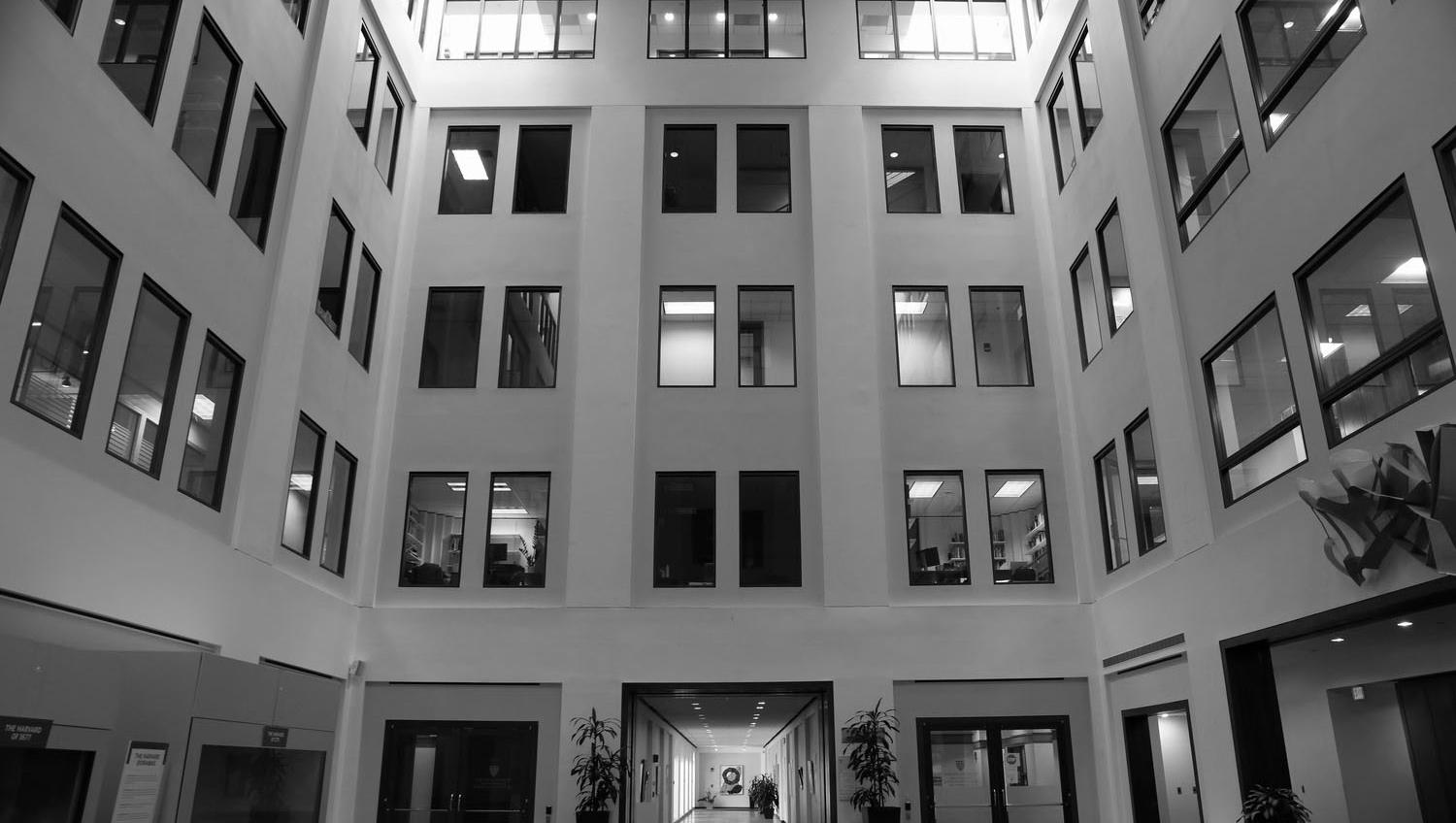
its programmatic and financial partnership with the Harvard Kennedy School, condemning Harvard’s response to Hamas’ attack as “dismal.”
Hedge fund manager Kenneth C. Griffin ’89 — who previously donated $300 million to the Faculty of Arts and Sciences — announced in January 2024 that he would pause donations to Harvard over its handling of antisemitism on campus.
So far, none of the high-profile donors who fled Harvard last year have indicated that they plan to resume their donations in light of Garber’s stand. But the reaction to Monday’s announcement indicates that the tide of donor opinion may have turned. Harvard administrators have wasted no time in turning the support into an opportunity to woo donors and alumni who have become disillusioned with Harvard’s handling of campus protests and antisemitism.
Just three hours after Garber indicated he would defy the White House’s demands on Monday, Faculty of Arts and Sciences Dean Hopi E. Hoekstra wrote to top Harvard College donors seeking their support.
“This is a critical time for Harvard, specifically, and for higher education, more generally,” she wrote in an email obtained by The Crimson.
Hoekstra offered in the email to individually meet with mem-
bers of the Harvard College Executive Fund Committee — a group of top donors — “to discuss your perspective on the road forward for the FAS.”
Faculty have also encouraged alumni to give to Harvard as it braces for an escalating faceoff with Washington.
University Professor emeritus Laurence H. Tribe said that he has seen overwhelming support from alumni to up their donations to Harvard in the wake of the $2.2 billion federal funding cut.
“I’m getting a huge, huge response from people, not only alumni and not only former students of mine — of whom there are thousands — but also from people who never had a thought about Harvard that was positive in their lives,” he said.
Tribe added that several faculty members have also indicated to Harvard administrators that they were willing to take a cut in their salaries provided that the saved funds would be used to support research whose federal funding hangs in limbo.
“There are also a number of professors who are considering the possibility of voluntarily accepting a reduction in a salary on the understanding that if the amount that they decide to forego is contributed to research programs that are under pressure as a result of federal cutbacks,” he
House Oversight Committee Starts Investigation Into Harvard
BY DHRUV T. PATEL AND GRACE E. YOON CRIMSON STAFF WRITERS
Republicans on the House Committee on Oversight and Government Reform opened an investigation into alleged civil rights violations at Harvard over its response to campus antisemitism.
In a five-page letter addressed to Harvard President Alan Garber ’76, committee chair Rep. James Comer (R-Ky.) and Rep. Elise Stefanik (R-N.Y.) asked the University to hand over communications between Harvard officials, faculty, and staff regarding demands issued by the Trump administration on Friday.
The Thursday letter alleged that Garber’s refusal to comply with the demands revealed the University was “unwilling to prevent unlawful discrimination.”
“No matter how entitled your behavior, no institution is entitled to violate the law,” Comer and Stefanik wrote.
A Harvard spokesperson Jason A. Newton wrote in a statement that Harvard is reviewing the committee’s inquiry which “appears to be a direct response to the University’s commitment to uphold its independence and constitutional rights.”
The move comes just three days after the Trump administration slashed $2.2 billion in federal grants and contracts and one day after the
Internal Revenue Service reportedly began making plans to strip Harvard of its tax-exempt status.
The requested documents include correspondence on “merit-based” reform to Harvard’s hiring and admissions practices; on diversity, equity, and inclusion programs; on governance reforms; and on admissions policies for international students who “may have views contrary to that of the United States.”
Comer and Stefanik alleged the practices were in violation of Title VI of the Civil Rights Act, which the White House used to justify slashing $400 million in federal funding from Columbia University in March.
They also asked for any documents regarding efforts to empower senior faculty members and weaken the influence of faculty activists — both of which were requested by the Trump administration on Friday.
And they asked for correspondence regarding reforms to programs and student groups at Harvard they accused of promoting antisemitism on campus, as well as disciplinary procedures.
The Trump administration has asked Harvard to derecognize pro-Palestine student organizations and penalize their members.
Earlier this month, Harvard placed the Harvard Undergraduate Palestine Solidarity Committee on probation and banned the organization from hosting events until July. Unrecognized student
groups have continued to hold events on campus but have faced tighter restrictions from Harvard College administrators.
In the letter, Comer and Stefanik took aim at the $151 million Harvard received from foreign governments between January 2020 and October 2024, citing a study that linked a rise in foreign funding to increased campus antisemitism. The lawmakers asked Harvard to share any internal communications regarding funding from foreign governments.
The lawmakers also accused Harvard of violating Title IX law by allowing transgender women to compete on Harvard’s athletic teams and use women’s restrooms and locker rooms.
Harvard has until May 1 to respond to the committee’s request for documents.
Comer and Stefanik also reserved their right to request that Garber and other Harvard employees sit in for a transcribed interview in Washington.
The last time a Harvard president — Garber’s predecessor, Claudine Gay — testified before Congress, it spelled the swift end of her time in Massachusetts Hall. Gay’s testimony also preceded the launch of a yearlong congressional investigation into antisemitism allegations at Harvard, which was spearheaded by Stefanik.
said.
A University spokesperson declined to comment on whether the faculty proposal had been offered or been accepted.
Harvard Business School graduate Mark E. Pelofsky ’84 said that he had been dismayed by Garber’s initial response to the Trump administration’s demands, but chose to up his donation following Monday’s stand.
“Everyone is supportive, and many people I know have given donations, many of whom like me have not been recent donors,” he said.
Pelofsky, like Malkin, said that they had donated to a University-wide unrestricted fund managed by the Office of the President to give Harvard administrators as much bandwidth as possible to invest as they see fit.
“We’re mostly symbolically giving him money that he can use at his discretion, perhaps, to offset some of the cuts that might be coming from the federal government,” he said.
But Kerr warned that while the alumni support was notable, it alone could not match the magnitude of the $2.2 billion cut to the University’s multi-year commitments.
“The reality is, the annual giving, even if we do a tremendous job, it can’t offset — it can help, but it can’t offset —the scale that the federal government is talking about,” he said.
Harvard Alumni Association spokesperson Cameron Wolfsen wrote in a statement that “we are deeply appreciative of our alumni whose support is vital and enables the university to have a lasting impact in areas of teaching, learning, research and innovation.”
The tidal wave of support Harvard has already seen, however, may only be the beginning of a monthslong donation surge for the University.
Charles H. Grice — a member of the Dean’s Council at the Harvard Kennedy School — wrote in a statement that continued giving was pivotal as the University takes on the White House.
“I have never been more proud or more worried for my University than the challenges and opportunities of this moment,” he wrote.
Eve J. Higginbotham — a former member of the Harvard Board of Overseers, the University’s second-highest governing body — said that while she has not increased her gifts yet, Garber’s response had inspired her to up her givings in the future.
“I’m just very proud as an alum, and I think this is the right decision and the right path,” Higginbotham said. “I believe that Harvard will lead others along with them in this path.”
dhruv.patel@thecrimson.com grace.yoon@thecrimson.com
BY DHRUV T. PATEL AND GRACE E. YOON CRIMSON STAFF WRITERS
on Israel, Republicans have repeatedly argued that the University has strayed from its mission. The criticisms have taken an explicitly ideological tone, with Republicans accusing Harvard of providing a home for academic programs that tilt to the left. In a Wednesday post on Truth Social, Trump accused Harvard of “hiring almost all woke, Radical Left, idiots and ‘birdbrains’ who are only capable of teaching FAILURE to students and so-called future leaders.”
In a letter to Garber in January 2024, leaders of the House Ways and Means Committee Workforce warned that they were willing to strip Harvard of its tax-exempt status over its response to pro-Palestine protests on campus. But federal law bars the president from “directly or indirectly” asking the IRS to conduct tax investigations.
dhruv.patel@thecrimson.com grace.yoon@thecrimson.com
How Donations Surged After Garber Challenged Trump
BY DHRUV T. PATEL AND GRACE E. YOON CRIMSON STAFF WRITERS
Harvard is receiving an average of 88 online donations an hour as alumni rally behind University President Alan M. Garber ’76’s resounding rebuke of the White House’s demands on Monday.
Between Garber’s email and 9 a.m. on Wednesday, Harvard received nearly 4,000 online gifts totalling $1.14 million, according to a giving update produced by Harvard Alumni Affairs and Development and obtained by the Crimson.
Forty-seven percent of the development office’s gifts have been directed to the Harvard College Fund and 14 percent to Garber’s unrestricted fund, according to the document. Seventy-seven percent of the gifts have been less than $250.
The surge in donations to Harvard comes as it faces a $2.2 billion cut in federal funding. Last year, Garber grappled with a large-scale donor exodus after accusations that it tolerated antisemitism following Hamas’ Oct. 7, 2023, attack on Israel. While no high-profile donors have indicated that they plan to resume their donations, the surge indicates that small-dollar donors are flocking back to Harvard.
On Sunday, the day before Garber’s message, Harvard received just 37 donations. The next day, donations surpassed 1,000, then continued to rise.
Just six hours after the message, sent around 1 p.m. on Monday, Harvard had received 450 individual donations, surpassing the total number of gifts it had received in the week prior, according to the document. But the largest surge in donations came in the aftermath of Trump’s $2.2 billion funding cut, announced around 7:30 p.m. on Monday.
According to the development office, between 8 p.m. and midnight on Monday, Harvard received nearly 1,000 online donations — an average of more than 200 donations an hour.
Donations also saw a slight uptick around 4 p.m. earlier that day, the same hour that Faculty of Arts and Sciences Dean Hopi E. Hoekstra offered to meet with members of the Harvard College Fund Executive Committee, a group of top donors, according to an email obtained by The Crimson. On Wednesday, Harvard received more than 2,200 online donations — an increase of nearly 1,000 compared to what it received the previous day, according to the document.
Donations rose steadily, reaching a mid-morning peak around 10 a.m. on Tuesday, just
minutes after Trump threatened to strip Harvard’s tax-exempt status in a scathing post on Truth Social. Though the number of donations declined after midday, they spiked again later in the day, hitting a high of 238 donations at 10 p.m.
Donations continued to rise early Wednesday morning, recording 304 online gifts by 9 a.m. Figures for later Wednesday and Thursday were not included in the report. The pressure on Harvard continued to rise toward the end of the week, with the Internal Revenue Service reportedly planning to revoke Harvard’s tax-exempt status and a letter from the Department of Homeland Security that it could lose the ability to enroll international students. The influx of donations is a mere fraction of the $2.2 billion in funding that the White House has now slashed — and is likewise small in comparison to the $528 million Harvard
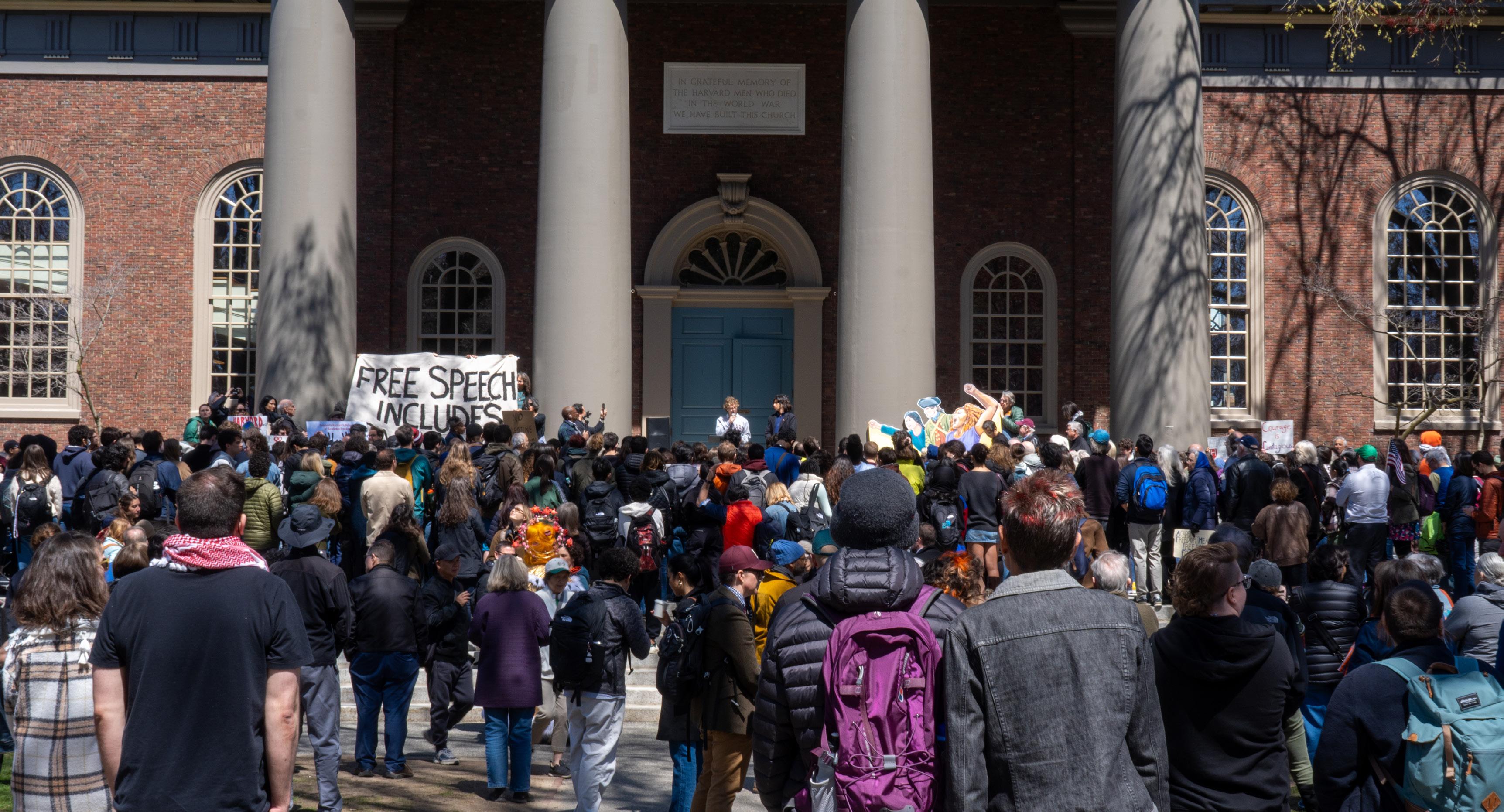
FROM PAGE 1
Clash With Trump Leaves Little Room for Retreat
The changes were tied to earlier funding losses — grants cut because they clashed with Trump’s agenda, stalled review processes for new federal research dollars — but they provided a grim preview of how Harvard’s operations could shudder under the weight of massive, targeted cuts.
So far, the sweeping effects have galvanized Harvard affiliates — rather than discouraging them.
University Professor emeritus Laurence H. Tribe ’62 said that some faculty members have indicated to Harvard administrators that they would take a cut in their salaries provided that the saved funds would support research projects in limbo.
And within 24 hours of Garber’s message on Monday, Harvard raked in more than $1 million through 3,800 online donations from alumni — more than 40 times the University’s average daily intake in April. In the hours after the White House announced the $2.2 billion funding pause, contributions to Harvard spiked — even more than they did when Garber’s email first landed in alumni inboxes.
A National Movement
Harvard did not plan to carry the banner for higher education’s resistance to Trump.
University leaders indicated in February that they would pick their battles — saying they were inclined to band together with other schools and under umbrella organizations, rather than leading the charge alone.
But the forceful symbolism of Harvard’s resistance on Monday provoked a tidal shift in higher education — where most university leaders had thus far been reluctant to challenge the White House.
Stanford University cose swift-
ly to publicly stand behind Harvard, with its leaders condemning Trump’s show of force and praising Harvard’s resistance.
“Harvard’s objections to the letter it received are rooted in the American tradition of liberty,” the school’s president and provost wrote in a statement to the Stanford Daily on Monday.
And on Monday, Columbia — whose earlier capitulation had inaugurated a bleak mood across academia — issued a striking about-face, declaring that Columbia would resist “heavy-handed orchestration” from the government.
Though the university’s acting president, trustee Claire Shipman, defended the concessions Columbia made in March, she wrote that the school would “reject any agreement in which the government dictates what we teach, research, or who we hire.”
Garber’s refusal, it seemed, had given universities a new path forward. No longer was appeasing Trump a necessary strategy — or even a viable message.
A day after Columbia’s statement, more than 70 former and current university presidents released a message affirming Garber’s refusal to comply with the administration’s demands.
It was signed by former presidents from Columbia, Dartmouth College, and the University of Pennsylvania — and Drew G. Faust, who led Harvard through the start of Trump’s first term.
“When the Trump administration insists on anyone’s compliance with likely illegal and unconstitutional conditions, it is threatening everyone’s freedom from arbitrary rule,” read the statement.
Too Far To Fold?
Garber’s Monday message framed the dispute with the Trump admin-
istration as a matter of Harvard’s
First Amendment rights, arguing that the government’s demands were aimed at controlling academic life — not at combating antisemitism.
At the same time, he did not take compromise entirely off the table.
In a letter to federal agencies on Monday, the University’s lawyers highlighted changes they said it had made to fight antisemitism and promote ideological diversity — including new restrictions on gatherings and signage and the suspension of Harvard’s partnership with Birzeit University in the West Bank.
“Harvard remains open to dialogue about what the university has done, and is planning to do, to improve the experience of every member of its community,” the lawyers wrote.
But the torrent of measures Republicans have taken against Harvard in the past week makes reconciliation significantly less likely. Not only have lawmakers intensified their demands, they have also taken direct steps to further restrict Harvard’s academic life — making it clear that punishing ideology is the point.
While Garber accused the Trump administration of using federal power to punish academic dissent, Republicans have openly embraced that framing — arguing that Harvard’s research priorities and culture are at odds with American values.
The DHS demanded protest-related records for international students, the IRS drafted plans to revoke Harvard’s tax-exempt status, and high-profile House Republicans launched a civil rights probe. In justifying the revocation of two DHS grants, Secretary of Homeland Security Kristi Noem argued that they “funded Harvard’s public health propaganda” and supported research
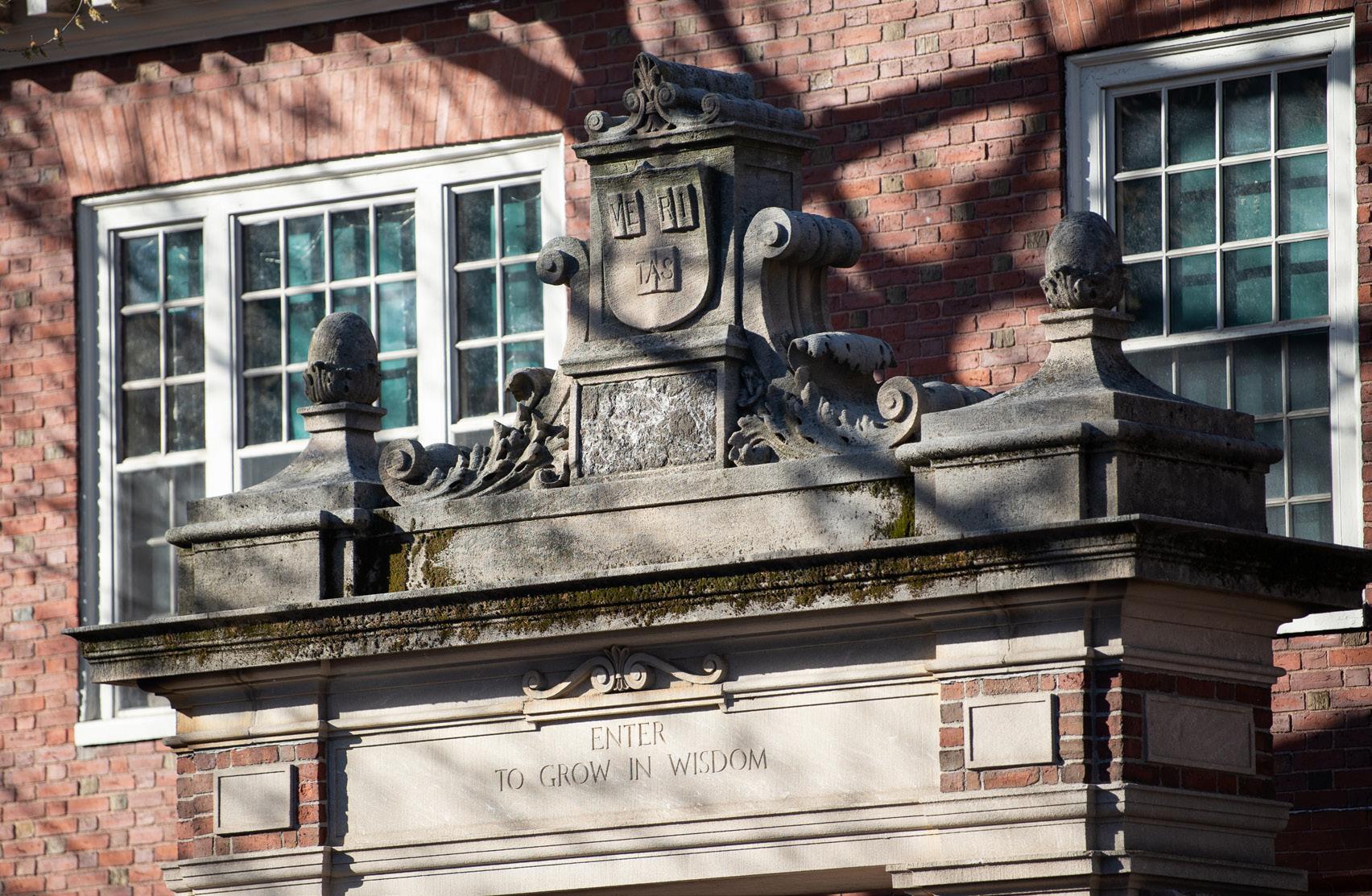
that “branded conservatives as far-right dissidents.”
Even before the Trump administration’s advances, Garber made the case that the federal government was overstepping its authority, writing that the language of the letter to Harvard made its ideological aims plain.
A retreat now would risk validating the very pressure that Garber condemned on Monday. His refusal to comply has made Harvard the national poster child of elite university defiance — but it has also made retreat more difficult, with no easy off-ramp.
Now, Harvard’s leaders are no longer faced with the question of whether to respond to Trump — but how far they are willing to go, and what costs they are ready to bear.
dhruv.patel@thecrimson.com grace.yoon@thecrimson.com
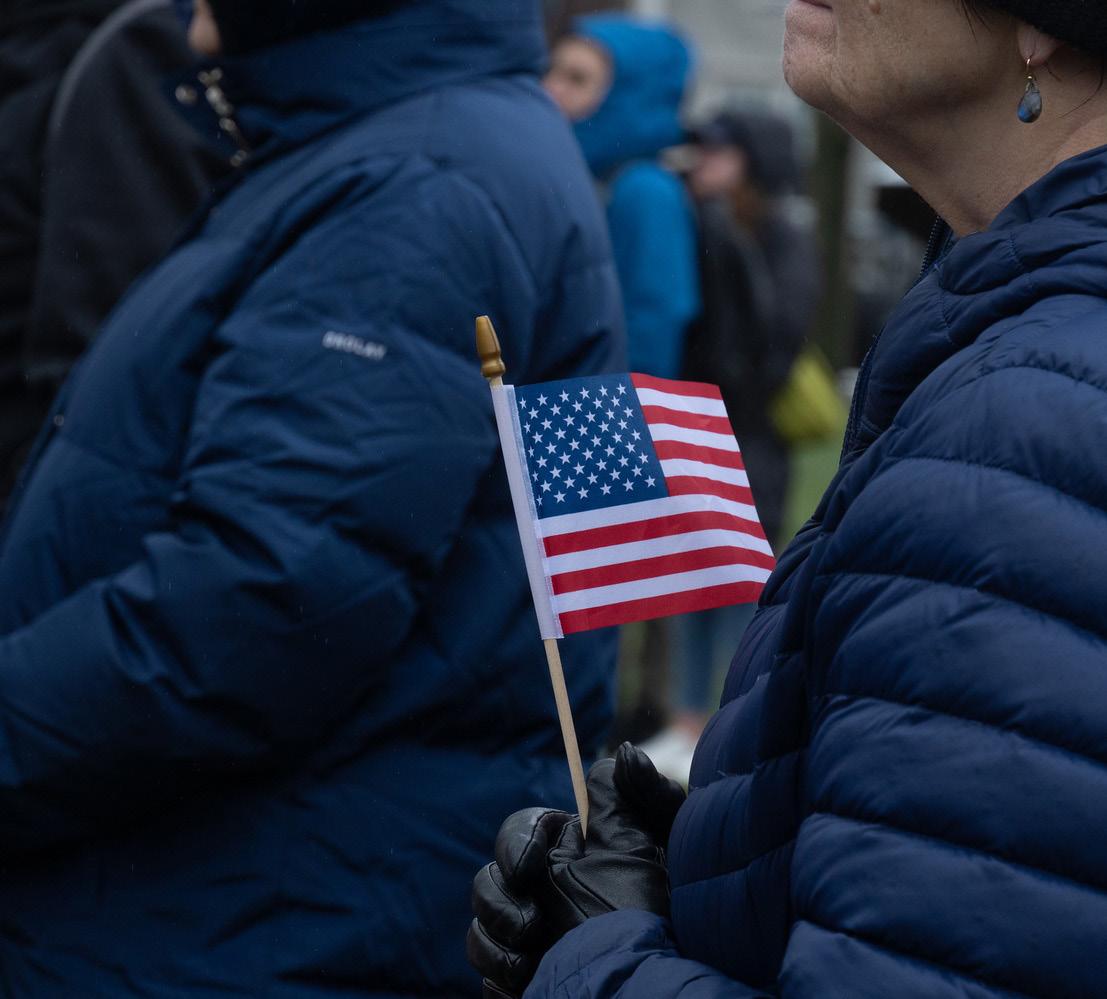
Trump Admin Freezes More Than $2 Billion in Federal Funding
The Trump administration paused
$2.2 billion in multi-year grants and $60 million in multi-year contracts to Harvard over its decision earli-
er today to reject the White House’s demands — a dramatic escalation in its crusade against the University. The move came just hours af-
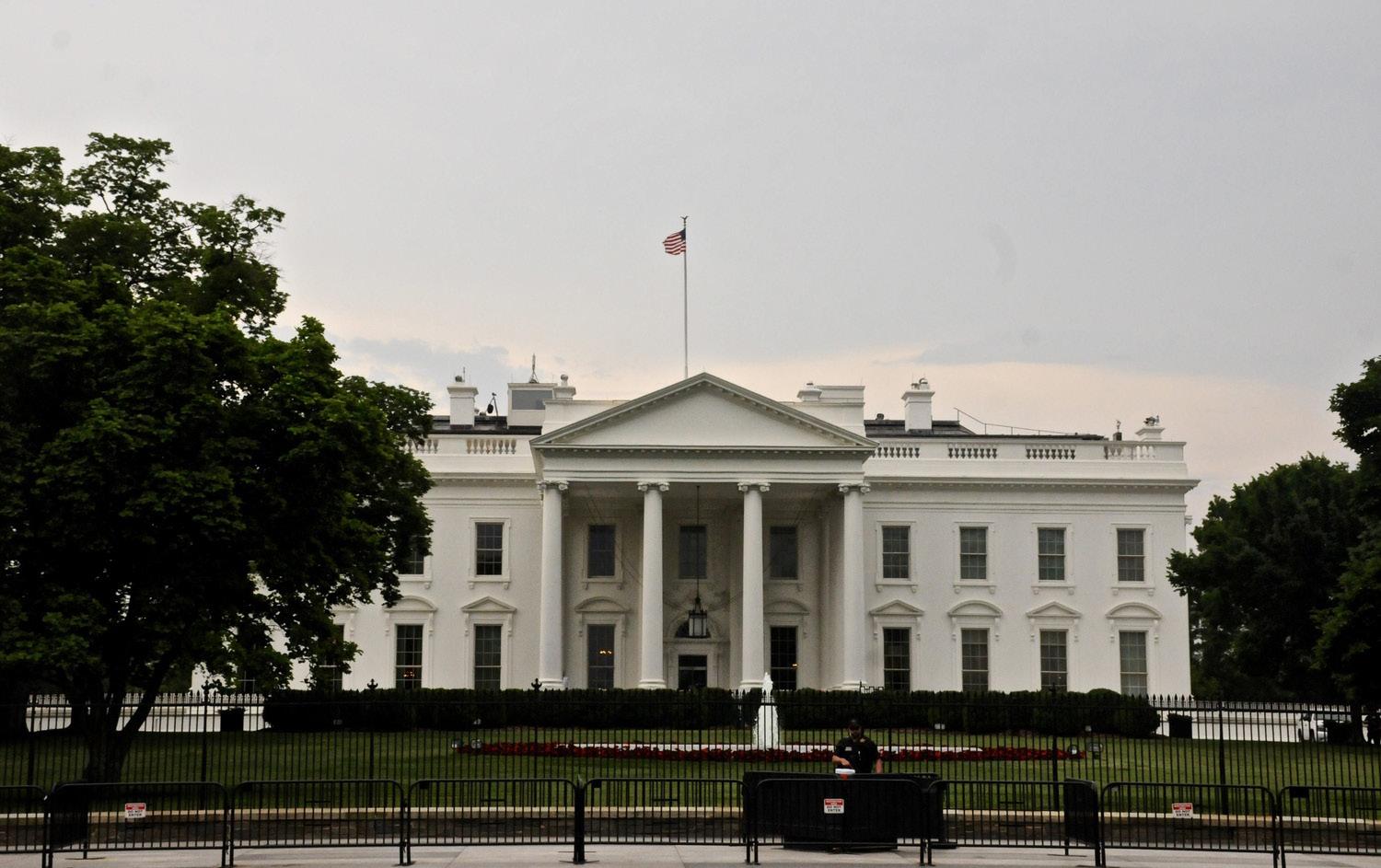
ter Harvard President Alan M. Garber ’76 issued a resounding rebuke of the Trump administration’s demands, calling them coercive and beyond federal authority.
The federal antisemitism task force wrote that Garber’s decision was a clear sign that Harvard was refusing to “commit to meaningful change” to address antisemitism on campus.
“Harvard’s statement today reinforces the troubling entitlement mindset that is endemic in our nation’s most prestigious universities and colleges – that federal investment does not come with the responsibility to uphold civil rights laws,” the task force wrote in a statement.
The cut is only a fraction of the $9 billion the Trump administration put under review just two weeks before.
Unlike the initial review — which targeted federal funding awarded to “Harvard and its affiliates” — the Monday announcement only stated that the cut would affect Harvard, with no mention of its affiliate institutions. The Department
of Education, the White House, and the General Services Administration all did not immediately respond to requests for comment on whether the cut would include Harvard’s hospital system.
In his message Monday afternoon, Garber argued that the Trump administration’s revised demands on Thursday exceeded the legal scope of the Title VI of the Civil Rights Act and were in violation of the First Amendment, but stopped short of threatening litigation against the administration.
But top Harvard administrators have told affiliates in private — before the funding review was announced — that they would not be opposed to leading a battle against the White House in certain cases. A Harvard spokesperson did not immediately respond to a request for comment on whether the University was considering filing a lawsuit.
The funding cut to Harvard is the largest among the six cuts to Ivy League institutions that the Trump administration has announced so far.
Harvard received $686 million
in federal funding during the 2024 fiscal year.
In his message earlier Monday, Garber condemned the Trump administration’s targeting of research funding, which he characterized as essential to “life-changing” scientific advances.
“For the government to retreat from these partnerships now risks not only the health and well-being of millions of individuals but also the economic security and vitality of our nation,” he wrote. He described the conditions on Harvard’s funding as “assertions of power, unmoored from the law, to control teaching and learning at Harvard and to dictate how we operate.”
“We proceed now, as always, with the conviction that the fearless and unfettered pursuit of truth liberates humanity — and with faith in the enduring promise that America’s colleges and universities hold for our country and our world,” he wrote.
Funding Cut Sets Stage for Legal Battle With Harvard
POLITICS. Trump’s funding freeze of more than $2 billion to Harvard could push the University closer to a lawsuit.
BY DHRUV T. PATEL
By revoking more than $2 billion in federal grants and contracts, the Trump administration has forced Harvard President Alan M. Garber ’76 to make a final choice — sue or stand down.
If Garber’s message to Harvard affiliates on Monday vowing to defend the University in the face of federal threats is any sign, a courtroom showdown between Massachusetts Hall and the White House may be imminent.
In a break from the rhetorical tug-of-war that has defined Harvard’s standoff with the Trump administration, Garber — for the first time — alleged that Trump’s campaign against Harvard was not just an example of government overreach, but outright unlawful.
He argued that the White House’s demands — which include ending diversity, equity, and inclusion programs, having regular federal reviews of academic programming, and derecognizing pro-Palestine campus groups — were in violation of Title VI of the Civil Rights Act and infringed on Harvard’s First Amendment rights.
Instead of delivering a response to the White House himself, Garber turned to two law firms with lawyers deeply embedded in Trump’s orbit: one, a former Trump appointee, and the other, an ethics advisor to the Trump Organization.
While Garber stopped short of announcing a lawsuit, his decision to invoke specific legal statutes — and respond through outside counsel — signals that Harvard is laying the groundwork for a legal challenge.
“The University will not surrender its independence or relinquish its constitutional rights,” he wrote in his message on Monday.
Harvard Law School professor Noah R. Feldman ’92 said that Garber’s message hinted that a courtroom battle with the White House is more likely than ever.
“His letter makes it clear that
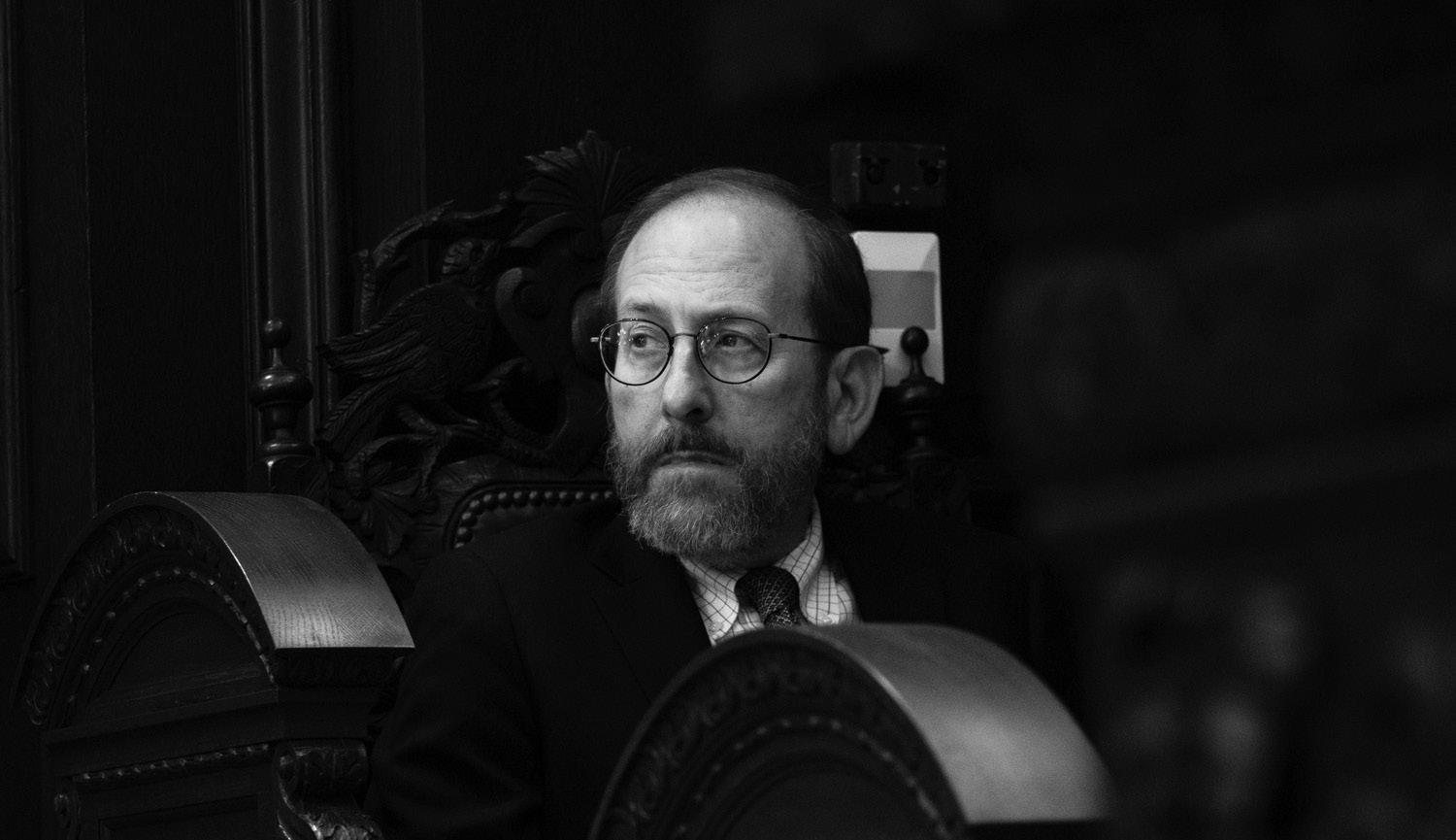
Harvard’s not going to comply with any unlawful demands,” he said. “From that, it follows that if the Trump administration acts unlawfully, the University will have no other recourse but to go to court.”
If Harvard were to take the Trump administration to court, it would become the first institution whose funding was cut to legally challenge the White House. While other universities have challenged the National Institutes of Health and the Department of Energy over changes to research funding policy, none have taken the Trump administration head-on over large-scale funding cuts.
When Columbia was stripped of $400 million in federal funding over the same concerns of campus antisemitism, it chose to quietly acquiesce within days to the Trump administration’s demands.
But Columbia’s funding remains suspended, and then-interim President Katrina A. Armstrong was ousted after facing intense backlash from students and faculty — a series of events that likely reinforced Harvard’s decision to not fold.
Former Harvard President Lawrence H. Summers urged the University to use its $53.2 billion endowment to safeguard against immediate funding cuts and consider litigation against the White House.
“Given the extreme, oppressive, and extralegal character of the federal government’s demands, and
Harvard’s strength as an institution and capacity morally, financially, and through litigation, the case for acting as President Garber did is overwhelming,” he said.
William D. Arazia, a professor at the Brooklyn Law School, said that if Harvard chose to sue the Trump administration, it would set both a legal precedent and strategic roadmap for other universities.
“If they win some kind of preliminary relief in court, then maybe other universities will jump on the bandwagon or maybe those universities will jump in right away, because Harvard’s leading the way, and they could follow behind in the parade,” he said.
Unlike other universities targeted by the Trump administration, Harvard is the only institution that received formal demands — and a window of time to respond — before any federal funding was revoked or threatened.
Peter H. Lake ’81, a higher education attorney and a professor at the Stetson School of Law, said that Garber’s firm stance prior to the funding cut could strengthen the case that the White House’s move was retaliatory.
“They put an interesting card on the table because by standing their ground before the funding was actually cut, they set the federal government up for a possible argument that it’s retaliatory,” he said. “I doubt that that was an accident either.”
HMS Leaders Tell Staff to Expect Layoffs and Far-Reaching Cuts
BY AVANI B. RAI AND SAKETH SUNDAR CRIMSON STAFF WRITERS
Harvard Medical School leadership told employees at a town hall Wednesday morning that the school was preparing to make staffing reductions and cut programs as a result of the Trump administration’s actions against Harvard — including a $2.2 billion freeze.
“I know this news is sobering. I know that many of you have been expecting this news, and so to actually be clear and transparent about it, it’s difficult for all of us,” said HMS Executive Dean for Administration Lisa M. Muto, according to a recording of the town hall obtained by The Crimson.
HMS Chief Financial Officer
Julie Joncas — who noted that 75 percent of HMS’ research is federally funded — pointed to federal research funding cuts, a loss of nonprofit status for the University, an endowment tax increase, tariffs, and legal fees as key risks that put the school in a bind. Spokespeople for HMS and the University did not immediately respond to requests for comment.
On Tuesday, United States President Donald Trump threatened to revoke Harvard’s tax-exempt status on his social media platform Truth Social. Should Trump make good on his threats, the “billion and a half dollars in new philanthropy every year” the school receives would be “quickly at risk,” Joncas said. Joncas acknowledged that HMS employees might feel that Har-
vard’s administration is not supporting them enough. But she said the White House’s far-reaching threats could make it impossible for the University to stanch the impact of funding cuts.
“It’s important to remember each school is feeling this but is feeling it differently, and it’s important for us to realize we’re kind of all under attack right now, and that is why it’s so hard for Harvard at this point,” Joncas said. “Harvard has to figure out the solution and what we can do with what limited resources we’re going to be left with when all the dust settles.”
Joncas said that HMS only had about $39 million in reserves and had already been struggling with financial challenges, historically counting on philanthropic gifts to make up the difference.
“It doesn’t take an accountant to look at this chart and see when you continue to spend more than you take in in revenue. It is an unsustainable equation,” she said. “And what you’re seeing is we’re doing that year over year.”
While strong philanthropy historically supported the school’s initiatives, after fiscal year 2022, Joncas said, “a lot of that changed” when donors fled after Harvard’s handling of Hamas’ Oct. 7, 2023 attacks on Israel.
Donations to Harvard’s endowment dropped by more than $150 million in fiscal year 2024 after several major billionaire donors publicly cut ties with Harvard over its handling of campus antisemitism.
Joncas also cited a challenging macroeconomic environment, ref-
erencing pandemic-related inflation, Russia’s war in Ukraine, and the Trump administration’s recent tariffs.
“You can see with these numbers, it’s not going to last very long, and it’s not going to get us through FY 26,” Joncas said.
“We’re starting what is a very difficult time, and it’s a bit of a crisis right now.”
Muto said the school’s financial situation was unprecedented, even in comparison to HMS’ response to the 2008 financial crisis, and would require more fundamental changes at the school.
“This is different from what happened in 2008 when there was a lot of cost-cutting around the edges in hopes that things would fight themselves,” Muto said.
“This exercise is really more about how can we shrink our enterprise in order to be more sustainable, and so it’s a much bigger ask, and it takes a lot more thinking,” she added.
As a result, “tough decisions” to shrink the school’s programs would be necessary, Muto said.
“We value the whole breadth of what happens here at Harvard Medical School, but we’re going to be in an era now in which we can’t do everything,” she added.
Simone Leary, Chief Human Resources Officer at HMS, called the situation “a very difficult time for everyone” and told employees to “please take care of yourselves” in anticipation of the “permanent” layoffs.
avani.rai@thecrimson.com saketh.sundar@thecrimson.com
He added that given Harvard’s status as the nation’s oldest and wealthiest university — and the high-profile nature of the White House’s campaign against the Ivy League — the case could be pushed toward the highest possible court.
“I am absolutely convinced that they would get the attention of the Supreme Court if they want to fight this,” Lake said.
Feldman warned that higher courts, like the Supreme Court, have not previously weighed in on a matter involving a unilateral decision to revoke federal funding for a university — and that a lawsuit could face unanticipated challenges.
“There are also very complicated legal questions that the Supreme Court has not yet answered about what legal procedures are necessary for a party who has had its funding unfairly cut to go through to get a court to properly order the restoration of that funding,” he said.
But Garber’s hardline in his Monday message — the fiercest rebuke yet by a Harvard administration against the White House — marked a decisive turn toward confrontation.
“If you decide you’re going to fight, you might as well go ahead and shout that from the mountaintops, because you’ve already committed to fighting,” Arazia said.
dhruv.patel@thecrimson.com grace.yoon@thecrimson.com
Harvard-affiliated researchers have begun receiving stop-work orders on contracts worth tens of millions of dollars less than one day after the Trump administration announced a $2.2 billion pause of federally-funded research Monday evening.
David R. Walt, a professor at Harvard Medical School and Brigham and Womens’ Hospital — who has been displayed as the face of the University’s research accomplishments on its public homepage, harvard.edu, since Monday — received an immediate stop work order from a Health and Human Services grant supporting ALS or Lou Gehrig’s disease.
Walt told The Crimson that the grant was worth upwards of $300,000 per year.
Spokespeople for the University did not immediately respond to requests for comment.
“You are hereby directed to cease all work,” the order to Walt read.
“You are instructed not to issue further orders for materials or services related to the portion of the contract/order subject to the stopwork order, to direct any subcontractors to comply with the contents of this order, and to otherwise minimize costs,” the order continued.
“Cancellation of the project will delay our ability to complete this important project and could ultimately lead to poorer outcomes for the many patients who suffer from ALS,” Walt wrote in a statement to The Crimson.
While more than $110 million in NIH grants to Harvard-affiliated researchers were cancelled since the end of February, all featured themes of gender and sexual identity, Covid-19 and its vaccine, or health disparities — topics which have been targeted in the administration’s efforts to erase research and language that conflicts with its
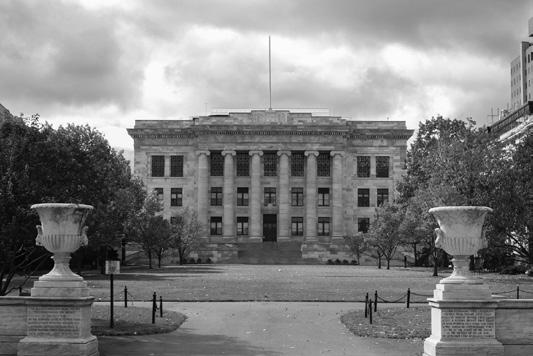
agenda.
But the grants and contracts now receiving stop-work orders do not appear to have any clear connection to those previously targeted themes.
HMS Professor Donald E. Ingber also received stop-work orders on two contracts related to his work on human organ chips — microfluidic devices lined with living human cells — to find new therapeutics to treat Acute Radiation Syndrome and reduce non-human primate testing of drugs and vaccines. The most valuable of the terminated contracts was worth over $15 million.
“I will have to stop research on the development of radiation countermeasure drugs that is directly relevant for the safety of our citizens, astronauts, and soldiers,” Ingber wrote in a statement to The Crimson.
“I will lose funding that supports the salaries of numerous students, postdoctoral fellows, technicians, and senior staff members who are currently supported by these contracts and doing amazing work,” he added.
While Walt had received a notification from HHS cancelling the multi-year project for its second year of funding last week, he wrote that the second notice delivered Tuesday morning stated that the grant was cancelled “effective TODAY.” Walt told The Crimson that any appeals to the cancellation would have to be from the University.
“I don’t know what the University plans to do at this point. Too early to know,” he wrote. Grants funded by the National Institute of Health typically ask grantees to submit reimbursement petitions, allowing the federal government to immediately block the flow of money into labs. Many of the contracts targeted by the Trump administration have had a large portion of the money already disbursed.
Other researchers affected include School of Public Health professor Sarah Fortune, who received a similar stop-work order on her $60 million contract that supported an international group of researchers researching tuberculosis. Fortune’s stop-work order was first reported by the Boston Globe. A spokesperson for the School of Public Health declined to comment on the cancellation.
avani.rai@thecrimson.com
saketh.sundar@thecrimson.com
HSPH Begins Layoffs As Federal Funding Cuts Add Up
cuts.”
“Unfortunately, this will lead to layoffs,” Simon wrote.
The Harvard School of Public Health is laying off employees, shrinking its campus footprint, and making targeted cuts to departmental budgets in response to the Trump administration’s escalating attacks on Harvard — including pulling more than $2 billion in federal funding and threatening the University’s eligibility to enroll international students.
The budget-tightening at HSPH, the Harvard school most reliant on federal funds, comes after the school received three stop-work orders worth more than $60 million in the last two days and as its neighbor, Harvard Medical School, warned employees of impending layoffs on Wednesday.
The layoffs at HSPH have already begun taking place and have mostly impacted staff and researchers whose projects at the schools have lost funding this year. HSPH is not targeting a specific number of layoffs and intends to honor existing commitments to faculty.
HSPH spokesperson Stephanie Simon wrote in a statement that the school is facing a “significant budget crisis” and is taking a targeted approach to fiscal austerity by working to “identify strategic priorities and make sustainable budget
The school is also exiting their leases on two buildings and evaluating their agreements with other buildings to cut expenses “by consolidating onto our core campus,” according to Simon.
The first building is located at 90 Smith Street and houses HSPH’s human resources office and the Harvard University Police Department’s office for the Longwood campus. The second lease is for the fourth floor of the Landmark Center, a 40,000 square-foot space which houses laboratories, faculty and graduate student offices, and classrooms.
HSPH has not issued acrossthe-board cuts to departmental budgets yet, but it has asked departments to model potential budget scenarios and estimate how each would impact their research and educational operations.
The moves follow several cost-cutting measures HSPH instituted last month — including shrinking the admissions pools for several of its Ph.D. programs and pausing its search for a dean of research — in anticipation of budget pressures. Federal research funding composed 46 percent of HSPH’s revenue in fiscal year 2025. As of last month, at least a dozen grants at HSPH had been terminated. One of the three stop-work orders received in
the last two days affects HSPH professor Sarah Fortune’s $60 million contract which supported an international collective of tuberculosis researchers. The two other grants focused on breast cancer tumor sequencing and the relationship between coffee drinking and cancer. The purse tightening comes as the White House has ramped up its pressure campaign against Harvard in the last two days. The Internal Revenue Service is planning to revoke the University’s tax-exempt status, CNN reported Wednesday. And on the same day, the Department of Homeland Security sent a letter to Harvard threatening to pull its eligibility to enroll international students on the condition that the University share information about international students’ disciplinary records and participation in protests. Roughly 40 percent of HSPH’s student body is international. Simon cited the DHS’s threats to international student enrollment as a factor contributing to the school’s growing budget crisis.
“We are working to minimize the impact on our outstanding workforce while protecting the heart of our research and educational missions,” Simon wrote.
CENTRAL ADMINISTRATION
Harvard Will Fight Trump’s Demands
RESISTANCE. Harvard
President Alan Garber declared that the University will “not surrender” to threats from Trump.
BY DHRUV T. PATEL AND GRACE E. YOON CRIMSON STAFF WRITERS
Harvard will not comply with the Trump administration’s demands to dismantle its diversity programming, limit student protests, and submit to far-reaching federal audits in exchange for its federal funding, University President Alan M. Garber ’76 announced in a message to affiliates Monday afternoon.
“No government — regardless of which party is in power — should dictate what private universities can teach, whom they can admit and hire, and which areas of study and inquiry they can pursue,” he wrote.
The announcement comes two weeks after three federal agencies announced a review into roughly $9 billion in Harvard’s federal funding and days after the administration sent its initial demands, which included dismantling diversity programming, banning masks, and committing to “full cooperation” with the Department of Homeland Security.
And on Friday, the Trump ad-
‘Proud
BY
ministration delivered a longer and more focused set of demands than the ones they had shared two weeks earlier, asking Harvard to derecognize pro-Palestine student groups, audit its academic programs for viewpoint diversity, and expel students involved in an altercation at a 2023 pro-Palestine protest on the Harvard Business School campus.
It also asked Harvard to reform its admissions process for international students to screen for students “supportive of terrorism and anti-Semitism” — and immediately report international students to federal authorities if they break University conduct policies.
It called for “reducing the power held by faculty (whether tenured or untenured) and administrators more committed to activism than scholarship” and installing leaders committed to carrying out the administration’s demands.
And it asked the University to submit quarterly updates, beginning in June 2025, certifying its compliance.
Garber condemned the demands, calling them a political ploy disguised as an effort to address antisemitism on campus.
“It makes clear that the intention is not to work with us to address antisemitism in a cooperative and constructive manner,” he wrote. “Although some of the
demands outlined by the government are aimed at combating antisemitism, the majority represent direct governmental regulation of the ‘intellectual conditions’ at Harvard.”
Robert K. Hur ’95, a former Trump appointee, and William A. Burck — two attorneys representing Harvard — sent a letter to officials from the three agencies on Monday.
“Neither Harvard nor any other private university can allow itself to be taken over by the federal government,” the attorneys wrote. “Accordingly, Harvard will not accept the government’s terms as an agreement in principle.”
Garber’s response on Monday follows an intense campaign from Harvard faculty and Cambridge residents to resist the Trump administration’s demands.
On Saturday, nearly 500 Harvard affiliates and Cambridge residents gathered in Harvard Square to urge Garber to resist the demands — a call he appeared to answer on Monday.
Garber’s Monday email marked the most forceful condemnation yet from any Harvard official against the Trump administration’s now months-long campaign against the University.
In the lead-up to the funding review, Garber had tried to quietly walk a middle road between federal pressure and resistance
on campus. In March, Harvard ousted personnel at its Center for Middle Eastern Studies, suspended programming focused on Israel and Palestine at the Harvard Divinity School, and terminated its partnership with the oldest university in the West Bank — seemingly a preemptive measure to fend off scrutiny from Washington.
And while the Trump administration acknowledged the moves as an “expression of commitment” to addressing antisemitism on campus, it was not enough to halt the $9 billion funding review or curb the flow of new demands.
Harvard’s stance marks a sharp break from the precedent set by Columbia University, which conceded to federal demands days after a $400 million cut to federal funding. Despite its compliance, the White House has yet to reinstate Columbia’s funding — a risk that Harvard seems to be ready to confront head-on rather than yield to.
Of the six Ivy League universities that have had their federal funding cut or challenged, Harvard is the only to outwardly reject the Trump administration’s demands — a move that some affiliates said was only fitting for the nation’s oldest and wealthiest university.
Just minutes after Garber’s email landed, Harvard launched
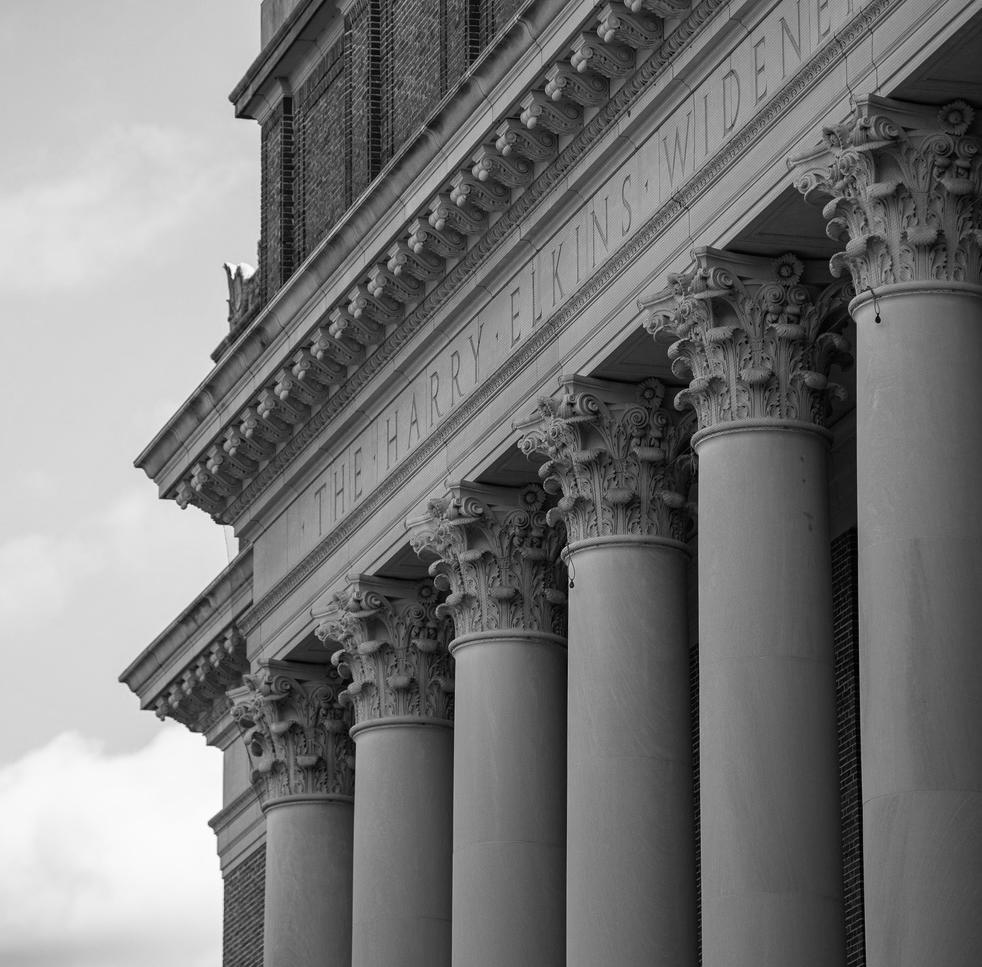
a full-scale media blitz: a dedicated webpage outlining the impact of potential funding cuts, a flurry of posts on X, and a message on Instagram — all aimed at broadcasting its defiance. Garber’s move was met with quick approval from students, faculty, and some of Harvard’s most prominent affiliates.
“Very glad to see President Garber leading Harvard — and I hope all universities — in resisting extralegal and unreasonable demands from the federal government,” he wrote in a post on X.
dhruv.patel@thecrimson.com grace.yoon@thecrimson.com
Former Harvard President Lawrence H. Summers — who has often criticized Harvard’s response to pro-Palestine protests on campus – applauded Garber’s decision in a rare praise for Harvard’s current administration.
To Be a Harvard Student’: Undergrads Laud Garber’s Message
Harvard students breathed “a sigh of relief” Monday afternoon after University President Alan M. Garber ’76 announced Harvard would not comply with a lengthy list of White House demands — a move students said left them “pleasantly surprised.”
The Crimson spoke with more than two dozen undergraduates who applauded Harvard’s leadership for standing their ground against a “blatant attack on academic freedom.”
“One of the big reasons I chose Harvard was a place to explore intellectual freedom, explore interests, learn about different perspectives,” Henry D. Pahlow ’28 said. “The statement really ties down those values. It’s Garber standing up to the administration — which is trying to silence us.”
“I think it was a very brave stand, and I’m glad he took it,” he added.
On Friday, the Trump administration laid down a list of demands
to Harvard, including calls to end recognition of pro-Palestine student groups, screen for international applicants “supportive of terrorism and anti-Semitism,” utilize Harvard police to stop campus disruptions, and suspend students involved in occupations of University buildings.
The demands built on an initial list sent to Harvard two weeks earlier, which had conditioned nearly $9 billion in federal grants and contracts on the dismantling of diversity programming and increased restrictions on campus protests. Following Garber’s Monday announcement, the White House froze $2.2 billion in federal funding to the University.
Several students, including Yaroslav Davletshin ’28, said the demands to Harvard were a blatant act of censorship, more concerned with “silencing voices of dissent” than eradicating campus antisemitism.
“Trump is trying to send a clear message that pro-Palestinian opinions are not welcome in the United States,” Davletshin said. “This is not about antisemitism, as Trump claims.”
Ethan Hooper ’25 took issue with the Trump administration’s call for Harvard to implement “a comprehensive mask ban” across campus.
“What’s funny to me is throughout 2020, and a lot of Covid, it’s like, ‘Oh, it’s my right not to wear a mask,’” he said. “It should equally be your right to wear a mask.”
Hooper added that he views the White House’s fight against antisemitism as inconsistent with its harsh policies on immigration.
“I think it’s total BS to be like, ‘Oh, we’re gonna combat antisemitism by being xenophobic and anti-immigrant,’” Hooper said. “I don’t really see how those two things work together.”
A spokesperson for the Trump administration did not immediately respond to a request for comment for this article.
With billions on the line, students said they were invigorated after Garber’s Monday statement hit their inboxes.
“It made me feel really proud to be a Harvard student, actually,” Eric D. Hwang ’25 said.
Several undergraduates said Harvard’s Monday messaging — including Garber’s email, a new website showcasing the impacts of University research, and a blitz of posts on official social media channels — set a courageous example for the rest of higher education.
“Harvard has such a huge influence that whatever Harvard does, it’s gonna obviously impact what other schools end up doing,” Muhammed U. Khan ’28 said. “A big name like Harvard ends up setting an example for other schools.”
Hooper said Harvard’s stand could pave the way for higher education institutions to form a united front against the federal government’s threats to revoke funding.
“If you have a bunch of universities who stiffen up or are like, ‘Hey, we’re not gonna comply,’ what is the U.S. government gonna do?” he said.
Some students, however, said University leadership did not speak out against the White House as early as they should have.
“I was happy with the message of the email, but I think that the call to action was sort of long overdue,”
Maya I. Dailey ’28 said. “He owed the community a response a little earlier.”
Davletshin said Harvard’s Monday firestorm caught him off guard because top leadership did not similarly condemn the Trump administration’s decision to revoke the student visas of 12 Harvard affiliates.
“I was pleasantly surprised that Harvard has some guts because I was disappointed that they did not offer a strong response to the revocation of international student visas,” he said.
“This response on their part has changed, to a certain degree, my opinion of the Harvard administration,” Davletshin added.
Several student groups with political affiliations took to social media Monday evening with strong statements in response to the University’s messaging.
Harvard College Democrats wrote in a statement on Instagram that they were “pleased by Harvard’s decision to stand firm in the face of threats to academic freedom, free speech, and student safety.”
The Harvard Republican Club,
however, wrote that private institutions are not entitled to “receive federal funding in perpetuity” in an Instagram post.
“Harvard has shown itself to be a partisan consumer of the American taxpayer dollar,” the group wrote, adding that they are “hopeful that a resolution can be reached and that Harvard will return to the American principles that formed the great men of this nation.”
The Harvard Undergraduate Palestine Solidarity Committee — a group the Trump administration specifically said Harvard must “end support and recognition for” in the demands — wrote in a Monday Instagram post that Garber’s email fell short.
The PSC added that the University announcement failed to make tangible commitments to international students or student activists — common targets of the White House’s recent demands. “Stand up Harvard,” they wrote. “We cannot rest until every one of Trump’s demands is fought off.”
samuel.church@thecrimson.com cam.srivastava@thecrimson.com
Harvard’s Researchers Take Center Stage in Funding Showdown
BY
David R. Walt, a professor at Harvard Medical School and Boston’s Brigham and Women’s Hospital, lost hundreds of thousands in research funding from the Trump administration last week — just two months after receiving the nation’s highest honor for technological achievement.
By Monday afternoon, Walt and his lab at the Wyss Institute were front and center on Harvard’s home page as the face of the University’s campaign to present itself as a defender of science against funding threats from the White House.
The harvard.edu page, now titled “Research Powers Progress,” has been entirely made over to display the development of Harvard-affiliated technologies and scientific breakthroughs — ranging from wearable robotic devices for stroke survivors to CRISPR treatment for sickle cell patients. The website remodel was part of a media rollout accompanying a forceful Monday declaration by Harvard President Alan M. Garber ’76 that the University would not negotiate with the Trump admin-
istration over its federal funding. Hours later, the administration paused $2.2 billion in multi-year grants and contracts.
“My lab is involved in developing new diagnostics tests for neurodegenerative diseases (Alzheimer’s, Parkinson’s, ALS), cancer (breast, ovarian, pancreatic, and others), and infectious diseases,” Walt wrote in a statement to The Crimson.
“We are making incredible progress and cancellation of funding would set these projects back and would significantly delay their availability to diagnose, predict drug effectiveness, and monitor relapse,” he added. If funding is revoked, many scientists at HMS and affiliate hospitals could lose their labs, their teams, and their careers. Several researchers declined to comment publicly for fear their funding would be targeted by the federal government.
The projects currently on the chopping block — unlike $110 million of NIH grants cancelled since late February — appear to have no underlying political motivation. The contracts identified cover everything from pediatric cancer treatment to particulate matter exposure’s effects on military veterans.
Joren C. Madsen, director of the Mass General Hospital Transplant Center, said his lab — where the first-ever successful pig kidney transplant was performed last year — relies heavily on federal funding.
“Since my research requires significant overhead, it wouldn’t take much of a loss to shut my lab down completely,” Madsen wrote. A government antisemitism task force memo obtained by The Boston Globe listed more than 60 contracts worth a total of $255 million dollars that the Trump administration identified for termination.
But with a total price tag of up to $9 billion — and possibly even steeper consequences as prominent Republican politicians call to revoke all federal funding — researchers are left to watch the showdown between Garber and Trump as the funds that keep their labs’ lights on hang in the balance.
Several researchers whose contracts were included in the memo were not aware their projects were in jeopardy until they were contacted by The Crimson. But despite the mounting risks, more than a dozen lab directors said they support Garber’s decision to stand firm.
Harvard’s lawyers addressed the risk to University research in their letter to the Trump adminis-
tration refusing to comply with demands, describing the threats as a condition that Harvard “accede to these terms or risk the loss of billions of dollars in federal funding critical to vital research and innovation that has saved and improved lives and allowed Harvard to play a central role in making our country’s scientific, medical, and other research communities the standard-bearers for the world.
“These demands extend not only to Harvard but to separately incorporated and independently operated medical and research hospitals engaging in life-saving work on behalf of their patients,” they added.
Five independent HMS-affiliated Boston Hospitals — Massachusetts General Hospital, Brigham and Women’s Hospital, Boston Children’s Hospital, Dana-Farber Cancer Institute, and Beth Israel Deaconess Medical Center — received more than $1.56 billion in funding from the National Institutes of Health alone during fiscal year 2024. Now, they are poised to bear the brunt of the administration’s potential cuts. Although these hospitals are deeply entwined with Harvard through shared faculty and collaborative research, they operate independently. They are not gov-
erned by the University, nor do they benefit from Harvard’s $53.2 billion endowment. Instead, they function as financially independent nonprofits, with federal funding making up a significant portion of their research support.
“This would potentially cause a large number of people to be laid off, as the teaching hospitals have much smaller endowments than Harvard University, and those funds also have to support a patient care mission that they cannot ignore,” HMS Neurology Professor Clifford B. Saper wrote in a statement to The Crimson.
But in a letter to researchers Monday night, Mass General Brigham CEO Anne Klibanski said she believed the funding threats to Harvard were “not applicable to our separately incorporated and independently operated medical and research hospitals.”
“The impact of the federal investigation to Mass General Brigham and all Harvard Medical School teaching hospitals remains unknown,” Klibanski wrote.
Dyann F. Wirth, a professor at the Harvard School of Public Health, wrote that federal funding also sustains graduate students and postdoctoral fellows who “represent the best and brightest and the future of scientific discovery.”
“Our graduates go on to lead their own research groups, join the private sector fueling the biopharma industry and teach the next generation.” Wirth wrote. “We could lose a generation of scientists.”
The University reflected this sentiment in an analysis of the long-term impacts of Harvard’s research arm, noting that Harvard researchers had reported 402 innovations, 155 U.S.-issued patents, and one Nobel Prize in 2024. While researchers could turn to non-governmental sources for funding, most told The Crimson that contingency plans were up in the air.
“I am working to diversify my funding sources, but there simply is not enough industry of philanthropic support to make up for the loss of federal funding,” wrote HMS professor Evan D. Rosen. But Rosen — like dozens of his colleagues across the University and its affiliated hospitals — said Garber’s decisive action was the right move, regardless of the consequences it could have on his work.
“My lab, my life’s work, stands to lose a lot. But it needed to be done,” Rosen wrote.
avani.rai@thecrimson.com
When the Trump administration demanded “immediate cooperation” with a series of conditions on Harvard’s federal funding, the University stayed silent for two weeks.
But on Friday, the government quietly sent Harvard a new, more detailed list of orders — and three days later, University President Alan M. Garber ’76 delivered a scathing rejection of what he described as “unprecedented demands being made by the federal government to control the Harvard community.”
It is not clear if the Friday letter prompted Harvard’s shift from embracing cautious dialogue with the Trump administration to outright rejection.
But the new demands show how deeply President Donald Trump and his administration aim to shape the inner workings of Harvard.
When the University publicly released a memo listing the new demands on Monday, they drew instant backlash from academics who described them as unacceptable and counter to decadeslong traditions of academic freedom.
Former Harvard Medical School dean Jeffrey S. Flier said in an interview that if the University had acceded to the demands, it would have marked “the end of Harvard as an independent institution.”
“It was overwhelmingly overreaching any reasonable level of interest in seeing Harvard change,” Flier said.
Government professor Steven Levitsky wrote in a text message that the new demands were “impossible to accept.”
“It would have been the end of Harvard — a death blow to academic freedom,” Levitsky wrote.
The initial demands sent by the White House two weeks ago asked Harvard to implement some concrete policies such as banning masks and eliminating diversity, equity, and inclusion programs — though most asks remained vague.
The Friday demands were more concrete and would have impacted wide swaths of the University. They would have required Harvard to disempower faculty leaders involved with campus activism, punish members of prominent pro-Palestine student groups, and conduct ideological screenings of international applicants. And they would have mandated an external audit of schools and programs that “reflect ideological capture” or “fuel antisemitic harassment” — from human rights research centers to the entire Harvard Medical School.
Below, The Crimson analyzes how the demands in Friday’s letter converge with the debates that have played out on Harvard’s campus in recent years — and national battles over the future of higher education.
Reforming Governance
In the letter, the Trump administration specifically instructed Harvard to begin “reducing the power” held by tenured and untenured faculty and administrators who are “more committed to activism than scholarship.”
The letter did not define what it would mean to prioritize activism over scholarship. But many faculty have participated in anti-Trump demonstrations, and a contingent of professors led the most vocal push for Harvard to resist federal demands.
The letter’s language also seemed to invoke conservatives’ arguments that some academic disciplines — particularly fields that study race, gender, and sexuality — are activism, not scholarship.
Auditing Academic Programs
The Trump administration also asked Harvard to commission a third party to audit programs that contribute to antisemitism or “reflect ideological capture.” The White House demanded audits of entire schools — including the Harvard Graduate School of Education, Divinity School, School of Public Health, and Medical School.
Unlike demands sent to Columbia University last month, Friday’s letter to Harvard did not include orders to place programs into academic receivership. But it tasked the proposed external audit with singling out faculty members “who discriminated against Jewish or Israeli students or incited students to violate Harvard’s rules following October 7” for discipline.
The Trump administration also named individual programs, including the Religion and Public Life Program at HDS, the Harvard Kennedy School Carr Center for Human Rights, the Harvard Law School International Human Rights Clinic, the François-Xavier Bagnoud Center for Health and Human Rights, the Center for Middle Eastern Studies, and the Department of Near Eastern Languages and Cultures. Harvard has already made changes to several of the listed programs — which some students and faculty criticized at the time as attempts to preemptively appease Trump. HSPH announced in March that it had severed ties with Birzeit University in the West Bank. Later that month, Harvard administrators dismissed two faculty leaders at CMES over allegations that the center’s programs skewed pro-Palestine.
And, days later, the Divinity School announced it had suspended its Religion, Conflict, and Peace Initiative, which was housed under the RPL program named in Trump’s letter.
Enforcing ‘Viewpoint Diversity’
Trump ordered Harvard to launch a third-party audit for “viewpoint diversity” among affiliates — and demanded that the University reshape the composition of its faculty and student body if the audits found Harvard failed to meet the administration’s standards.
The letter explained that if the Trump administration found Harvard lacked viewpoint diversity, the University would be required to onboard “a critical mass” of faculty or students to improve the ideological diversity on campus.
It also stipulated that if current faculty prove to be “not capable” of hiring colleagues or admitting students that would improve their departments’ viewpoint diversity, they would be “transferred to the closest cognate department” that does meet the demands.
The audits would take place annually until at least 2028, according to the letter.
Harvard’s faculty has long skewed liberal, with more than 77 percent of surveyed professors identifying as liberal in The Crimson’s annual FAS survey in 2023.
Conducting Plagiarism Checks
The letter asked Harvard to check faculty members’ scholarship for plagiarism and conduct plagiarism reviews in its hiring process.
The demands for plagiarism reviews invoke a tactic of choice among right-wing activists, who used plagiarism allegations against former Harvard President Claudine Gay to call for her ouster. After Gay’s resignation, a string of anonymous complaints accused other Black woman scholars at Harvard of plagiarism.
Conservative activists — including right-wing activist Christopher F. Rufo — have argued that plagiarism has become endemic in academia as
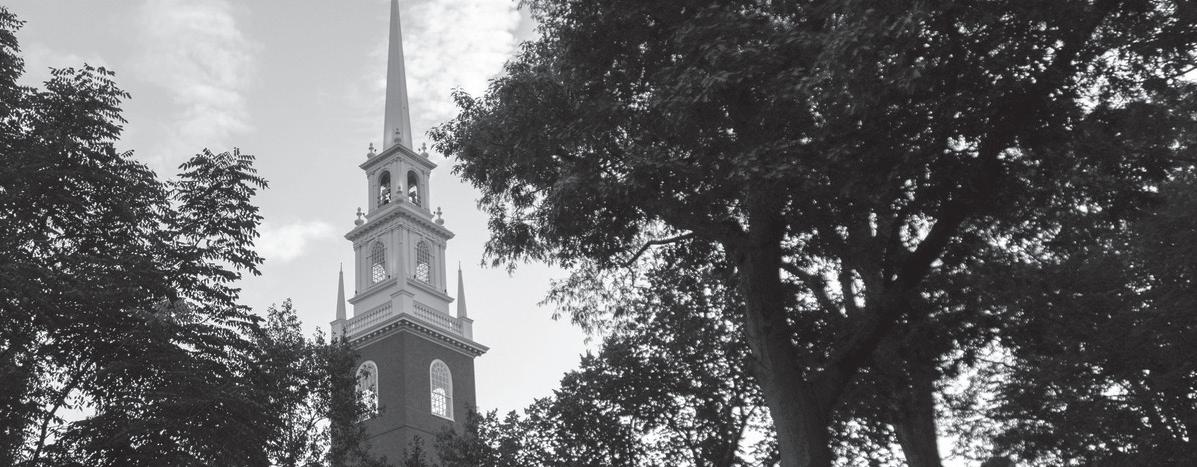

a result of efforts to hire and retain a diverse faculty.
Overhauling Student Discipline
The Friday letter also asked Harvard to call in police against student protesters “to stop incidents that violate time, place, and manner rules when necessary.”
Unlike many peer institutions, the University opted against sending in police to clear the pro-Palestine encampment in Harvard Yard last spring. The patient approach spared Harvard from the disruptive arrests that rocked college campuses nationwide. More than 3,100 people were arrested or detained for their participation in spring 2024 campus protests.
The letter demanded that Harvard consolidate its disciplinary policies under the University’s central administration and shift responsibilities away from school-level Administrative Boards and the Faculty of Arts and Sciences Faculty Council. After the encampment, Ad Boards across several graduate schools took a lenient approach to participants, with only the Harvard College Ad Board issuing harsher punishments. But the Ad Board lightened its penalties after the Faculty Council criticized its handling of undergraduates’ cases.
The demand to restructure Harvard’s disciplinary procedures is in line with the Trump administration’s other calls to place universities’ operations under administrative, rather than faculty, control.
Derecognizing Student Organizations
The Trump administration also instructed Harvard to pull recognition and funding from student organizations that promoted criminal actions or “anti-Semitic activity.” It singled out five groups for derecognition — the Harvard Undergraduate Palestine Solidarity Committee, Harvard Graduate Students 4 Palestine, Law Students 4 Palestine, Students for Justice in Palestine, and the National Lawyers Guild — and asked Harvard to discipline their officers and members.
The Trump administration also ordered the University to retroactively discipline students who participated in a pro-Palestine demonstration at Harvard Business School in October 2023, the occupation of University Hall in November 2023, and the Harvard Yard encampment last year.
The proposed overhaul to Harvard’s protest rules mirror similar demands that Columbia exercise “full law enforcement authority, including arrest and removal of agitators,” and punish student groups and their members for violating the school’s policies. Columbia hired 36 new campus patrol officers following Trump’s demands.
The Trump administration also ordered Harvard to enforce a mask ban with “serious and immediate penalties for violation, not less than suspension.”
Eliminating Diversity, Equity, and Inclusion
The letter also demanded Harvard cease any hiring or admissions decisions “based on race, color, religion, sex, or national origin.”
Since the Supreme Court ruled Harvard’s race-conscious admission unconstitutional in 2023, College admissions officers have admitted students without knowing their race. And last June, the FAS stopped requiring that candidates for faculty positions submit statements detailing their commitments to diversity.
The letter from federal officials also requested that the University submit data from its hiring and admissions processes. The data would include the race, color, national origin, grade point average, and performance on standardized test scores of applicants and candidates.
It’s not clear whether the demands would actually require the University to change its admissions processes — which already must follow federal law. But the administration’s request for data suggests that they want Harvard to demonstrate its reforms are tangibly changing the makeup of its student body and employees.
Harvard has made changes that obscure the demographics of its newly admitted classes — adjusting the formulas it uses to report data and delaying the release of information on the latest admissions cycle.
Monitoring International Students
Friday’s letter also asked Harvard to ramp up its monitoring of international students as the Trump administration continues its revoking student visas en masse — sometimes targeting pro-Palestine activists, often acting without explanation. So far, at least 12 Harvard students and recent graduates had their visas revoked.
The demands, which ask Harvard to “immediately report” international students for violating conduct policies, would require the University to stay in near constant contact with the Trump administration.
The letter also seemed to propose an ideological litmus test for applicants. It asked Harvard to screen international students during the admissions process to shut out students “hostile to the American values and institutions inscribed in the U.S. Constitution and Declaration of Independence.”
The letter also ordered Harvard to exclude international applicants who are “supportive of terrorism or anti-Semitism” — terms the Trump administration has wielded broadly to describe criticism of Israel.






and
“on a
basis.”

Harvard Language Programs Struggle NEWS
Seder Loses Adams Support
HOUSES. Adams House administrators withdrew a room booking and funding for an ‘anti-Zionist seder’ on Saturday.
Adams House administrators withdrew funding and revoked a room reservation for a Saturday “anti-zionist Passover seder for liberation” organized by a group of Adams students as Harvard College ramps up efforts to limit the presence of unrecognized student organizations on campus.
House administrator Matthew Burke accused the students of organizing the event with an unrecognized student group, Harvard Jews for Palestine, and demanded they cancel the seder. The students disputed Burke’s claim, and held the event anyway — without intervention from Adams.
In withdrawing support, Burke cited a Harvard College Student Handbook Policy prohibiting unrecognized student groups from receiving “access, support, or benefits” from the College and from conducting “any activity at Harvard.” Burke wrote in a Tuesday email to an organizer obtained by The Crimson that “it appears the publicity sent out on schmooze” — a reference to the “Adams-schmooze” House mailing list — “matched an Instagram post from Jews for Palestine, an unregistered student organization.” J4P frequently organizes pro-Palestine protests on campus.
“It seems that the SIP Seder on Saturday is co-sponsored by Jews
for Palestine, which presents an issue,” Burke added, referring to the Student-Initiated Programing fund that enables students to apply for grants to sponsor non-academic events.
He scratched the room reservation and asked the organizer to email the mailing list to announce the event’s cancellation.
But event organizer Tamar Sella ’25 did not email to announce the event had been canceled. Instead, Sella denounced House administrators in a Saturday message to the mailing list — and wrote that students would be “moving forward” with the seder.
“We — as Jewish students in Adams House — will be gathering in the Adams dining hall TONIGHT and moving forward with our anti-Zionist seder for LIBERATION loud and proud,” Sella wrote. Despite the House threats, more than 20 Harvard affiliates attended the seder Saturday evening, which was held in a closed-door common room to the side of the dining hall.
The seder organizers did not hold the event under the name of any student group, but J4P publicized the seder in a post on Instagram and solicited RSVPs through a google form linked to their profile. Sella, an organizer for Harvard Out of Occupied Palestine — another unrecognized student group — has participated in several J4P demonstrations.
Burke cited J4P’s sponsorship as grounds for the House to withdraw its support — which included roughly $1,000 in funding for catered food, according to Sella.
Sella disputed J4P’s involvement in an interview. She said she had previously been told by the Dean of Students Office that unrecognized stu-
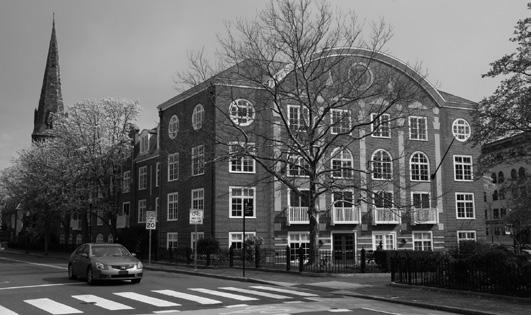
JULIAN J. GIORDANO — CRIMSON PHOTOGRAPHER
dent groups could publicize events without being considered sponsors as long as they did not include their logos on promotional materials.
“They said that a reasonable person could determine that this was sponsored,” Sella said. “A reasonable person in my books can’t because there’s zero logo on either of these pubs.”
“I’m seeing a targeted discriminant interpretation of the rules against students with dissenting opinions,” Sella added. “It makes a sad amount of sense that they’re also putting their crooked system into effect to make sure that we actually are silent.”
Adams House administrators and a College spokesperson did not respond to a request for comment over the weekend.
The seder is the second event to face intervention from Adams House administrators on accusations of being tied to unrecognized student groups.
Two weeks ago, Adams House resident Sa’maia J. Evans ’27 received a dean’s warning for reserving a room in the House for a meeting of the African and African American Resistance Organization, an unrecognized student group.
Evans condemned Resident Dean Charles “Chip” Lockwood’s warning over the House mailing list — and around 20 students gathered
in the dining hall a day later anyway for a two-hour meeting.
Neither event was shut down by House administrations, and none of the organizers have announced disciplinary consequences.
The event restrictions come less than two weeks after the Trump administration conditioned more than $8 billion in federal funding to Harvard on compliance with a list of demands — one of which includes holding unrecognized student groups accountable for violations of Harvard policy.
On the same day Harvard officials received Trump’s demands, the College placed the Harvard Undergraduate Palestine Solidarity Committee on probation, accusing them of co-sponsoring an April 2 rally hosted by multiple unrecognized student groups. (The PSC denies their involvement with the protest.)
The University is also currently facing a lawsuit alleging that Harvard has violated its policies and permitted antisemitism by allowing unrecognized groups to hold protests on campus.
Sella accused House administrators of “stifling any manifestation of Jewishness that opposes the escalating genocide in Gaza” in her Saturday email denouncing the decision to withdraw support.
“Adams admin cited the fact that the pub contained the word ‘anti-Zionist’ as one reason why our seder was brought to their attention, which makes it clear that their interpretation of Harvard policy discriminates against dissenting political views,” she wrote.
samuel.church@thecrimson.com cam.srivastava@thecrimson.com
HUA Walks Back Plan To Co-Sponsor Event
section titled “Student group accountability,” stating that both recognized and unrecognized student groups “must be held accountable for violations of Harvard policy.”
The Harvard Undergraduate Association planned and publicized an event co-sponsored by Les Adore, an unrecognized student group, before disaffiliating with the group after a Wednesday comment request from The Crimson.
The co-sponsorship was likely a violation of the College’s policies for recognized student organizations, which state that “student organizations may not co-sponsor on-campus events with external or unrecognized organizations.”
The HUA’s reversal follows the College’s April 3 decision to place the Harvard Undergraduate Palestine Solidarity Committee on probation after hosting a rally with the unrecognized student group Harvard Out of Occupied Palestine.
The same day as the PSC’s probation, the Trump administration sent a letter to Harvard demanding immediate governance changes. The list of requests included a
The HUA’s “Community Conversations” event is scheduled to take place Thursday at 6 p.m., featuring discussion of “what it means to be Harvard students in uncertain times.”
Though the HUA is its primary organizer, the event was co-sponsored by seven student organizations — which until Wednesday evening included Les Adore, a “Harvard-based” production group founded in 2023 aimed at providing creative opportunities for students from diverse backgrounds.
On Monday, the HUA posted a flyer for the event — featuring Les Adore’s logo alongside the other co-sponsoring groups — on their Instagram account. The College’s Office of Student Engagement also publicized the event in a Wednesday evening email to the student body, but did not include the digital poster.
The HUA originally invited Les
Adore to co-sponsor the event, according to one HUA member.
After The Crimson sent a comment request to the HUA co-presidents and College spokesperson Jonathan Palumbo on Wednesday evening, the HUA informed Les Adore founder Amina T. Salahou ’25 that Les Adore would no longer be involved in Thursday’s event.
Salahou wrote in response to a Crimson comment request that “Les Adore isn’t technically involved anymore as the HUA can only co-host with student-recognized groups.”
College spokesperson Jonathan Palumbo wrote that the Dean of Students Office is “in contact with the HUA.”
University policies for unrecognized student groups have long been the source of controversy, but recent demands from the Trump administration have brought them back into the limelight.
The College’s co-sponsorship policy also came under scrutiny on Saturday, when organizers of an “anti-Zionist Passover seder for liberation” — for which Adams
House withdrew support, citing sponsorship by the unrecognized group Harvard Jews for Palestine — claimed that the flyer for the event did not feature J4P’s logo.
Tamar Sella ’25, one of the organizers for the seder, said in an interview that she had previously been told by the DSO that unrecognized groups could publicize events without officially co-sponsoring, as long as they did not add their logos to flyers promoting the events.
Palumbo declined to comment on whether the Les Adore logo on the event’s promotional materials would constitute co-sponsorship and lead to disciplinary action.
The remaining co-sponsors of the event — in addition to the HUA — are all recognized student groups and academic departments: the Harvard Undergraduate Association of Ghanaian Students, Harvard Political Union, Latinas Unidas de Harvard College, Woodbridge International Society, Harvard College Nigerian Students Association,
nina.ejindu@thecrimson.com claire.simon@thecrimson.com
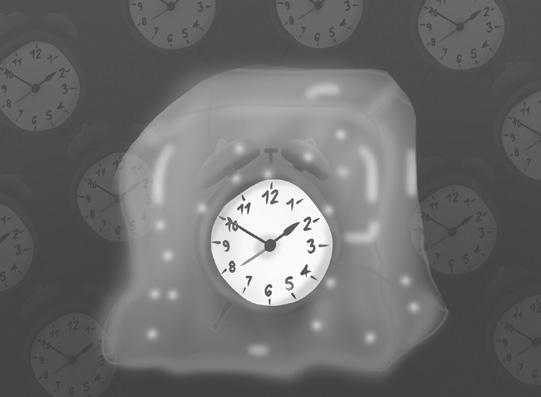
Harvard programs that rely heavily on non-tenure track instructors are facing uncertainty as they look to fill impending vacancies amid Harvard’s hiring freeze.
In particular, programs are struggling to retain or replace faculty members whose positions are under time caps, which limit the amount of time they can be employed at Harvard to two, three, or eight years. The cancellation of faculty searches across the school has made it more difficult for programs to replace timecapped faculty members whose contracts are set to expire.
Course offerings in some of Harvard’s smaller language programs, which often rely on non-tenure track instructors, have been left in limbo as the deadline for course registration approaches Wednesday night.
Harvard’s programs for African Language, Slavic Languages & Literatures, and Near Eastern Languages & Civilizations are all slated to lose instructors in less commonly taught language programs: Amharic, Bosnian, Croatian, Serbian, and Armenian. South Asian Studies also stands to lose a preceptor of Indo-Persian literature, though the instructor, Hajnalka Kovacs, said the department has been looking for ways to retain her. Parimal G. Patil, the South Asian Studies department chair, did not respond to requests for comment.
Ethnicity, Migration, Rights will be unable to offer four Asian American and Pacific Islander Studies courses that it had originally planned due to a canceled lecturer search, according to EMR chair Raquel Vega-Durán. Vega-Durán added that EMR will not lose any lecturers this year, but the hiring freeze has impacted their future plans nonetheless.
University spokespeople declined to comment on how the hiring freeze will impact teaching and on the conditions in which exceptions to the freeze would be granted. Instead, they referred The Crimson to University President Alan M. Garber ’76’s initial statement on the hiring freeze, which said it would be in place through the end of the semester and reconsidered in the future.
Lisa Gulesserian is currently the only Armenian preceptor in the NELC department, but a request for an extension on her appointment — which expires at the end of June — was not approved by the Office for Faculty Affairs.
Jay M. Harris, NELC’s chair,
wrote in a statement that it is unclear which Armenian courses will be available in the upcoming academic year.
“We hope and expect to offer instruction, but cannot definitively say we will be able to at this time,” he wrote.
Though departments are permitted to extend time caps for less commonly taught languages by up to two years, Gulesserian’s appointment was ineligible. The policy only permits departments to extend instructors’ appointments if a “timely and thorough national search” had failed — and, because of the hiring freeze, a search had not run in the first place.
Gulesserian wrote in a statement that the Office for Faculty Affairs suggested that, as a solution, the department hire a teaching assistant in Armenian to temporarily fill the gap. Both Harris and Faculty of Arts and Sciences spokesperson James M. Chisholm declined to comment on whether the OFA had made such a recommendation. TA positions, which can be renewed on a semesterly basis for up to eight years, are part-time roles. African Language Program manager Bojana Coulibaly said they have been able to continue hiring TAs amid the freeze. The African Language Program is staffed almost entirely by TAs, and will be losing its sole instructor in the Ge’ez script. As a result, Coulibaly said Ge’ez will not be offered next academic year. Steven J. Clancy, the director of the Slavic Language Program, wrote in an email that it is “unlikely” that Bosnian, Croatian, and Serbian courses will be offered next year after a current preceptor leaves. Harvard’s academic workers union — which represents 3,600 non-tenure-track faculty across the University — has been working to eliminate time caps in negotiations for its first contract. Though the University offered to roll back time caps for preceptors in February, it has repeatedly rejected a proposed moratorium on time caps for the duration of bargaining. At a March 24 bargaining session, both parties reserved time for a question-and-answer session about the hiring freeze’s impact on non-tenure-track faculty. Bargaining committee member J. Gregory Given told The Crimson last month that union representatives had sought clarification on hiring freeze exceptions, research funding, and non-citizen worker protections. In response, the University had “very few answers,” he said, though he added that “the fact that the bargaining team had few answers does not mean that administrators at Harvard don’t have answers to these questions.” University spokespeople have declined to comment on Given’s remarks.
hugo.chiasson@thecrimson.com amann.mahajan@thecrimson.com
Former Birzeit President Accuses Harvard of Bowing to Pressure
2021 to August 2023. Doumani said he supposed Harvard’s decision to cut ties with Birzeit was to “assuage people they think they need to assuage.”
Former Birzeit University President Beshara Doumani criticized Harvard’s decision to cut ties with the Palestinian university as an act of political appeasement after speaking at the History Department’s Palestinian History event on Friday.
“I think that’s a loss for Harvard and for Birzeit, but also it’s a loss for a larger idea that there’s a kind of demonization of entire populations,” Doumani said. He added that he did not know Harvard had severed ties until an interview with The Crimson.
The Harvard School of Public Health had a partnership with Birzeit University’s school of public health for more than a decade, but HSPH announced in late March that it had cut ties after an internal review. Birzeit University is located in the West Bank, and Doumani served as Birzeit’s president from
Harvard School of Public Health Dean Andrea A. Baccarelli announced the partnership’s end less than a week before the Trump administration unveiled a plan to review nearly $9 billion in federal grants as part of an investigation into the University’s response to antisemitism. The decision was quickly rebuked by several faculty members as a preemptive capitulation to demands from the White House. Harvard’s relationship with the Palestinian university had come under significant scrutiny from public officials and alumni in the months prior to its end. 28 House Republicans and former University President Lawrence H. Summers condemned the partnership over the summer. Doumani said Harvard was neglecting its relationships with the academic world outside of the U.S. by severing ties with Birzeit.
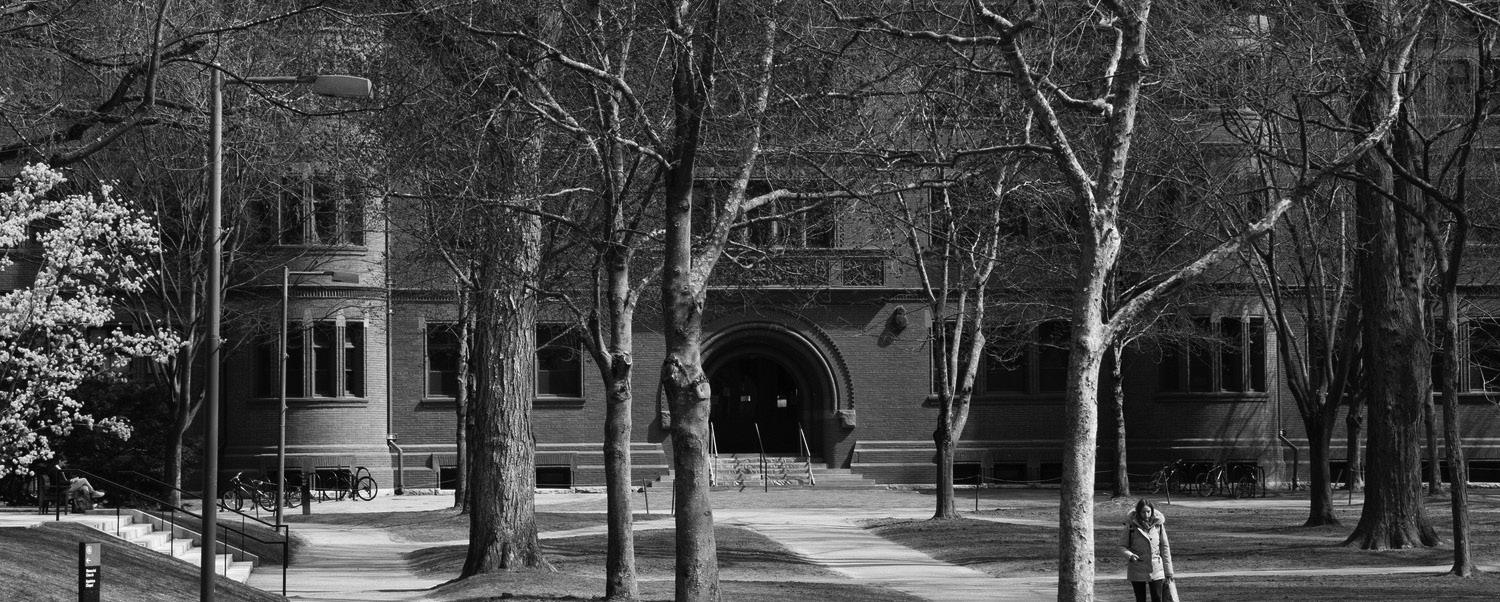
“There’s an enormous amount of knowledge production going on outside the United States that one should not cut themselves off from,” he said.
A University spokesperson did not respond to a request for comment for this article.
Friday’s event attracted dozens of attendees to Sever Hall, and featured panelists on Palestinian History, including Doumani, History Department Chair Sidney Chalhoub, and Harvard History PhD candidate Omar K. Abdel-Ghaffar, also a student at Harvard Law School.
In his keynote address, Doumani expressed optimism that the current “retrenchment” on Palestinian studies at universities will soon end.
“We’re in an age of retrenchment right now,” Doumani said.
“It’s not just happening in the United States, and so it will pass.”
The event was organized by the History Department after encampment protesters made a series of demands to the Harvard administration that included programming on Palestinian history, according to Chalhoub.
In his speech on Friday, Chal-
houb said that Harvard needs Palestinian history alongside Jewish history and other historical fields.
“Harvard cannot afford not to have an education on this subject,” Chalhoub added in an interview after the event.
Chalhoub also said that the event demonstrated that Harvard scholars could speak on any subject, despite University officials’ concerns over academic freedom and free speech.
“This is probably the last subject the University would want us to be talking about at this moment,” he said.
The History Department’s “New Approaches to Palestinian History” event was the last organized by former directors of the Center for Middle East Studies, Cemal Kafadar and Rosie Bsheer, before they were removed from their leadership two weeks ago. Kafadar had been on leave prior to his removal. CMES had also come under fire for allegations of biased programing and an extreme focus on the Israel-Palestine conflict. Faculty
of Arts and Sciences Dean Hopi E. Hoekstra defended the decision at an FAS meeting on April 1, but declined to explain the removal.
“With this understanding of the types of considerations that drive these decisions, I am confident that this was the right decision. While I appreciate that the external environment makes a decision like this one especially hard, it should never prevent us from addressing the needs of our academic units,” Hoekstra told faculty, adding that they had begun searching for the next center director. In an interview after the event, Chalhoub slammed Harvard for their decision to remove the CMES leadership, saying the decision crossed a “red line” and that its speed raised due process concerns.
“The administration should have no interference in this type of decision,” Chalhoub said.
“They should never vet programming,” he added.
caroline.hennigan@thecrimson.com bradford.kimball@thecrimson.com
Harvard Can’t Lead the Charge Alone
Facing down a federal extortion racket, Harvard sent its clearest, most courageous message to date: Our values aren’t for sale.
In an email to affiliates, the University announced it will not give in to the Trump administration’s expanded demands. Mere hours later, in a blatant act of retaliation, the federal government froze $2.2 billion of our funding.
Harvard’s decision to stand in defense of the academic project against the Trump administration’s attacks is noble. As the White House attempts to decimate American higher education, we hope other universities will join ours in fortifying it.
When last week’s initial Trump letter arrived on Harvard’s doorstep, it was immediately clear that their demands — from calls to entirely eliminate diversity, equity, and inclusion programming to implementing “merit based admissions” — had nothing to do with genuinely fighting antisemitism and everything to do with stripping away Harvard’s autonomy.
The new Trump letter, debuted in Garber’s email to the community, somehow went even further.
On top of the original demands, the Trump administration brands whole academic units as potential bastions of antisemitism in need of supervision, including the entirety of Harvard Medical School, Harvard Divinity School, the Harvard School of Public Health and many others.
The letter goes on to demand “viewpoint diversity” at Harvard in admissions and faculty hiring,
down to every “teaching unit.” Notwithstanding the infeasibility of gauging political opinions in a college application, is a room of math professors expected to be half liberal and half conservative? Are environmental research institutes expected to host climate change deniers?
That’s only scratching the surface of Trump’s list, which also included an apparent political litmus test for international applicants and comprehensive federal oversight of the University through at least 2028.
As University President Alan M. Garber ’76 made clear in his message to affiliates, ceding to these demands would do more than please our nation’s president. It would strip fundamental autonomy away from our country’s most storied institution and irrevocably alter the landscape of higher education.
Undeniably, the incoming funding cuts will bring serious, short-term pain for Harvard students, fac-
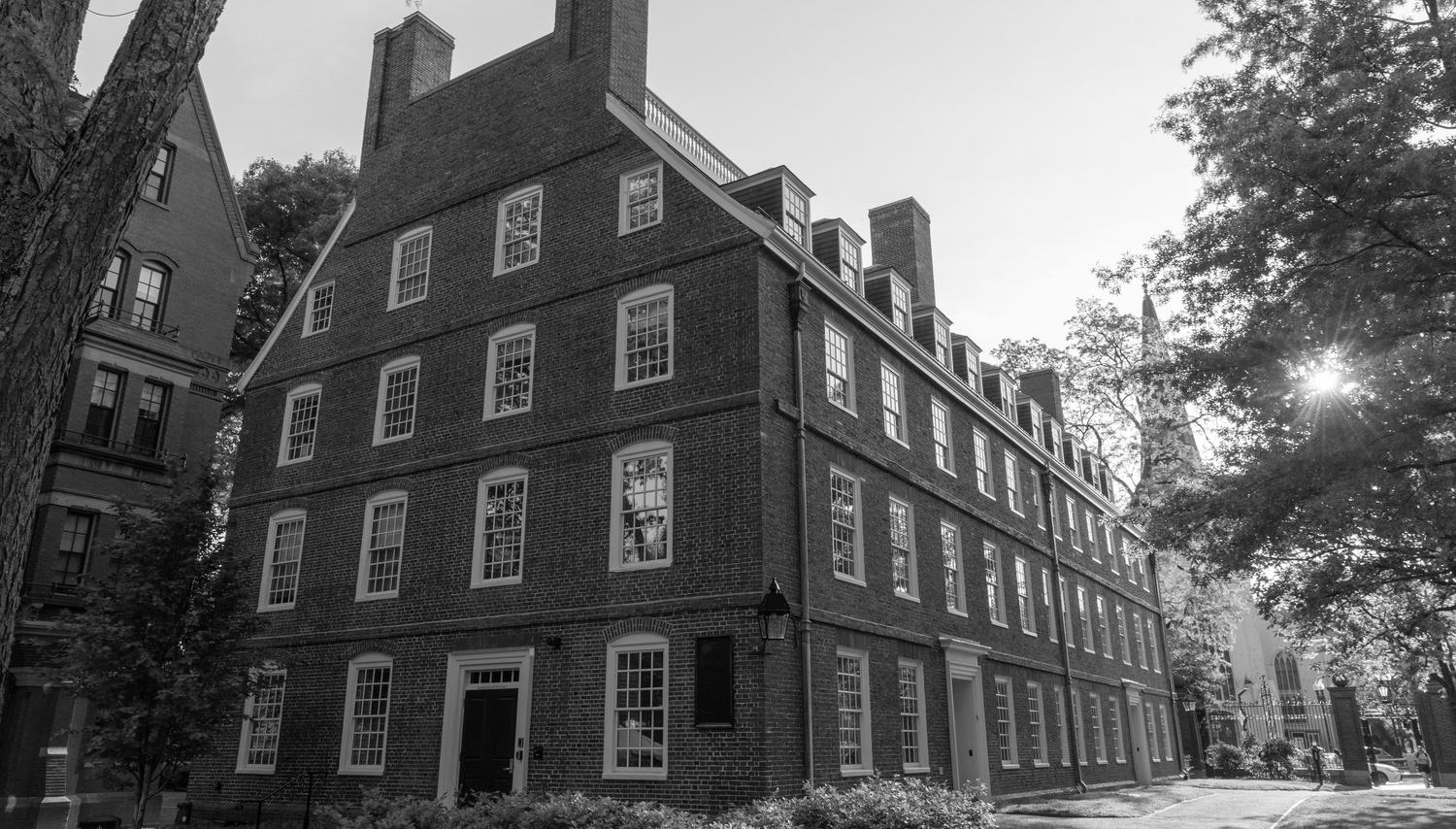
ulty, and staff, not to mention the advancement of human knowledge. But acquiescence to Trump’s demands would have had even graver, lasting consequences, not just for Harvard — but for higher education and American society as a whole. The federal government is picking off democratic institutions at all levels of American life one by one. Harvard’s brave choice to stand by the academic project should be a blueprint for the rest of civil society to follow.
Time and time again, we have called for Harvard to find its voice and lead America’s universities. We’ve certainly critiqued administrators when — from the probation of the Harvard Undergraduate Palestine Solidarity Committee or paused ties with Birzeit University — they’ve fallen short. Now, the institution has answered the call. The student reaction was overwhelming and immediate. At a school often derided for a lack of spirit, Harvard today experienced a moment of intense unity. Higher education needed a champion, and we are proud Harvard has decided to rise to the occasion.
In the face of Trump’s assault on higher education, silence has spoken volumes — we’ve seen elite institutions buckling under the pressure of the federal government’s barrage of funding cuts and threats to academic freedom. All the while, calls to action have been plenty: students, faculty, legislators, governors, and even past University presidents have demanded that Harvard stand up to Trump. These stakeholders, too, understood the necessity of
Do Not Applaud Harvard for Doing the Bare Minimum
BY VIOLET T.M. BARRON
The verdict is in: Harvard will not comply with the Trump administration’s demands to end diversity, equity, and inclusion programming and further restrict campus protest.
If only the University had not been carrying out a parallel campaign — of silencing dissent, prosecuting protest, and abandoning academic freedom — for the past eighteen months, maybe then the verdict would be worth celebrating; maybe then the promises from Massachusetts Hall would not ring so hollow. Indeed, in all but name — and before being officially asked to do so — University President Alan M. Garber ’76 has already actualized many of the
Trump administration’s wishes for the University.
In less than one month, Harvard has paused an academic partnership with Birzeit University after a months-long smear campaign against the West Bank institution; fired the leadership of the Center for Middle Eastern Studies in apparent response to allegations of imbalanced programming on Palestine; suspended the Religion, Conflict, and Peace Initiative at the Harvard Divinity School amidst accusations of antisemitism; let go of RCPI’s Associate Director, a Palestinian American professor; and, placed the Harvard Undergraduate Palestine Solidarity Committee on probation without clear basis.
As Garber took great pains to rid this campus of any mention of the word “Palestine” — whether in the classroom or in the Yard — he also moved Harvard closer to Israel, even as the one-year mark of
the state’s accelerated genocide in Gaza came and went. At the semester’s outset, Harvard adopted the International Holocaust Remembrance Alliance’s definition of antisemitism — which conflates certain criticisms of Israel with antisemitism — promised a partnership with an undisclosed Israeli university, and effectively established “Zionist” as a protected identity. That same month, Harvard Medical School canceled a panel with patients from Gaza — 1, 6, and 14 years old — on the grounds that it was too divisive.
In short, the damage has already been done. We cannot celebrate Harvard’s “fight” against the federal government as the University stands knee-deep in another — against its own students, faculty, and staff.
Don’t get me wrong: Harvard made the right
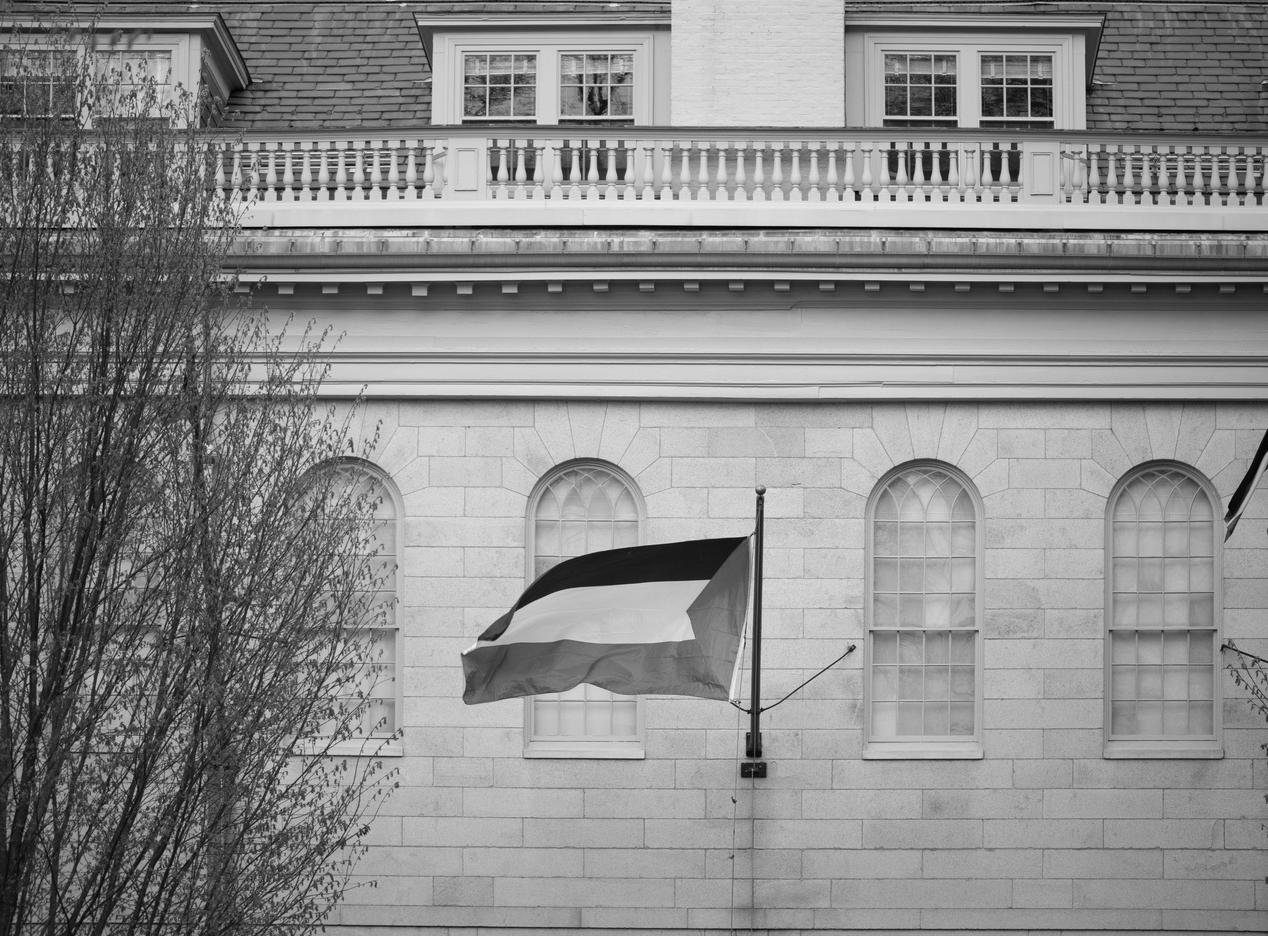
choice in refusing to agree to the Trump administration’s punitive and discriminatory demands. This does not make the University any less punitive or discriminatory itself. Harvard’s shameful track record on Palestine is only the most glaring proof that in many cases, the University’s agenda converges with that of the government they ostensibly reject. Indeed, Garber did not miraculously grow a spine between Sunday and Monday, just as Harvard did not suddenly find its way back to veritas. Rather, yesterday was just another day of the University doing what it does best — executing a deeply conservative agenda from behind a fading blue facade. Do not mistake Garber’s scramble to retain a semblance of liberalism as a stand — let alone fight — against the Trump administration. No number of strongly worded statements nor invocations of “independence” or “constitutional rights” will allow Harvard to claw its way out of the hole it has dug itself into for over a year now. In this hole, academic freedom is not reality but myth, proved fictional by the systematic exclusion of Palestine from its bounds.
For there to be any sort of step forward, Harvard must fully walk back the prejudiced paces it has already taken.
It is physically impossible for an institution which has bent over as far backwards as Harvard has — for far longer than Trump has been in office — to stand up. If, and only if, Harvard renews its research partnership with Birzeit, then it will have stood up. If it reinstates Professors Rosie Bsheer and Cemal Kafadar to their leadership positions at CMES, then it will have stood up. If it resumes the RCPI at HDS with Hilary Rantisi at the helm, then it will have stood up. If it finally acknowledges the waves of student visa revocations and commits to not allowing Immigration and Customs Enforcement agents to disappear its students, then it will have stood up.
In the meantime, expect Garber to continue his campaign against all manifestations of Palestine on this campus — along with anything else that challenges the University’s financial and political investment in the status quo. What starts with Palestine never ends there.
Yesterday, Garber stopped short of complete capitulation to the Trump administration’s demands. This does not stop the University from carrying out a similar campaign on its own time, and it certainly does not erase the fact that Harvard has already done much of the work for Washington. Until the University rights its myriad wrongs, it deserves protest — not applause.
Israel-Palestine Started Harvard’s Mess. Both Sides Must Help End It.
BY TOMMY BARONE
Yesterday was the sort of day where you could be forgiven for seeing meaning in the weather.
After weeks of unseasonably cold conditions, the sun shone on Cambridge. It felt fitting, then, when an email arrived in my inbox from University President Alan M. Garber ’76 announcing that Harvard would risk its federal funding to fight the good fight against the outrageous demands of our authoritarian president.
Much as I find Harvard’s defiance courageous, bold, and probably even strategic, we must not forget that this was the better choice among two horrible options — we lost access to $2.2 billion in research funding yesterday — and that many members of this community helped put us in this position. Unless we learn our lesson and become better citizens and stewards of this university, we will absolutely see it brought lower.
Recall where we were five months ago. When President Donald Trump won in November, his election was heralded as a mandate to implement an agenda far more extreme, and worse for higher education, than the first time. Harvard, meanwhile, was in no position to resist. The University was on the back foot, still recovering from the witch hunt against its last president and seen by much of the nation as a hotbed of progressive lunacy and, more recently, virulent antisemitism.
Nonetheless, as the Trump administration set about making an example of Columbia University, which yielded to its demands only to see its funding remain frozen, many students, faculty, and outside observers positioned principled resistance as the obvious choice. This is why the University bothered to build such a large endowment, the argument goes. Who are we if we don’t use it to defend our values?
The answer, much as I don’t love it, could have been “responsible.” Most of us don’t spend very much time thinking about the practical effects of nine billion dollars of lost research funding or a massive tax on the endowment. It is not our job to think like an administrator. But speak to an administrator in private — and I have, several times, in recent months — and you’ll quickly realize that, $50 billion endowment notwithstanding, Republicans could cripple this university. Harvard is an immense force for good in this world, and risking its funding merely to make a statement, as many on campus desired, is not noble — it is foolish and gambles with the wellbeing of the millions of people whose lives are touched by its transformative research each year. Indeed,
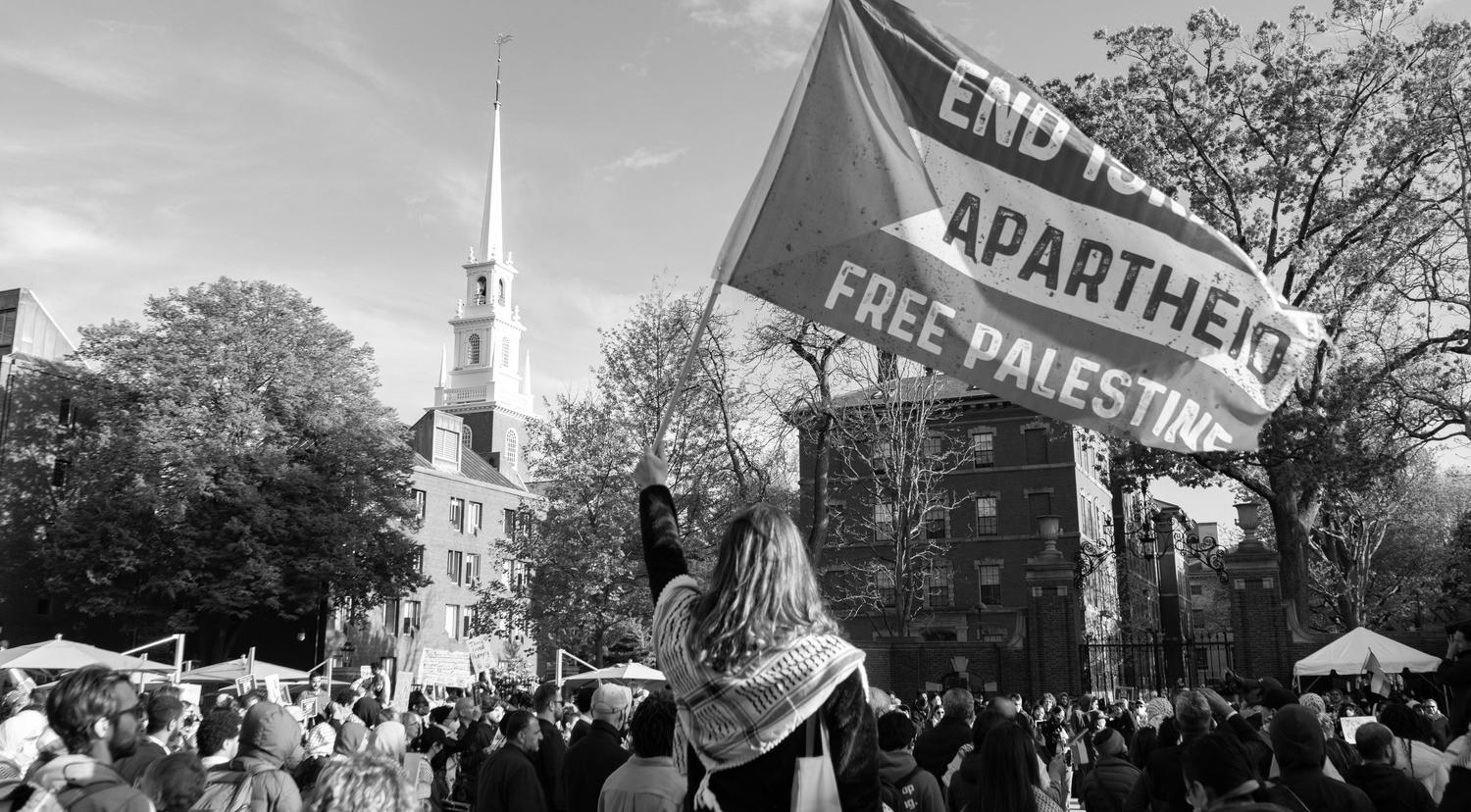
what’s scariest about yesterday’s news is precisely that it wasn’t, until recently, an obvious choice.
Imagine how this might have played out if the Trump administration’s highly unpopular policies did not augur an end to Republican governance in the near future. Imagine, too, if the administration had kept its demands somewhat more limited, and if it had held up its end of the bargain with Columbia. Saving billions in research funding that will help millions worldwide may well have been worth the (still very high) cost.
Unfortunately, these are the decisions universities face when our nation is governed by a party that has declared war on higher education. Still, we have reason to believe that the assault on Harvard would not have been as intense or as popular had the events of the past two years not unfolded as they did.
The University always had it coming from Trump 2.0, but the inflammatory activism of some pro-Palestine protesters created a narrative about antisemitism that, while dramatically overblown, made the assault more severe. Pro-Israel students and professors amplified this pernicious misrep -
resentation, drowning out the Jewish affiliates, at least as numerous, who feel otherwise.
We couldn’t know at the outset how harmful these events would be to the University. But now we do. It’s a different world today, and to carry on like it isn’t — to pummel the University with abandon, to instrumentalize it for your narrow purposes — is to say you don’t care about the immense costs it will impose on Harvard and the people far from Harvard, disproportionately worse off than you, who would benefit most from the research that happens here.
I am not going to pretend that anyone at Harvard can keep Republicans from attacking the University. But how the months and years ahead unfold could mean the difference of millions or billions in federal funding. As such, while the assault continues, we affiliates can make a meaningful difference in Harvard’s fortunes by acting with caution as we engage in university politics.
It is time that protesters leave behind language and conduct that opens them to the charge of antisemitism, and indeed that they condemn antisemitism in the strongest terms and eradicate it
from their number. It is time that pro-Israel affiliates stop crying antisemitism in hopes of silencing pro-Palestine protesters, and indeed that Harvard Hillel and leaders in the Jewish community come out unequivocally against federal funding cuts. It is time that the citizens of Harvard stop making it the villain in their story and acting surprised when the nation agrees. Since the ’60s, universities have played host to protest movements with extreme elements, and those offended by their extremity have criticized those elements. But America has never, in the age of campus protest, been this hostile to universities or led by politicians this reckless, craven, and fascistic. It was not a sunny day in Cambridge. The University faces more dire threats now than at any other point in its modern history, and it made the only choice it could. Now, if it is to weather the storm ahead, we must do our part to protect it. –Tommy Barone ’25, a former Crimson Editorial Chair, is a Social Studies concentrator in Currier House.
Finally Stood up to Trump. Our Organizing Is Why.
BY CLYVE LAWRENCE
On Monday, Harvard finally stood up to President Donald Trump.
The administration rejected his attempt to suppress free speech and dismantle diversity, equity, and inclusion programs on campus. However, this courage didn’t come from Harvard’s conscience. It came from us — the students, workers, residents, and elected officials who organized, rallied, and demanded that Harvard find its spine. As Trump responds by freezing $2 billion in funding, Harvard must work with its community to have the best chance at winning this four-year fight. Over the past few months, people have mobilized to oppose Trump’s pressure on institutions like Harvard. His authoritarian encroachment on
higher education poses a dangerous threat to civil rights in this country. Events like the April 1 rally in Harvard Yard and the Cambridge Common rally this past weekend — which drew over five hundred people — reflected a collective appeal to Harvard to fight back. And it looks like Harvard listened. Our organizing was an important reason behind the University’s decision to speak up.
Of course, the University has hardly been on the right side of this fight. Indeed, Monday’s about-face masks a more cynical reading of the past eighteen months. We can’t forget when the University placed the Harvard Undergraduate Palestine Solidarity Committee on probation, delayed degree conferrals to students who participated in last year’s encampment, dismissed the leaders of the Center for Middle Eastern Studies, and undermined the Legacy of Slavery Initiative.
These actions severed the relationship between Harvard and its community, so it is OK, and necessary, to have a healthy dose of skepticism now. Beyond the words in Monday’s statement, University President Alan M. Garber ’76 hasn’t shown our campus that he is willing to join the fight with us.
During the 2024 encampments, I wrote that Harvard should respond to student organizing by elevating it as a form of active, engaged citizenship, where through conversation and deliberation, we co-create a more just society. The University failed that test. But what if it offered to listen to us and work together? Now, it has a second chance.
Newton’s first law says that an object at rest will stay at rest unless acted on by an external force. We can apply this principle to changing an institution: It will only move when we push it.
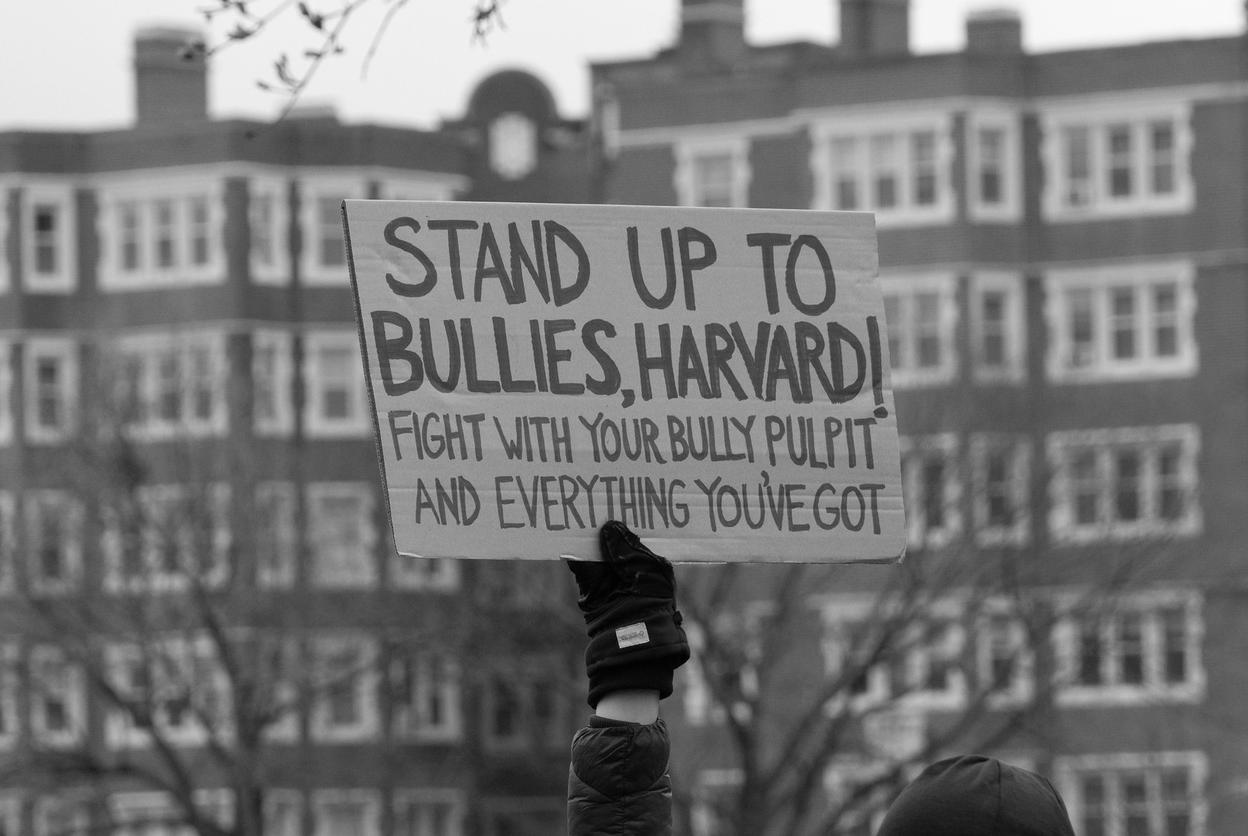
Harvard does not exist in a vacuum. Many internal and external forces have kept it on the wrong path. That includes people aligned with Trump, but it also includes many on the sidelines who stayed quiet in the last two years. Thankfully, we are seeing a growing push toward justice. Garber didn’t decide to speak out on his own — the political calculus changed. Harvard moved because we pushed them. So we need to stay in motion. On our end, organizers have to bring more people into our movement, empowering them to stand up to Trump. Many Harvard affiliates and Cambridge residents have shown a willingness to attend rallies, but we have to encourage them to do more. Uniting students, faculty, unions, workers, and residents in durable political organizations is more essential than ever. And we need to avoid losing sight of the full picture: the sweeping attack on American higher education as a whole. When I spoke at the April 1 rally, I explained the situation we now face in front of 300 of my peers. Since January, hundreds of international students have been targeted by Trump’s immigration enforcement. We’ve also seen research cuts and attacks on racial justice. Return to that idea of motion. If the system is pushed too weakly, opposing forces win out. But if the system is pushed meaningfully, it will move meaningfully. It’s time to realize our power and organize into a social force.
Garber has demonstrated that he’s capable of being moved. What moved him? The collective power of both student and working class organizing. We can expand that power now that the Harvard administration is starting to align with us against Trump.
But again, the system will only move insofar as we
Harvard Finishes Installing New Yard Surveillance Cameras
BY LAUREL M. SHUGART
Harvard has installed 30 new surveillance cameras in Harvard Yard as part of a long-planned upgrade to existing security measures aimed at deterring theft and increasing campus safety.
Installation of the new cameras, which focus on gates to the Yard, the John Harvard statue, and “large open green spaces,” comes on the back of heightened concerns over immigration enforcement on campus. But Faculty of Arts and Sciences spokesperson James M. Chisholm stressed that the cameras were not “connected to ICE or law enforcement.”
The University began to purchase new cameras in February 2024 and finished installing them last month, bringing the number of cameras in the Yard up to 41. There are currently more than 800 cameras across the FAS campus, Chisholm confirmed in an email.
The cameras are continuously recording, but do not provide live monitoring. All access to video footage is regulated by a University policy established in 2016, which restricts review of
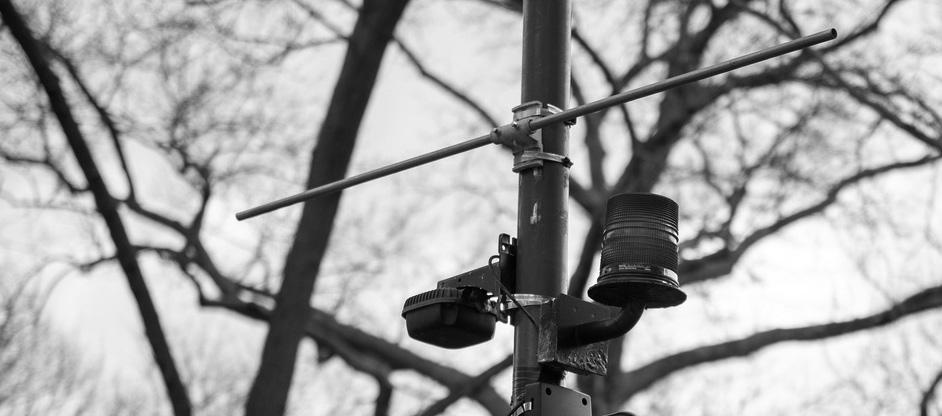
footage to specific purposes that serve “legitimate institutional purpose.”
The policy instructs each school to “establish a procedure for implementing access to video camera data” on a case-bycase basis. Access to the footage is “limited to those personnel with a reasonable need for such access in the particular case,” according to the 2016 policy.
Footage can be used for criminal investigations or threatened lawsuits against the University, but cannot be accessed for administrative purposes. The cameras do not record audio or use facial recognition software.
University policy also restricts who can access the cameras outside of Harvard.
“Recorded data may be provided to a non-Harvard party if the purpose of the request is not
contrary to provisions of this policy or the School or unit policy,” the policy reads. But outside parties are not allowed to openly search video data. Instead, they will receive a copy of the video segment that they requested.
Chisholm, the FAS spokesperson, wrote that camera installations have been a part of a larger long-term effort to increase security around the Yard for “local concerns” like theft.
In addition to the cameras, Harvard has instituted “enhanced security measures” around the Yard — including upgrading emergency “blue light” phones, reducing gates that are open overnight, and installing more lighting.
matan.josephy@thecrimson.com laurel.shugart@thecrimson.com
CAMBRIDGE
City Council Cheers Harvard’s Fight
BY SHAWN A. BOEHMER AND JACK B. REARDON CRIMSON STAFF WRITERS
The Cambridge City Council voted unanimously to praise Harvard’s decision to defy the Trump administration at a Monday night meeting.
University President Alan M. Garber ’76 announced on Monday afternoon that Harvard would fight Trump’s demands — a step the city has been pushing the University to take for the past week.
City leadership quickly mobilized to show their support for the University, with City Councilors Burhan Azeem and Patricia “Patty” M. Nolan ’80 drafting a resolution in support of Harvard just
hours after Garber’s message. The resolution, which was added to the meeting agenda at the last minute, praises Harvard for “its resolve, courage, and dedication to safeguarding American democracy.” The resolution also commits Cambridge to “offer its full support to Harvard as it navigates this challenging moment.”
But Harvard’s decision was not without consequences. Just after the Monday Council meeting began, the White House announced it will pause over $2 billion in federal grants to the University.
City leadership must now live up to the promises they made last week as they lobbied Harvard to stand up to the Trump administration. The Council unanimously passed a resolution urging Harvard to resist Trump’s demands, co-sponsored a rally drawing 500 people to Cambridge Common on Saturday, and organized a peti-
tion that garnered 1300 signatures from local residents and Harvard affiliates.
So far, Councilors have not elaborated on what specific actions the city might take to come to Harvard’s aid. Azeem pointed to Cambridge’s decision to file an amicus brief in support of the National Temporary Protected Status Alliance during a recent lawsuit as a potential blueprint.
“The city can get involved legally. We have other avenues,” he said.
BY KEVIN ZHONG CRIMSON STAFF WRITER
As businesses across the country struggle to keep up with the changing tariff policies out of the Trump administration, many Cambridge store owners are anticipating supplier price hikes.
In interviews with more than 15 local business owners, The Crimson found that various businesses have been contacted by suppliers to inform them of potential increases in prices. While many have said they have yet to feel the effects, owners are waiting to take further action until the situation becomes clearer.
Fulfilling a key campaign promise, Trump has imposed a 145 percent tariff on Chinese imports, high, individualized tariffs on other countries with which the United States has a large trade deficit, and a 10 percent baseline tariff on all other countries. The administration had previously imposed sweeping retaliatory tariffs on various countries, but implemented a 90-day pause last Wednesday.
Jeff C. O’Connell — a salesperson for Cambridge Bicycle — said that the business’ suppliers emailed them about the potential impacts from the tariffs. The tariffs could lead to a potential price hike for a lot of its bikes, potentially increasing the cost of some bikes by up to 80 percent.
“We’re getting emails from suppliers talking about what the potential impacts are, but it’s just completely unknown, because the tariffs are on, the tariffs are
off,” O’Connell said. O’Connell said that the store is in a precarious situation, as it imports a lot of its inventory from Taiwan and China.
“It’s like, China does reciprocal tariffs, and it’s just total chaos,” he added.
Nicholas C. Davies, general manager for Boston-based food truck and catering company Moyzilla, said the tariffs have yet to directly impact his businesses’ prices. But he added that the company is preparing for possible changes to business costs.
“Some of the paper products that we use, some of the packaging products that we use, do come from China,” he said. “So those tariffs, once they start getting enforced, once they really start coming into full swing — I’m 100 percent certain that that will affect how we have to cost out our products.”
But Mr. Bartley’s Burger Cottage, a staple in Harvard Square, has already felt the effects of the tariffs.
“An order was just placed today, and we’ve noticed a sharp increase in certain products that are just a lot more expensive than what they were when we ordered them last week,” General Manager Michael D. Chapman said.
“We cannot directly say if that is because of the tariffs or not,” he added.
“However, we can somewhat deduce, I would think, that whether the cost of those things has actually increased, or that’s just our suppliers are just anticipating those increases in prices.”
Chapman also noted how the uncertainty surrounding the tar-
iff policies has made them more cautious in hiring.
“I think that at this point, we would have already maybe brought on a little bit more staff to anticipate our increasingly busy season,” Chapman said.
“I think, like many other businesses, from the owner to me as the general manager, we are kind of uncertain at this point, so we’re just being a little bit cautious. Again, we are not freaking out,” he added.
Ronaldo Barbieri, the general manager for El Jefe’s Taqueria in Harvard Square, said his location has not been impacted by the tariffs.
“The suppliers have been doing great. They are handling great. Usually when they’re gonna do a huge price change, they let us know in advance,” Barbieri said.
“I don’t think the tariffs are a major thing yet for us,” he added.
Amid the uncertainty for businesses, Adrian M. Wall ‘03, a partner of Joe’s Pizza, said he was concerned about how the tariffs will affect their customers.
“I think where we’re more concerned is how our customers are gonna feel,” Wall said. “The uncertainty, the economic uncertainty people are feeling, the political uncertainty, and how that’s gonna affect their spending habits.”
“It’s a wait and see for now. We’re not going to make any drastic changes. Joe’s doesn’t take price-changing lightly,” he added.
kevin.zhong@thecrimson.com
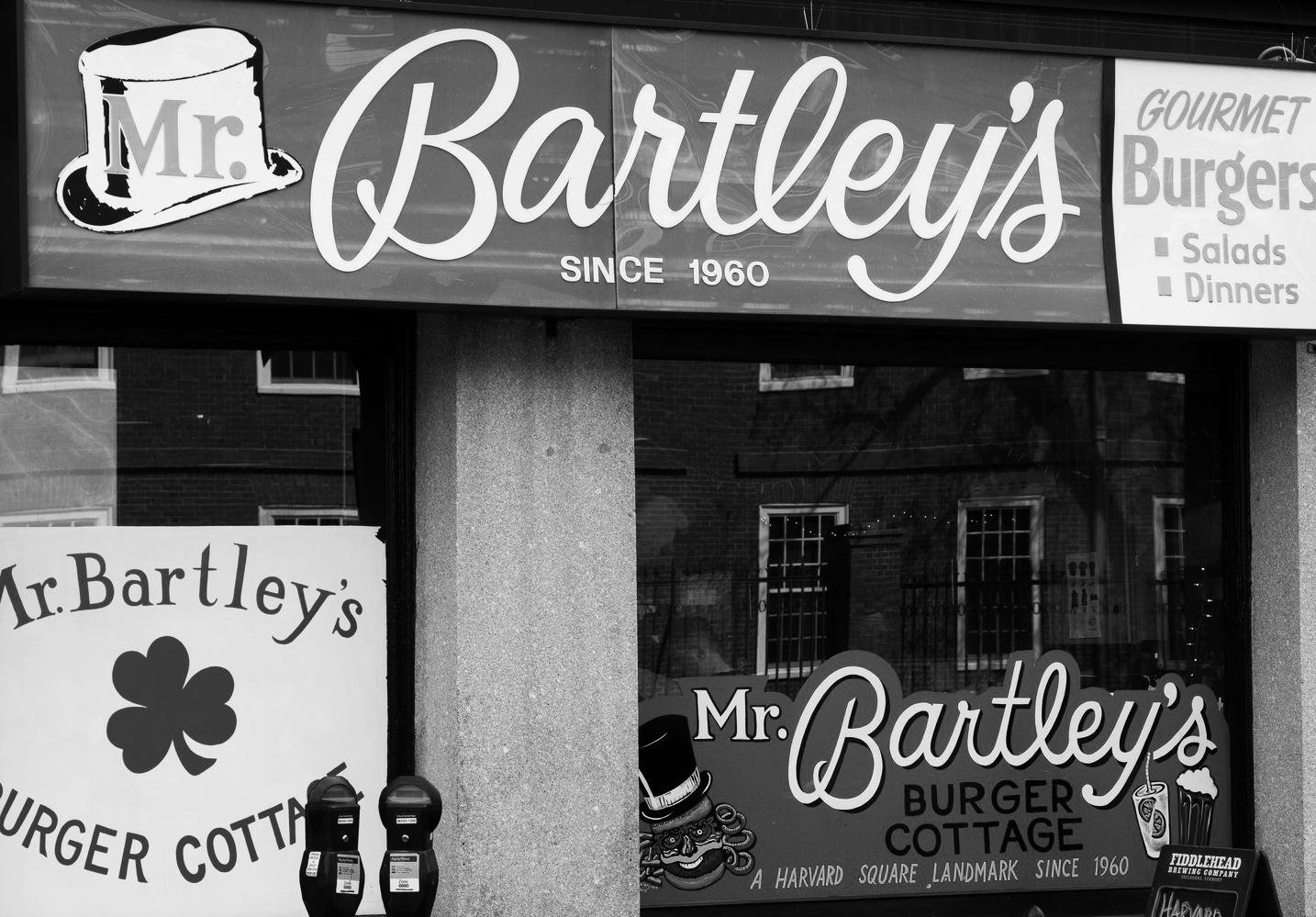
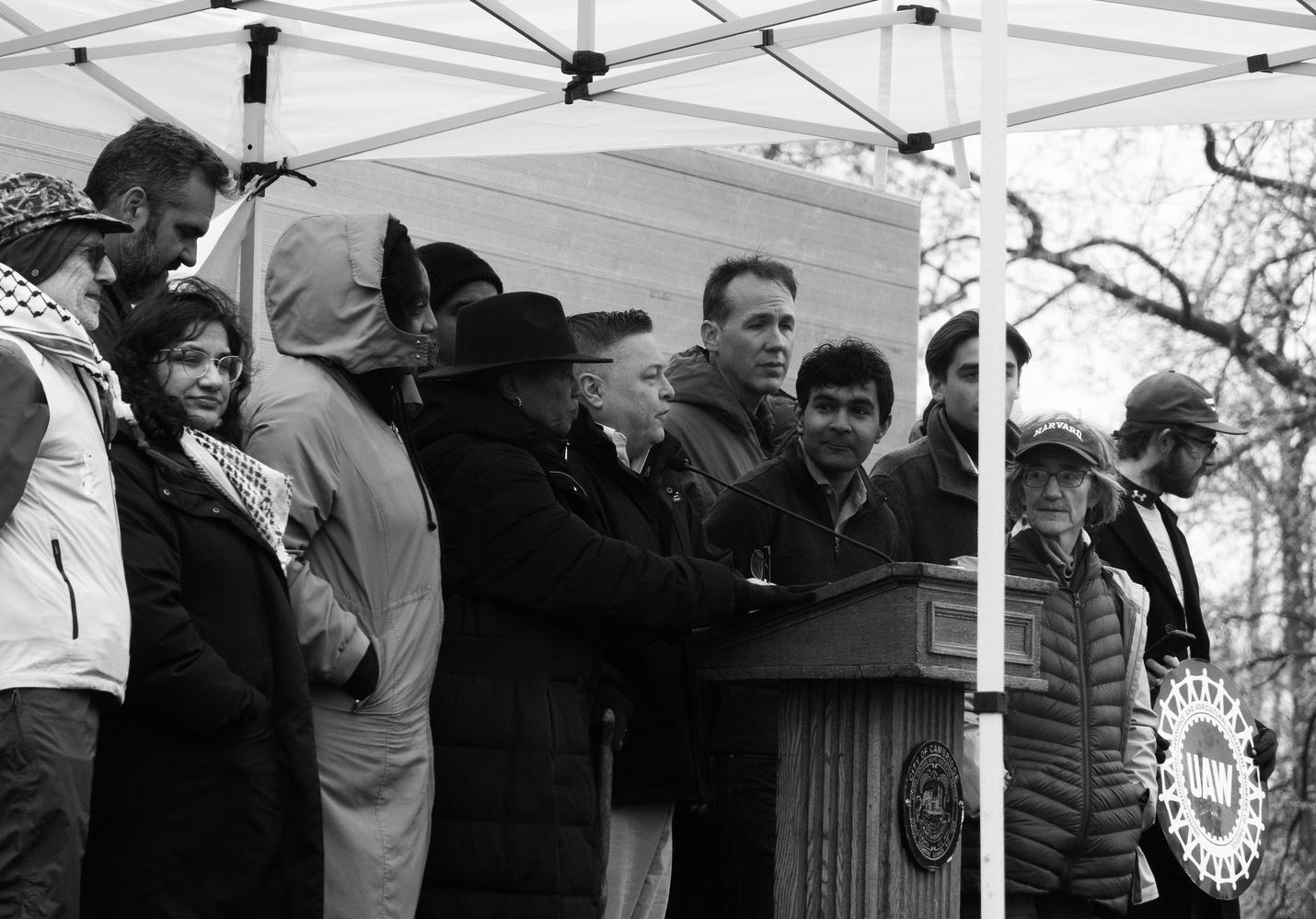
CPS To Adjust Grad Requirements After Removal of MCAS
BY AYAAN AHMAD AND CLAIRE A. MICHAL
After a November ballot measure removed the Massachusetts Comprehensive Assessment System as a state-wide graduation requirement, districts are finding new metrics to set graduation standards. For current Cambridge students, not much will change.
The MCAS has long been used as the “competency determination” requirement for students in the state to graduate. Though the test is no longer a graduation requirement in Massachusetts, state and federal law requires all districts in the state to administer the test to collect and provide data on student achievement.
At a Cambridge Public School Committee meeting on Tuesday, committee member Richard Harding Jr. said the MCAS requirement has historically not hindered CPS students from graduating.
“As much as you talked about the MCAS being removed at the state level, it was never a Cambridge issue,” he said, noting that only 37 students in the past 12 years did not graduate because of the MCAS.
On Tuesday, district leadership presented changes to CPS’ “competency determination,” shifting from the MCAS requirement to the fulfillment of 20 credits in each of ELA and Math, and 10 credits in Science.
But to graduate from Cambridge Rindge and Latin School, students are already required to fulfill 40 ELA and Math credits, and 30 Science credits.
While the change will not greatly affect the graduating class, Chad Leith, CPS’s Chief Accountability Officer, said the MCAS removal could have im -
portant “retroactive” ramifications for former students. According to Leith, former students who did not pass the MCAS — but otherwise fulfilled their graduation requirements — are now eligible to receive their diploma. The new competency determinations will be in effect for the graduating classes of 2025 and 2026. Next school year, the district will propose longer term competency determination requirements for future classes.
Leith noted that Massachusetts Governor Maura T. Healey ’92 has formed a council to make state-level recommendations for the new requirements no later than Dec. 1 2025. He said that these recommendations “could eliminate the need for us to develop our own long term approach.”
“We’re looking forward to the report from this council, and that will obviously inform the work that we do and the recommendations that we bring to you,” Leith said. As state leadership determines future graduation requirements, Interim Superintendent David G. Murphy said that the removal of the MCAS graduation requirement “has created a significant challenge for school districts.”
“If the determination is solely at the local level, then we are essentially the arbiters of our own work,” he added.
Murphy also said that the district has “a responsibility as a school district to keep a close eye on the work happening at the state level.”
“I don’t think we should kid ourselves as to what the implications are for our school district and all others — that there is no uniform standard of competency going forward in the
wake of that ballot initiative,” he added.
Dan Monahan, president of the Cambridge Education Association, said eliminating the MCAS requirement benefits students by reducing anxiety that comes from taking the test.
“Not having that level of anxiety is really important in our society, where the anxiety in our young people has increased so dramatically over the last many years,” Monahan said.
“MCAS has dangerously brought us down this path of focusing on the results from a standardized test,” Monahan added.
Monahan added that focusing too much on MCAS has “come at a cost of a lot of other pieces, like social, emotional development, critical thinking — lots of other things that we need to educate our students on.”
Alongside voting to change the competency determination, the School Committee passed a motion to reaffirm the district’s commitment to teacher evaluations. While the motion previously included the addition of two paraprofessional staff, the Committee only agreed to vote in favor of the teacher evaluations.
Murphy clarified that the district has a “regulatory obligation to evaluate all educators.”
“I am under a contractual, regulatory, and ethical obligation to ensure that this happens irrespective of the outcome of this motion,” he added.
“Educator evaluation is a critical, indispensable part of that,” Murphy said. “It is how we as an organization hold ourselves accountable.”
HOSPITALS
Experts Skeptical of New Cancer Hospital
INDUSTRY. A new cancer hospital for Dana Farber has left experts questioning its necessity.
When the Dana Farber Cancer Institute announced that it was opening a new, $1.7 billion, 300bed inpatient cancer hospital in 2028 along with Beth Israel Deaconess Hospital, the announcement seemed to promise good news for the region.
President and CEO of Dana Farber Benjamin L. Ebert called the expansion an “extraordinary opportunity for Boston and the Commonwealth.” In a letter to the Massachusetts Health Policy Commission, he emphasized that it reflects Dana Farber’s mission to “expand access to the highest quality cancer care without driving any material increase in health care costs for Massachusetts consumers.”
But healthcare experts aren’t so sure. Several who spoke to The Crimson said that the expansion risks raising costs for patients without obvious justification. They blamed the Massachusetts Department of Public Health, which is responsible for regulating such projects, for failing to verify that the expansion will satisfy an actual need for more cancer beds — instead of merely helping the hospital siphon lucrative cancer patients off from their competition.
“I don’t think that this will decrease costs. I think that it’ll increase redundancy of services,” Donald M. Berwick, the former administrator of the Centers for Medicare and Medicaid Services, said of the announcement.
“So far, we haven’t seen competition in the Massachusetts market — in the Boston area — reduce costs at all,” he added. “On the contrary, there have been constant increases in cost in one of the highest cost communities in the country.”
The Massachusetts Department of Public Health did not respond to a request for comment.
Cancer patients are highly profitable for hospitals, mak -
ing them essential for smaller hospitals to stay afloat and a source of competition among Boston’s larger hospitals, many of which are among the best for cancer treatment in the world.
At the moment, Dana Farber mainly offers specialty cancer care. Patients who need to be hospitalized because of intensive treatments — such as complications from chemotherapy or surgery — don’t actually stay there. Instead, a patient receiving radiation at Dana Farber might stay at Brigham and Women’s or at a smaller hospital in their community, where they receive their primary care.
The new cancer hospital means those patients will be able to receive both their specialty cancer treatment and their primary care all under the Dana Farber system. The arrangement would be more convenient for patients, though it would come at a cost for the community hospitals who would lose them, even as they depend on such cancer patients for essential revenue.
As a result, Dana Farber is expected to see tens of millions in new revenue, even as the ultimate value for patients remains unclear, experts said.
At a Health Policy Commission meeting on March 20, Chief Medical Officer Craig A. Bunnell claimed that totaling the number of patients currently admitted for cancer care to outside hospitals, plus inpatients at Beth Israel Deaconess — which will jointly operate the new cancer hospital — shows that demand does exceed the proposed 300 beds at the new center.
David P. Ryan, the clinical director of Mass General Cancer Center — which is poised to potentially lose patients to the new Dana Farber hospital — also called on state regulators to limit the new hospital to 126 beds instead of 300, arguing that more beds would increase health care costs.
John E. McDonough, a professor of public health practice at the Harvard School of Public Health and former Massachusetts State representative, said that a recent high-profile merger between Mass General Hospital and Brigham and Women’s systems may have led Dana Farber — which competes with the two — to feel left behind.
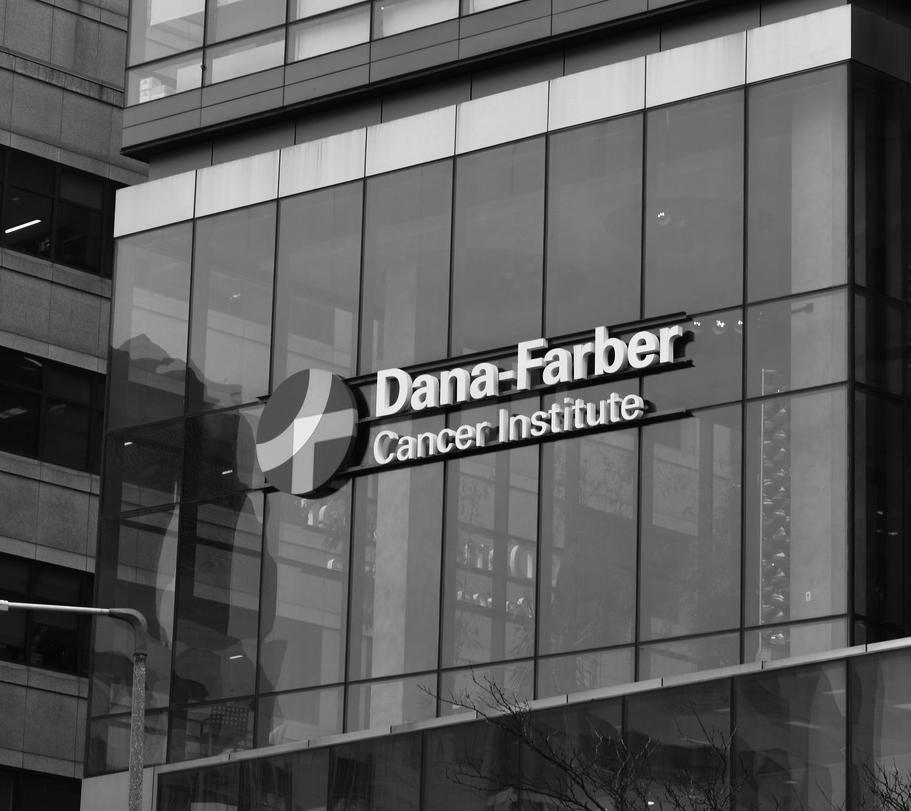
“That left Dana Farber with their special dating relationship with Brigham and Women’s kind of standing to the side and wondering, ‘Well, what are we? Chopped liver? What about us?’” McDonough said.
Mass General Brigham — the merged system — recently announced on March 18 its own $400 million investment in developing its own cancer center, particularly renovating existing buildings to increase outpatient space. Many saw the announcement as a response to Dana Farber’s own expansion plans.
Paul Hattis, senior fellow at health care nonprofit the Lown Institute, said the new cancer center could draw revenue away from less prestigious, but
essential smaller hospitals.
“They predicted in the first year, about $93 million of patient revenue moving away from those hospitals to Dana Farber,” Hattis said, referring to a report by the HPC.
“We already have a system of haves and have-nots in the States,” he added. “I’m worried that as they draw revenue away from some of the other hospitals, including some of the have-nots, it could destabilize some of them.”
Dana Farber’s new hospital would be eligible for higher reimbursements from Medicare under a federal rule, adding to the potential financial gain.
“Designated cancer hospitals are able to charge the federal government the way that hos -
pitals used to be able to do in the 60s and 70s. Whatever their costs are, they send the bills to the Centers for Medicare, Medicaid services, and they get paid,” McDonough said. That’s in contrast to its current cancer unit at Brigham and Women’s, which does not get access to the higher reimbursement rates.
Given a list of criticisms made by healthcare experts for this article, a spokesperson for Dana Farber declined to comment. A spokesperson for Beth Israel did not respond to a request for comment.
“I do not think that the condition that the DPH wrote is a satisfactory one to constrain the additional — call it cost growth, and revenue flow that
could result,” Hattis added. Hattis, McDonough, and Berwick each worried that the cancer center represented more the competition for dominance between Boston’s largest hospital systems rather than a real benefit to the public. “Just understand that it starts with each organization’s self interest. What’s in it for them?” McDonough said.
“These are proud institutions that have, in all cases, done terrific work, but they have a lot of trouble coming up with shared solutions that serve the interests of the public at large,” Berwick said. “They serve institutional interests.”
stephanie.dragoi@thecrimson.com thamini.vijeyasingam@thecrimson.com
The Cambridge City Council voted to consider renewing funding for the Transition Wellness Center at Spaulding Hospital in a 5-4 vote at their Monday meeting after a heated debate and hours of public comment. The city initially decided to close the 58-bed shelter after its lease ends in June, sparking outrage from Cambridge residents who attested to the shelter’s high quality and privacy during the last two meetings of the council. Now, that decision has the potential to be reversed. The shelter opened in December of 2020 as a “temporary solution” to a reduction in shelter capacity during the Covid-19 pandemic. Initially funded by $88 million from The American Rescue Plan act, the expanded housing was intended to close in 2023. Last year however, the council voted to extend the contract through city funds.
Vice Mayor Marc C. McGovern, who introduced the reconsideration to the agenda, said in an interview that he wanted the rest of council to keep the impact of the shelter in mind as they discuss 2026 budget finalizations.
“Eventually what we would like is for everybody to have their own place, as opposed to being in a shelter,” McGovern said.“But that doesn’t also mean that the shelter is not necessary, right?” Some Councilors and city staff members expressed concerns about the shelter’s cost.
“I realize that it’s an incredible program, but it’s taking up 20 percent of our $16 million budget for homeless services, and it only serves 8 percent of our homeless residents.” Councilor Catherine “Cathy” Zusy said. “It only serves 58 residents, and you have something like over 740 unhoused people.”
City Manager Yi-An Huang ’05 voiced concerns that if the shelter’s funding was extended, it would become a permanent fixture of the city’s framework and a strain on the budget for years to come.
“I honestly think if we aren’t able to execute the specific plans we made this year to transition from this program, then we’re essentially making a permanent commitment, and this will make it harder for other council initiatives,” Huang said.
The Council’s vote comes a week after several residents of the TWC gave their testimony in public comment, urging the city council to continue its funding.
“Spaulding is a supportive and stable place that allowed a lot of people to rebuild what they have lost and it gives us an opportunity to keep moving forward,” TWC resident James Geldern said to the Council during public comment last week.
A major point of contention for councilors during Monday’s debate was whether the high cost is worth the higher standard of care that the shelter provides, which according to McGovern, is a more expensive program per capita than many other shelters in the city.
“Spaulding specifically, the rent is high.” McGovern said, “All the
services like the laundry and the food and cleaning and all that stuff comes from is contracted through Spaulding.”
According to Huang, the TWC costs the city approximately $3 million annually, and the price would likely remain similar after renegotiation.
“I presume that if we were to continue to fund it, there’d be some level of cost escalation, just to recognize that staffing costs, labor costs are going up, we would need to renegotiate some of the contracts with Spaulding,” Huang said.
“So there’s the potential for some escalation, but it will probably be around $3 million a year,” he added.
Despite the concerns, the Council narrowly voted to consider funding the shelter in their 2026 budget by the end of the contentious meeting.
Cambridge residents who spoke during public comment before the vote and residents of Spaulding who spoke to the council last week, pointed out that the Spaulding center is a uniquely supportive shelter in the Cambridge area.
“Spaulding is clean, safe environment to transition to wellness,”
TWC resident Deborah Jervis said.
“It has been a lifeline in providing a stable, a stability to recover from my medical issues.”
“I think it’s a very good place for people that transition to a better — to find what’s the next step,” TWC resident Youssef Jilal said.
“That place is very good for me, please keep it open,” he added.
A snapshot of Asian culture will light up Harvard Square with the anticipated openings of photo booth store Memory Shop and Anime Zakka this June.
Father and son pair Henry and Brian Cheung are separately opening Korean-style photo booth store Memory Shop and Anime Zakka — a family-owned Japanese anime shop — in The Garage on JFK St. Brian Cheung, a senior at the University of Massachusetts, Amherst, said he was inspired to open Memory Shop after traveling to Vietnam last summer. He noticed that photo booth stores were very common in Asia, and he wanted to bring the experience to the United States.
“Some streets had four photobooth stores on the same street,” Brian Cheung said. “To be honest, we went to every single one, and it was just a super fun experience.”
“I was like, ‘If it’s this fun, why don’t we have something like this in Boston?’” he added.
Brian Cheung opened Memory Shop on Newbury St. in September 2024, and is now planning to expand into Harvard Square. He said he is eager to harness the “Harvard energy” of the Square to serve the “college crowd” and “local visitors” that frequent the area.
He added that the store will bring back the vintage charm of Harvard Square that he remem-
bers from his childhood.
“Ever since I was a kid, I remember Harvard Square being that vintage place where you can hang out,” Brian Cheung said. “There’s a lot of small things you can do, but lately I feel like it lost a little bit of fire — there’s something missing.”
Henry Cheung, who grew up visiting Harvard Square and ran an Anime Zakka store in The Garage from 2012 to 2021, agreed with his son.
“Harvard Square is supposed to be like, very local, school area,”
Henry Cheung said. “But now? Totally different. All the big corporations there, they don’t even know who you are.”
But Brian Cheung said he believes his family’s businesses will help change that trend.
“Just bringing back Anime Zakka plus Memory Shop in that main Harvard Square center would boost the fun that everyone can have,” he said. “Our end goal is just to have everybody have fun. We just want everyone to make memories of each other, bring it home, share with their family.”
Henry Cheung echoed his son’s sentiments, and said he was motivated to bring Anime Zakka back to the Square to “make the customer happy” and provide a way for residents to “buy a lot of anime stuff locally.”
“This is my passion,” he added.
“If the customer is happy, I’ll be happy.” Henry Cheung, whose family partly comes from Japanese descent, was inspired to start Anime Zakka after seeing local stores only
selling comics and superhero content. He hopes Anime Zakka will attract more customers to Harvard Square through authentic anime products imported from Japan.
“Japanese culture is always the top culture people looking into,” Henry Cheung said. Harvard students are excited for the Asian culture and friendship-building activity Memory Shop and Anime Zakka will bring to the Square.
“I think it’s a great idea,” Ashley
The 39th Cultural Rhythms Showcase

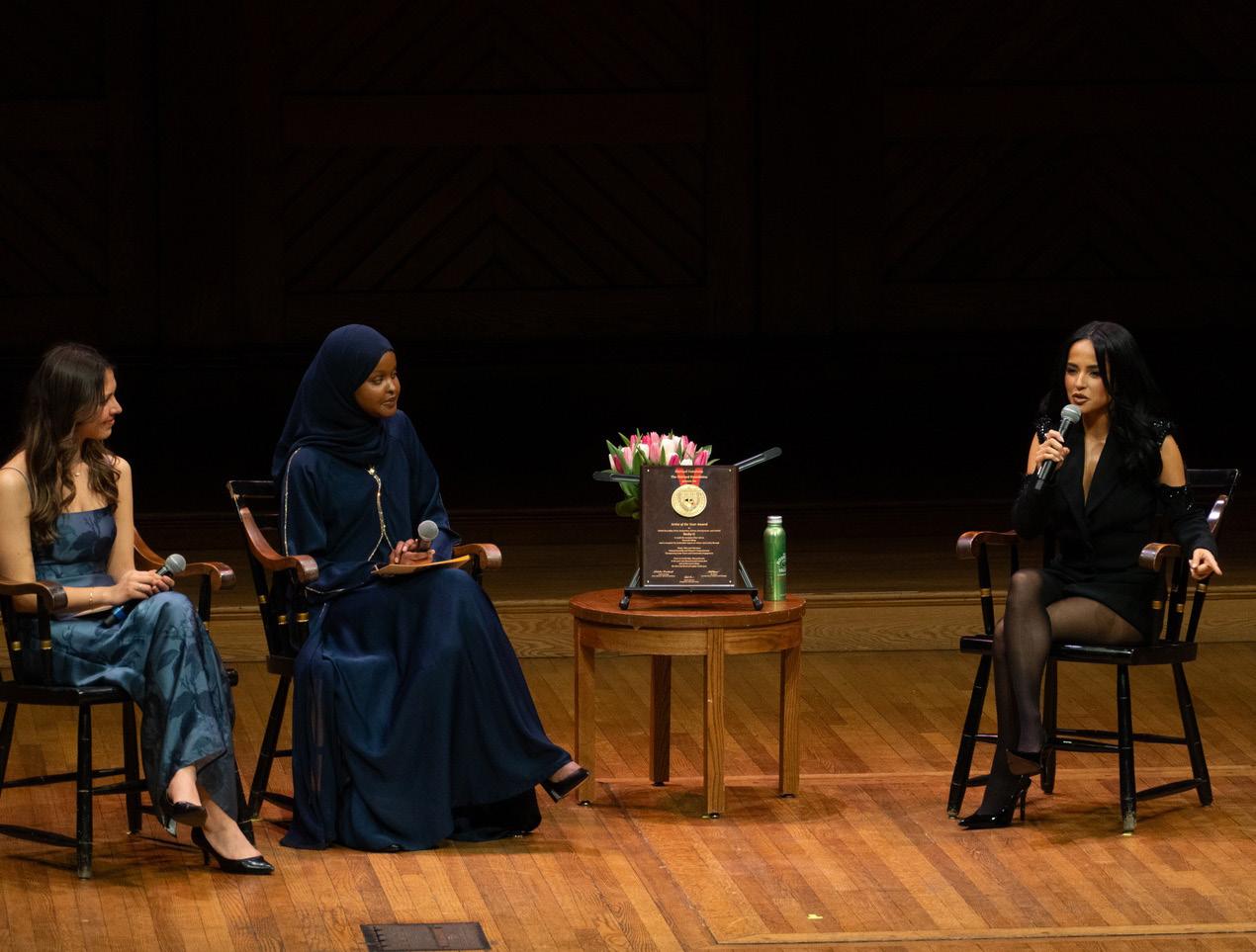
WITH ARTIST OF THE YEAR, BECKY G.
BY DZIFA A. ACKUAYI CRIMSON STAFF WRITER
On a rainy Saturday evening, hundreds of Harvard students, faculty, staff, and alumni headed to Sanders Theatre to celebrate cultural diversity on the College’s campus. The Harvard Foundation’s 39th Cultural Rhythms Show graced Harvard’s campus on April 5, boasting diverse powerhouse performances and a sit-down conversation with Artist of the Year, Becky G. This year’s annual celebration, hosted by Foundation student workers Isabela C. Gonzalez-Lawand ’26 and Tiffany C. Onyeiwu ’25, upheld its mission of highlighting the beauty of multiculturalism at Harvard. For Gonzalez-Lawand, this year’s celebration was particularly special with the selection of Becky G as Artist of the Year.
“We haven’t had a Latina artist in ten years. To see Becky G come to the stage and be that representation that we haven’t seen in so long was really important,” she said in an interview with The Crimson.
Many excited Latinx students filled the audience, screaming with pride when Gonzalez-Lawand ’26 asked them, “¿Dondé está la gente latina esta noche?” The show began with a land acknowledgement, delivered by LeMonie K. Hutt ’26, a Crimson Arts editor. Then followed speeches by Harvard’s Associate Dean for Inclusion and Belonging Alta Mauro, who praised Dean Rakesh Khurana’s support of the Foundation during his tenure as Dean of Harvard College — which will end
in June 2025. Next, the audience heard from the Harvard Foundation’s Senior Director Habiba Braimah, who declared that inclusivity means celebrating diversity, not just tolerating it. Even more, she reminded attendees that joy is “a bold, radical, intentional choice.” At last, the show’s directors Anapaula Barba ’25 and Hayat A. Hassan ’25 took the stage to kick off the performances and celebration.
The first group to take the stage was the oldest Black organization on Harvard’s campus, the Kuumba Singers of Harvard College. The group performed an Igbo song entitled “Jayama” and an African American hymn “Can’t Give Up Now,” adapted from “I Don’t Feel No Ways Tired.” After their performance, the group’s president Madison E. Valley ’25 spoke with the hosts, encouraging audience members to join the Kuumba singers in celebrating Black experiences and culture on campus through song.
Next, the Harvard Asian American Dance Troupe (AADT) performed a dance that combined traditional folk dance with modern elements. The ensemble wore white and yellow ombré costumes, gliding across the stage. Choreographer Jodie Y. Kuo ’25 and director Yafan Wang ’26 expressed how the troupe serves as a haven for students to celebrate Asian identities through various styles of traditional and modern dance.
The performance was followed by the Harvard Undergraduate Candela Latin Dance Troupe, dancing bachata, samba, and various styles of Latin dance to vibrant music and loud cheers from the audience. After their performance, the group took some time to teach the hosts some moves before the Harvard Dankira Dance Troupe was introduced. Harvard Dankira Dance Troupe, which is affiliated with the Ethiopian and Eritrean Student
Association, has been uniting students through traditional dance for the past two years. Though still new, the group has grown over the past two years and aims to showcase traditional dance from the hundreds of ethnic groups spanning across Ethiopia and Eritrea. This year, their performance showcased around seven different cultural dances featuring partner work and props, garnering high-energy responses from the audience.
Following Dankira, Harvard Undergraduate Bhangra took the stage. The group’s captains explained the history of bhangra, a dance style created by Punjabi farmers to celebrate the harvest. With colorful costumes and props, the troupe brought Punjabi culture to the Cultural Rhythms audience, fusing traditional music and dance styles with modern American tunes. Co-captain Raphael Tourette ’26 noted that they felt it was important that everyone felt they could relate to their performance.
The Harvard Undergraduate Philippine Forum closed off the first half with a traditional folk dance, tinikling. As some members tapped and slid large bamboo poles across the ground, others jumped around and in between them in a technically difficult and entertaining performance combining traditional and modern music.
After their performance, the troupe’s captains expressed their joy over the group’s expansion over the past year. They also shared the two versions of tinikling’s history: One that the dance was inspired by the movement of tikling birds in the Philippines, and the other that the dance was created during the Spanish colonial period, symbolizing Philippine farmers dodging their feet to avoid being hit by bamboo sticks as punishment by Spanish colonizers. Finally, the dancers gave a short lesson to the hosts be-
fore the show went to intermission.
Student and singer Bryant Y. Valenzuela ’25 opened the second half of the show with a medley of iconic songs including “Como La Flor” by Selena and “Somos Más Americanos” by Los Tigres Del Norte. Valenzuela said that he wanted to pick songs that people knew and that reflected his feelings “for the times,” amidst uncertainty faced by Latin American immigrants across the country. Valenzuela was greeted by thunderous applause and cheers as he graced the Cultural Rhythms stage for the third and last time before he graduates in May. For Valenzuela, this year’s performance was particularly special after seeing it change and grow across his four years at the college.
“I felt like I had a responsibility to show the diverse music that Mexican culture has,” he said. Following Valenzuela, Omo Naija x Wahala Boys took the stage with an energetic performance, taking the audience across West Africa through their dance themed around a group of characters trying to travel to Nigeria. The group’s captains Kai H. Reed ’25 and Ifeoluwa A. Adedokun ’25 emphasized the value of dance in building community in their own Harvard experience and reflected on the impact of Omo Naija x Wahala Boys on their time at Harvard.
Becky G’s entrance was built up to by performances by Mariachi Véritas and Harvard RAZA Ballet Folklórico. The audience erupted in cheers at the entrances of both groups. Mariachi invited audiences to “gritar,” or sing along. After playing a set alone, the Mariachi introduced RAZA Ballet Folklórico, which took the stage with gusto. The groups’ performances preluded the talk with Cultural Rhythms’ first Latina Artist of the Year in 10 years. In discussion with the Cultur-
al Rhythms co-directors, Becky G — one of the youngest Artist of the Year recipients — gave gems of advice to the audience and spoke of her musical and life inspirations.
“My source has always been my community, my family,” she said. After Becky G received her plaque and left the stage, some of the night’s performers reentered for one last hurrah, led by Ballet Folklórico.
This year, Cultural Rhythms championed community on and off the stage. For Hassan, the highlight of the experience was “working with each other,” referring to her co-director Barba. Barba remarked on the unique community events that took place over the week, including the fashion show where the Artist of the Year was announced.
“It’s not creating but more so bringing all of that together and allowing that to flourish,” Hassan said.
Despite widespread fears of federal funding cuts to the university amid federal moves against DEI, the Foundation remains hopeful and strong. Its director, Braimah, reminded people that “joy is a choice.” With the Foundation’s focus on “build[ing] bridges across lines of differences,” she looks to the future with determination.
“We recognize the importance of DEI, and today was a testament to that,” she said. Student workers like Gonzalez-Lawand are already gearing up for the anticipated 40th Annual Cultural Rhythms Show, ready to continue on the Foundation’s mission towards diversity and multiculturalism.
“I’m confident that Cultural Rhythms will continue to be bigger and better every year,” Gonzalez-Lawand said.
dzifa.ackuayi@thecrimson.com
‘The Wizard of THUD’ Review : THUD’s Drum-Believable Spring Performance
BY SARA R. EYJOLFSDOTTIR CRIMSON STAFF WRITER
You’ll feel it in your soul. The power from The Harvard Undergraduate Drummers’ spring performance
“The Wizard of THUD” could be felt through the floors of Lowell Lecture Hall on April 5. In a compelling mix of professional grade drumming performances, skits, and edited videos, the original production was a worthwhile display of musical talent. THUD is a student-run organization that performs for both independent and hired gigs around Cambridge and Boston on top of their culminating showcases near
the end of each semester. Priding themselves on their diverse selection of music and instruments, THUD demonstrated their unique approach to percussion in full force on Saturday. With a mix of video production, drama, and, of course, drumming, part of the show’s ability to keep their audience fully engaged came from the creativity that was woven through every act. From a xylophone to a container of popcorn kernels, the creativity and musical talent of each and every member of the group was on full display no matter the instrument. One of the most impressive acts of the show was the group’s interpretation of the “Wicked” hit “What
Is this Feeling?” consisting entirely of various tones created by banging differently sized plastic tubes called boomwhackers against their legs. In an emotionally charged showdown between Glinda (Katie M. Benkelman ’28) and The Wicked Witch of the West (Ava E. Della Pietra ’27), the students’ feet, brooms, and wooden staffs were all expertly used to create a captivating display of talent. Following this theme of originality, “The Wizard of THUD” also featured a number of original pieces. Video clips ranging from blog entries to a “Keeping Up With Elphaba and Glinda” skit were successfully utilized to fill the time in between acts. However, a large
amount of the clips were somewhat long-winded and seemingly random, and the overall show would have benefitted from tightening up some of these gaps.
One of the performances that deserves a special mention for acting on top of drumming was that of Bella F. Pignataro ’25, whose portrayal of The Scarecrow, a frat boy obsessed with the two witches, was certainly a standout. Despite this, a few hiccups in line deliveries and some stilted dialogue execution from some of the other performers meant that the acting provided a small departure from the otherwise professional-level atmosphere that was created by the musical acts. Yet, with some well-
timed improvisation from THUD members and the positive audience engagement that had been cultivated from the beginning, these missteps were quickly forgiven. Unphased by the slightly smaller crowd at the first of two showings, the performers maintained an impressive level of energy throughout. An explicit announcement prior to the show encouraging audience members to show love during the performance — whether that be hooting, hollering, or whatever interjection the heart desired — established “The Wizard of THUD” as a charmingly interactive experience. If one thing became clear about the Harvard drumming community, in part demonstrat-
ed by the presence of a number of alumni at the performance, it’s that their passion and support for their craft as well as their members runs strong. The performers’ raw talent and clear dedication to putting on the best performance possible was demonstrated time and time again throughout the show, compensating largely for some of the less effective or professional aspects. Filled with a clear love and respect for the art form, “The Wizard of THUD” provided an enjoyable and engaging display of some of the most impressive percussive and creative talent on Harvard’s campus.
sara.eyjolfsdottir@thecrimson.com
BY THOMAS A. FERRO CRIMSON STAFF WRITER
Close your eyes and ask yourself, “What does Harvard look like?” What do you see? Brick buildings, perhaps? Iron gates, Corinthian columns, sweeping façades? You’d be right if you conjured any of the above images, but the campus isn’t just made out of bricks.
In an interview with The Crimson, Haden Guest, a senior lecturer in the Department of Art, Film, and Visual Studies (AFVS) and the director of The Harvard Film Archive (HFA), posed and offered an answer to that very question: “They think about the Yard, about Widener. They think about neoclassicism or fabulous style. They think about these ‘classical’ styles. They don’t think about modernist or brutalist architecture.”
The range of architectural styles at Harvard College is vast, from stately brick and granite edifices to old Victorian manors to sprawling brutalist structures. Individually, each space is rich in history and unique in its relation to campus. Collectively, however, the spaces of campus play a bigger role. The structures together offer what one alone cannot: a tapestry of physical forms that interacts with the lives of thousands of people each day, a collection of intertwined histories that reflect on the past while embracing the future, and a smattering of very different components of the same portrait. What results is difficult to define but easy to recognize: Harvard College.
But, before one can truly see the full architectural portrait of the College, it needs to be broken down into parts.
To start, one space on campus — resting between the dignified bricks of the “classic” Harvard buildings — is the Carpenter Center. Understated and subtle, this structure was completed in 1963 by the renowned Swiss-French architect Charles-Édouard Jeanneret — more famously known as Le Corbusier — and is the architect’s only North American building.
The Carpenter Center falls under the category of brutalist architecture, with its seemingly simple employment of concrete and glass — though, like any artistic creation, it can hardly be understood with just one word.
To some, the building may seem out of place. To others, it is home to the AFVS department, the HFA, gallery spaces, and studios for painting, sculpture, and woodworking. To many more, it is an architectural pilgrimage site.
Building Harvard College: The Carpenter Center
THE RANGE OF ARCHITECTURAL STYLES AT HARVARD COLLEGE IS VAST, FROM STATELY BRICK AND GRANITE
EDIFICES TO OLD VICTORIAN MANORS TO SPRAWLING BRUTALIST STRUCTURES.
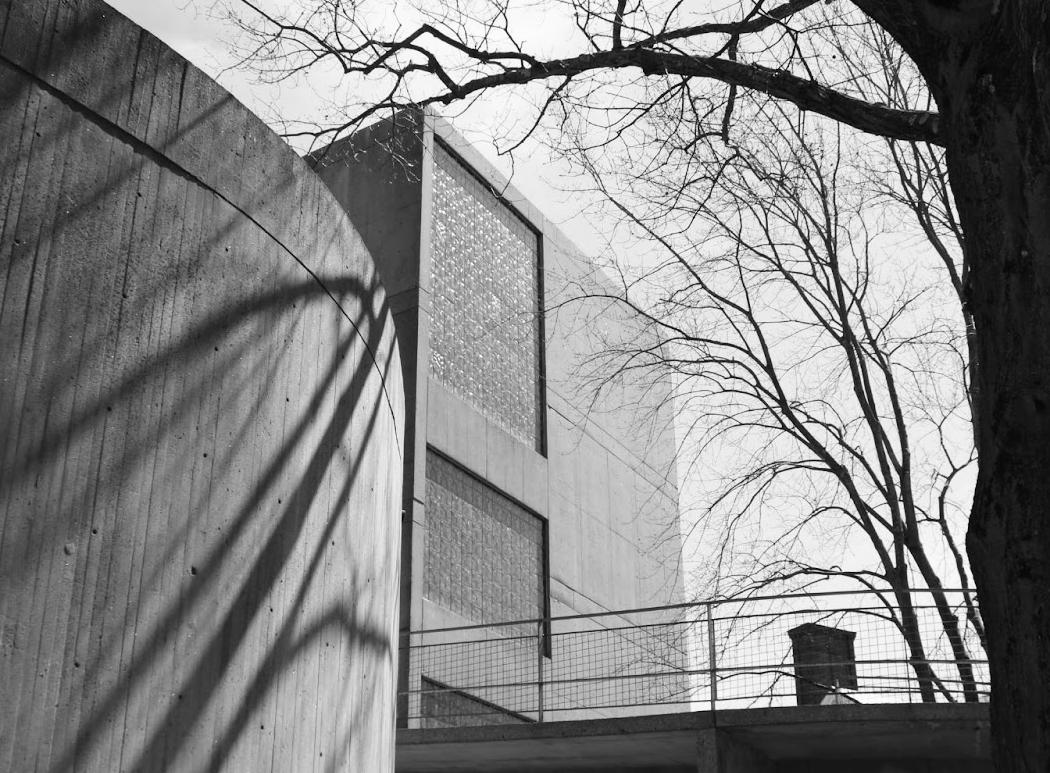
Patricio del Real, an associate professor in the Department of the History of Art and Architecture, said, “It’s a building that is difficult to love, one could argue, at first meeting.” del Real emphasized the uniqueness of the Carpenter Center, noting its careful construction, historical significance, and position on campus. Despite brutalism’s reputation for severity, the Carpenter Center evokes a softness.
“It still has this kind of intimate character, especially in summer or in fall and spring, when the trees are in bloom, where you have this kind of intimate space,” del Real said. As del Real explained, Le Corbusier constructed the space with a careful consideration of its surrounding environment, its purpose as an educational building, and the needs and desires of its daily visitors. When planning the building’s construction and walking through campus’ center, Le Corbusier identified four ele-
ments — or, “essential joys” — of Harvard Yard: “light, space, greenery, and movement,” del Real said.
Of course, Le Corbusier was looking for what makes Harvard Yard “work,” aiming to transform what makes students happy into elements around which the construction of the Carpenter Center could be centered. He succeeded. Each of these four “essential joys,” in retrospect, are what makes the Carpenter Center resonate with visitors today. It invites light via glass elements that breach the gray concrete, it plays with layers of space with rooftop platforms and sunken courtyards, it features grassy areas and an elevated rosemary garden, and, lastly, it is centered on a S-shaped bridge that pierces the core of the structure.
“It’s dynamic like no other building. It’s a building that looks completely different on each of its facades. And to me, in that sense, it’s like a work of sculpture. It seems to move as you walk around it and look at it,” Guest said.
‘Joana Choumali: Languages of West African Marketplaces’ Review
Rotonde des Arts, and Palais de la Culture.
clothing, a powerful reflection on capitalism and its effects.
The building is, in a sense, a sculpture: an art installation that allows one to better understand not only the structure but the space around it.
“[Le Corbusier] believed in this universal production of the arts and architecture as an artistic endeavor, not as just a functionalist endeavor,” del Real said.
The Carpenter Center was constructed near the end of Le Corbusier’s long career, and, as a result, was a near-perfect culmination of his architectural projects and motifs: “This is the whole of Le Corbusier all in one building. I think that’s also why it’s actually such an important building in the overarching oeuvre,” del Real said.
Despite being a game-changing modernist, Le Corbusier was classically trained, and, unlike many of his counterparts, was vocal about taking inspiration from the ancient Mediterranean world, del Real described. However, his classical inspirations are subtle in comparison to his modern, inno-
showcases unique and compelling artistic forms but also invites the viewer to engage with thought-provoking, critical questions. It is an insightful critique of fast fashion and its global impact. There is an extreme attention to detail from the artist, with every rough seam of
vative tendencies. Concrete, for instance, was one of Le Corbusier’s favored materials.
“[Concrete] is a democratic material — a common material.
It’s not marble,” del Real said.
Sophie Pratt, gallery and bookshop attendant at the Carpenter Center and a graduate of the Harvard Extension School, pointed to the striking contrast that the building’s material creates within its environment.
“Harvard — and Boston as a whole — is very much a city built of brick. We have a really long history of brick making; A lot of our older buildings are made of brick, so you see that walking on campus. And so, putting a concrete building right next to everything is an interesting twist on that,” she said.
From his ancient inspirations to his love for concrete, Le Corbusier was able to include every side of himself in the construction of this building: “It’s one of these moments where architecture starts to reflect also on personalities,
the tulle, the careful choice of the background, and the way the threads at the bottom of the portraits are arranged. This exhibit is a one-of-a-kind experience that makes one challenge the complex stories that may lie between pieces of thread, both about the individual and larger
on ideas, but also on an aesthetics — they’re all kind of crossing and creating this kind of mesh,” del Real said.
Surprisingly, Le Corbusier only visited the site twice and never saw the finished result. According to del Real, the project wouldn’t have been possible without the collaborative efforts of Josep Lluís Sert — a trusted friend of Le Corbusier and integral figure in the project — co-designer Julian de la Fuente, and engineer William de Mistura, who helped structurally achieve “the vision of Le Corbusier.”
“Architecture is always a collaborative work,” del Real said. One of the most important parts of the building is its steadfast commitment to its purpose. The Carpenter Center is and has always been a center for the arts. Beyond his work as an architect, Le Corbusier also painted and sculpted, and his profound understanding of artistic production is evident throughout the building, where, as Guest said, glass-walled studios act as “beehives of activity.”
“As you go in the studios and you see the drips of paint from past decades in some of the sinks, and so there’s a patina of history of a kind that you don’t often see; of actual use and late nights spent at the end of the semester completing projects,” Guest said. This commitment to space and purpose doesn’t have to be proven; It’s clear in how people interact with the
interests and aesthetic, for it to satisfy its patrons and visitors, for it to withstand the test of time. 60 years later, however, and Le Corbusier’s Carpenter Center still stands, sinking into the spring grass amid budding trees, offering solace to students and artists, joggers and cyclists, and the pilgrims who have traveled far and wide to take a seat in its rosemary garden, enjoying the view of Harvard Yard.
When walking into the “Languages of West African Marketplaces” exhibit located in the University Research Gallery at the Harvard Art Museums, the bright thread of the exhibit quickly jumps out against the blank white walls of the museum. As the visitor steps closer, the somewhat 3D images of the characters create an uncanny effect that pulls them in even further. Each of the 12 life-size photographic tapestries features a composite portrait of a person, meticulously hand-quilted and embroidered. The portraits are overlaid with a layer of tulle and show the subjects wearing shirts printed with English-language slogans. The portrait begins as a fullbody image but abruptly stops at the knee, changing into pieces of bright thread. This exhibit was created by Joana Choumali, an accomplished artist and recipient of the 2020 Robert Gardner Photography Fellowship at the Peabody Museum, in collaboration with the Harvard Art Museums. Choumali’s work largely focuses on Africa, using a unique blend of textiles and colors, and has appeared at the Museum of Civilizations, the Dowhali Foundation for Contemporary Arts, the
This exhibition is especially close to home for Choumali, who was born in Abidjan, Côte d’Ivoire, and uses the markets there and in Ghana as inspiration for the work. In many West African port cities, people purchase secondhand fast fashion items discarded by the United States and Europe, and although these clothes are widely worn, many of the wearers do not understand the prominent English text or jokes printed on them because of their lack of English proficiency. During visits to the market, and with the help of translators, Choumali explained the meanings of the English phrases on participants’ shirts. She then asked them how they felt about the messages they were unknowingly wearing. Many of the messages on the shirts convey suggestive meanings and reflect gendered language. Many participants admitted they didn’t understand the innuendos. Several expressed a preference for wearing locally made cultural clothing instead. Still, the common thread was that personal feelings mattered less than affordability, and the low cost ultimately outweighed everything else. This creates a power dissonance between the wants of the wearers and their inability to express themselves in
In her artistic process, Choumali begins by creating a background with snippets of the scenes from the market and overlays the background with tulle, creating a foggy, hazy effect. The portrait shows a person standing in stark contrast to the background, their image gradually dissolving into colorful threads just below the knees. In their eyes, the visitor sees more than a portrait, they see sparks of real lives that invite quiet questions. There’s an emotional pull in the images, a sense of real connection. But the twist? None of the people are real. Choumali scans the photographs of real people, does a skin color analysis, and then creates a new image with snippets of old faces. While each person feels undeniably real, the visitor is actually seeing a completely manufactured fictional face. This is an extremely bold and rare choice. It raises a subtle ethical dilemma: The full body and name of each person are displayed, leaving no anonymity, yet they aren’t given credit. Is it ethical to represent someone so completely without acknowledgment? There is no clear or easy answer to the question, leaving the visitor with another challenging question. Overall, the exhibit not only
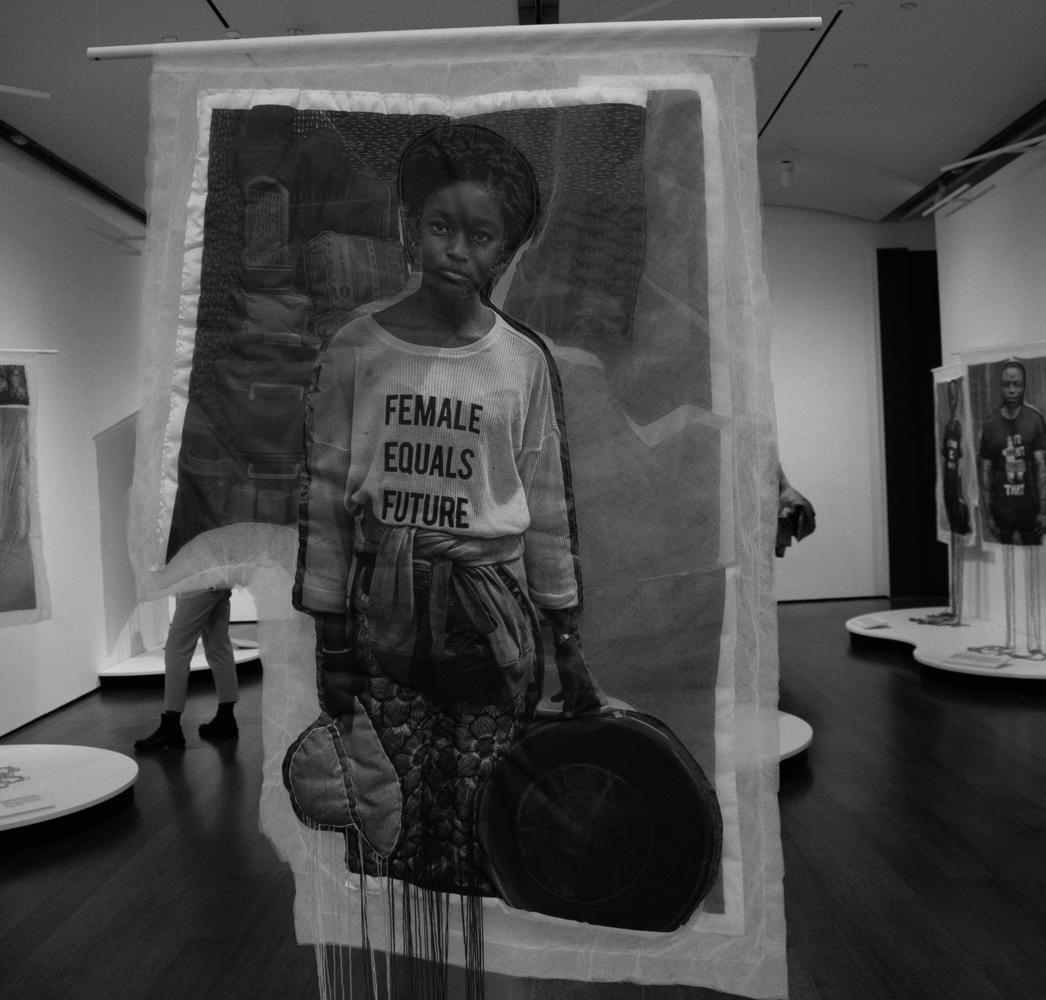
THE HARVARD CRIMSON
APRIL 18, 2025
Lawrence H. Sum -
mers is a University Professor and Harvard President emeritus. The following conversation has been edited for length and clarity.
FM: Two weeks ago, after the Trump administration said it would review nearly $9 billion in federal funding to Harvard, you wrote that Harvard needed to push back against an administration acting in bad faith. Now, it’s happened. How do you feel?
LHS: I’m very glad to see the University’s response. I thought President Garber’s letter to the community and our lawyers’ legal response to the administration attorneys were both eloquent, forceful, and appropriate.
FM: You wrote two weeks ago that there are ways to clev erly maneuver endowment funds to weather a financial crisis, including, potentially, the use of funds restricted by donors to specific causes. Can you walk me through what that would look like?
LHS: There are a number of ways of mobilizing funds. The University has, including in the president’s office, substantial reserve funds. There are areas where there are restricted funds that are being used where there are also unrestricted funds being used, and so, by increasing the flow of restricted funds, one would free up unrestricted funds. The University in the past, for major university causes, has placed levies on all endowments across the board. So, there are a variety of ways of achieving financial flexibility.
These types of measures usual ly are more effective in weath ering short-run storms than fundamental long-run changes in climate, but my hope would be that what Harvard is con fronting is a short-run storm.
FM: You’ve been very vocal about the presence of antisemitism at Harvard, and you’ve called out its lack of ideological diversity. At the same time, you’ve said the Trump administration is misusing those concerns in an effort to control univer sities. If, as you’ve said, the University has failed to ad dress these concerns on its own, is there a time when the federal government should step in? And if so, what does that look like when done right?
Q&A:
WHAT’S NEXT IN THE FIGHT FOR HARVARD’S FUTURE? FIFTEEN MINUTES 17
FIFTEEN QUESTIONS. Lawrence H. Summers, a former Harvard president and Secretary of the Treasury, backs the University’s decision to push back against the Trump administration, explains how the endowment could help weather the storm, and says this crisis will ultimately strengthen higher education.
BY NEIL H. SHAH CRIMSON MAGAZINE WRITER
people who engaged with it and who have passed through its gates but also because of the scale of its resources and the power of its reputation. At a time of testing for the country and in the world, with all of our privilege, it’s never been more important that we think about what is right and carry it out in ways that best serve both the immediate moment and posterity. That’s why I think it’s important for all of us to think very carefully about what we are doing and how we can maximize its positive impact. That means being willing to rethink where that’s appropriate, resist when that’s necessary, and respond when new conditions and new challenges make new approaches necessary.

LHS: I think one needs to distinguish discrimination from general concerns that the University could operate better. It’s not the place of the federal government to decide that institutions, for-profit or non-profit, could fulfill their missions better and start ordering them around. That’s not what happens in a free society.
It is the case with respect to discrimination, carefully defined.
The federal government’s financial interventions at universities that banned interracial dating were, in my view, appropriate. And so, in the face of egregious tolerance of antisemitism, for the federal government to enter dialogue and even to place pressure around specific policies, I think is appropriate. I had no objection to the Biden administration’s decision to investigate Harvard and other universities over antisemitism. But a decision to investigate is a very different thing than a set of announcements that contravene the relevant statute many ways over.
FM: Did you find any of the Trump administration’s demands to be reasonable?
LHS: There was material in the Trump administration’s letter that connected to many of the concerns I’ve expressed around antisemitism, around ideological diversity, around excesses in the name of DEI, around failure to maintain order, but the tone and manner and bludgeon that was involved in the Trump admin -
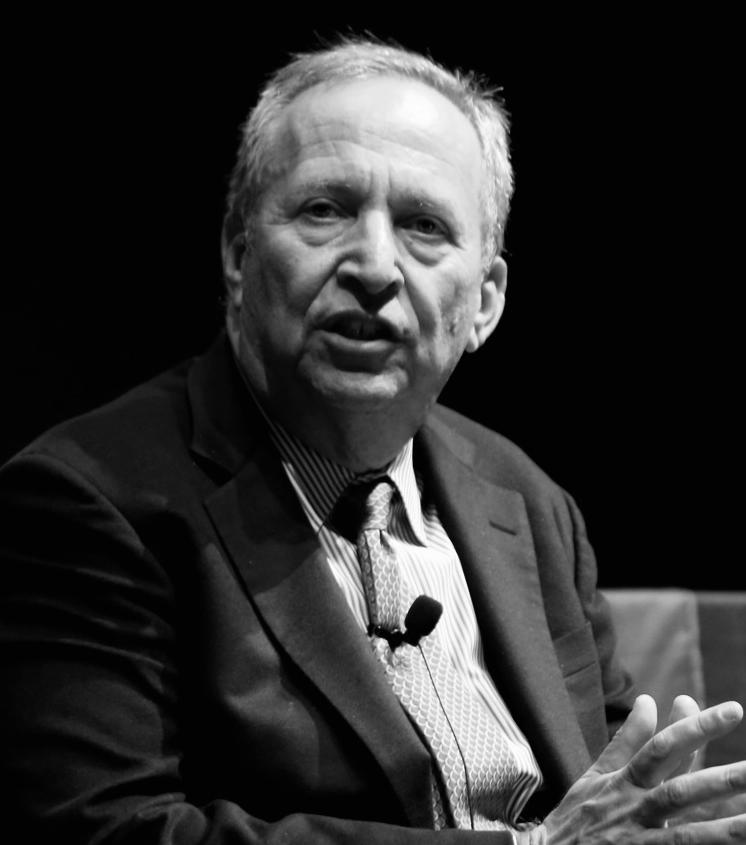
istration letter seemed to me something that the University had to reject.
There will be a temptation on the part of some to focus on how outrageous the Trump administration demands are and lose sight of the many ways in which great universities like ours have estranged themselves from the broader society and the need for internal reform. It’s troubling to me that it has taken as long as it has to come to the conclusion that major reform was necessary at the Center for Middle Eastern Studies or that postponing our Birzeit University partnership was in order.
The near-unanimity that seems to exist that Harvard must respond to this external threat should never be confused with legitimate grounds for complacency about the way in which we’re now operating.
FM: Can universities like Harvard regain public approval? And if so, how?
LHS: I think these things always fluctuate and, in general, in life it’s a good rule that there are no final victories and no final defeats — or that, as statisticians like to say, things mean revert.
I think if Harvard shows itself to be returning to the pursuit of truth rather than advancement of particular causes of social justice; I think if Harvard emphasizes diversity of perspective more and diversity of demography less, in line with the Supreme Court’s edicts; I think if Harvard does less commentary from a far left perspective on the political issues of the day; I think if Harvard does more to contribute to the vast challenges of education by greatly
broadening its efforts in distance education and by engaging in a substantial way with the task of improving public schools; I think if Harvard becomes less exclusive by allowing the scale of its classes to increase somewhat, by making its summer school an engine of opportunity; I think if Harvard focuses on assuring that its remarkable capacity for innovation is effectively translated into viable private enterprises that increase American competitiveness and employ large numbers of people; I think that, in those ways and many more, Harvard can further demonstrate the immense contribution that it makes to the success of the American project and humanity more broadly.
But I think that achieving all of that will require some adjustment in our ethos — away from self-regard, away from taking pride in exclusivity, and towards thinking of ourselves as institutional citizens. But I think there’s an incredible number of very, very dedicated extraordinary people in the Harvard community. I am a big fan of Alan Garber’s, and so, while I think we’re headed into a very challenging time, I’m ultimately an optimist.
FM: You’ve spoken about the importance of globalizing higher education and about how Harvard needs to admit both more international students and give its students more international experiences. With the recent wave of student visa cancellations, do you think those ideals are still achievable?
LHS: I hope so. I would hope that the University is very vigorously defending members of our community against injustice. It can’t
be Harvard’s place to resolve every immigration dispute or to become engaged in the personal affairs of everyone who works or studies here, but, where there are — as has been reported — attacks on Harvard people for reasons related to what they do at Harvard, I would hope that as appropriate in public or private ways Harvard would be very, very much standing with them.
I’ve always thought that Harvard has a crucial role to play as an American university with global reach. And I think by focusing on the global aspect, it best advances American interests.
I remember very well the story of a man named Yakovlev who was Gorbachev’s ideological advisor, and he was the man who invented “perestroika” and “glasnost” — the concepts that drove the liberalization that brought the Berlin Wall down and ended the Cold War. And he was asked: where did he get those ideas? And the answer was he got them from a year he had spent in the United States as a graduate student in some kind of exchange program. If you think about it, having done that, if all of academia’s efforts at global interchange had done nothing more than that, a major contribution to the peaceful end of the Cold War would be enough to justify all of it. I think it’s profoundly important, and I hope and trust that that is something that Harvard will remain open to.
Let me say, if I could, just a final thing.
FM: Go for it.
LHS: Harvard is an extraordinary institution — above all because of the remarkable quality of the
FM: Yesterday morning, President Trump threatened to take away Harvard’s tax-exempt status. Could Harvard, as we know it, survive that, and is that even possible?
LHS: I used to be Treasury secretary. The idea of the President of the United States intervening with respect to the tax status of an individual institution is something that would have been beyond conceivable in any previous administration. It violates every norm, every ethic, and, I very strongly suspect, a variety of relevant statutes. I cannot imagine that the selective persecution of an institution via political pressure from the president would be permitted by the judiciary. Certainly, anything in this direction would have been a resignation issue for the IRS commissioners I knew and very likely for the Treasury secretary as well.
There is, of course, a policy question about whether universities should be eligible for charitable contributions. That is the kind of policy question that Congress addresses in tax legislation. It would be legal to reach a broad judgment about the tax status of universities. The evidence from many economic studies is overwhelming that the charitable deduction is an enormous stimulus to giving to universities and other institutions.
Without philanthropy, our great universities could not be what they are in terms of preserving the Western tradition, serving as custodians for humanity’s greatest ideas, and advancing scientific progress on everything from artificial intelligence to cancer cures and from the atmospheric science of global warming to the treatment of badly injured accident victims. There is no single factor more important in explaining why almost all of the world’s best universities are American than our tradition of private institutions supported by philanthropy.
FM: Do you think that Harvard’s decision to fight the federal government on this is going to lead to more philanthropy?
LHS: I hope that the University’s supporters will come forward in support of academic freedom. I know that I would be very responsive to any kind of academic freedom appeal as an alum, and I suspect thousands of others would as well. The stakes here go beyond new buildings for Harvard. They go to the idea of progress through thought and to the preservation of American democracy.
Harvard Splits Series Against Princeton
BY DHRUV T. PATEL AND SAKETH SUNDAR CRIMSON STAFF WRITERS
In a season soaked with struggle and a weekend battered by rain, the Crimson finally caught a ray of light. With Ivy League positioning on the line, Harvard baseball showed flashes of elite pitching and timely offense in its abbreviated series against Princeton. Harvard (5-21, 3-8 Ivy) split a Friday doubleheader against Princeton (8-24, 5-6 Ivy) at O’Donnell Field, dropping the opener 1-0 before bouncing back with a dominant outing from sophomore right-hander Truman Pauley to take game two, 3-2.
Originally scheduled as a standard Saturday-Sunday series, heavy rain forced the Crimson and Tigers to play a Friday doubleheader instead. Conditions remained unfavorable into the weekend, and the series-deciding third game slated for Sunday was officially canceled the morning of and postponed indefinitely.
Despite the shortened series, the Crimson made the most of its time on the field — thanks in large part to its starting rotation, which included junior right-hander Callan Fang and Pauley. Fang — last year’s Ivy League Pitcher of the Year — held Princeton scoreless through seven innings in the opener, while Pauley came within inches of a no-hitter in game two. Pauley, in particular, de -
livered one of the most dominant outings in recent Crimson memory.
Harvard 0, Princeton 1 Harvard dropped the series opener despite one of its best pitching outings of the season.
Junior right-hander Callan Fang delivered a standout performance on the mound, tossing a career-high 8.0 innings and allowing just one run on four hits. He issued three walks and struck out four, keeping the Princeton offense in check for the majority of the game. Fang was especially effective in the early and middle innings, retiring the side in order in the second, fourth, fifth, and sixth frames. His command was especially visible in the top of the seventh, when the Tigers put runners on first and second with no outs. But Fang calmly navigated the jam, retiring the next three batters to escape unscathed.
The sole run of the game came in the top of the eighth. Princeton’s Jay Mentink led off the inning with a double, advanced to third on a sacrifice bunt, and scored on a groundout to shortstop. The run, however, proved to be the difference despite Fang’s best efforts.
First-year left-hander Luca Alagheband took over in the ninth and kept Harvard within striking distance. He tossed a clean frame, allowing no hits and recording a strikeout. Alagheband also benefited from Harvard’s third double play of the night — one of sev -
eral standout moments for the Crimson defense.
At the plate, the Crimson offense recorded six hits but couldn’t break through against Princeton starter Andrew D’Alessio, who delivered a dominant outing of his own. D’Alessio threw a career-high eight innings, allowing no runs with eight strikeouts and no walks. He was particularly effective from the fourth through the seventh, retiring 12 of the 13 batters he faced during the middle innings. Harvard’s best scoring chance came in the second when junior Jordan Kang laced a two-out double into left-center, but a groundout ended the threat. In the fourth, the Crimson put a runner on second following a single and an error, but D’Alessio again worked out of the inning with two strikeouts and a groundout.
Despite scattering six hits, the Crimson couldn’t find the timely one they needed to push a run across. Princeton’s bullpen closed the door in the ninth, sealing the 1-0 win and preserving the hard-luck loss for Harvard.
Harvard 3, Princeton 2 In game two, the Crimson turned to Pauley, and the sophomore delivered his best outing in a Harvard uniform, striking out 12 Tigers over 8.1 innings while allowing just one hit. The no-hitter was broken up in the ninth with a double, but Pauley exited with one of the best pitching performances in recent Crimson history.
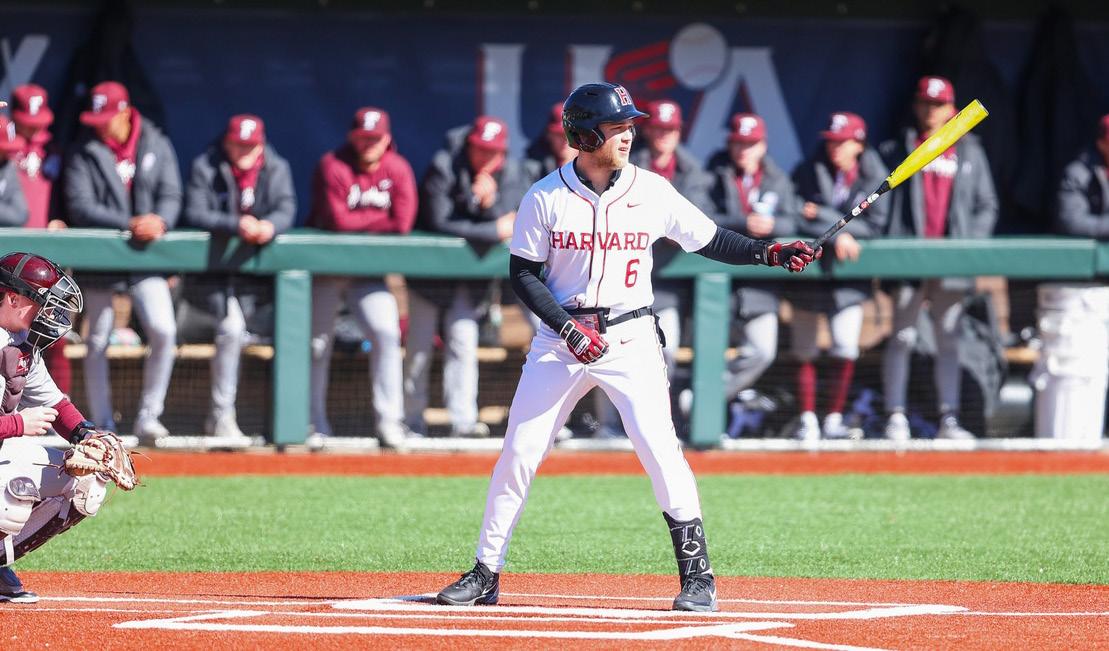
Had he finished the game without surrendering a hit, Pauley would have become the first Harvard pitcher to throw a no-hitter in Ivy League play since 2018 — and only the second since 2001. The outing marked Pauley’s second straight impressive conference start; just a week earlier, he tossed six shutout innings against Dartmouth, striking out six while allowing just four hits.
“I wasn’t that dialed in until the eighth inning. And I was like ‘Oh, Coach is letting me go for it. I really gotta try and lock in right now,” Pauley said in a postgame interview with Harvard Athletics.
“Going out in the ninth today, that’s the best experience I’ve ever had,” he added.
Pauley’s 12-strikeout outing pushed him to second in the Ivy League in both strikeouts
and opponents’ batting average (.191), continuing a turnaround from early-season struggles — including a 7.11 ERA entering the weekend. Harvard gave him early support in the bottom of the third with Giberti and sophomore Jack Rickheim placing down back-to-back bunts. With runners in scoring position, senior William Lybrook and sophomore Tyler Shulman came through with RBI singles to give the Crimson a 2-0 lead — a welcome return to the consistent hitting that had been missing in key Ivy matchups earlier this season.
Shulman added another run-scoring single in the seventh, bringing home senior George Cooper to extend the lead to 3-0.
Defensively, Harvard stayed sharp. After Pauley exited with
one out in the ninth, sophomore Ryan McHugh — Pauley’s roommate — forced a game-ending double play to secure his second save of the season. The victory marked the first time this year Harvard has won when scoring fewer than four runs. The Crimson now turns its attention to the rest of a pivotal seven-game homestand, beginning with a midweek tilt against Stonehill on Tuesday before welcoming Cornell and Columbia for back-to-back Ivy League series. With the Beanpot Championship at Fenway Park on April 29, Harvard will look to carry forward the momentum from Friday’s breakthrough as it enters a crucial stretch of the season.
dhruv.patel@thecrimson.com saketh.sundar@thecrimson.com
Harvard Falls to Cornell, Sets Sights on Yale
BY ISABELLE C . SMAIL CRIMSON STAFF WRITER
Despite an impressive fourthquarter effort, No. 22 Harvard women’s lacrosse fell just short to Cornell in a cold and rainy game on Schoellkopf Field on Saturday. In the last fifteen minutes of play, the Crimson (7-5, 2-3 Ivy) came roaring back from a threegoal deficit, but failed to secure the win in the final seconds of the game. The Big Red (9-4, 3-2 Ivy), celebrating its senior class of 16 student-athletes, was able to seal the victory with just 39 seconds remaining in regulation play. Both teams had successful offenses in the first fifteen minutes. Junior Charlotte Hodgson, the Ivy League’s leading draw specialist, struck first for the Crimson, giving the visiting team the early lead.
Cornell’s Josie Vogel, daughter of Harvard men’s lacrosse alum Ralph Vogel ’91, quickly evened the score with a point of her own.
The Harvard team then went on a three-goal scoring run, as Grace Mullahy, Charley Meier, and Nicole Giannakopoulos all tallied quick goals. With the scoreboard displaying a 4-1 advantage for Crimson, it looked as though Harvard might use its momentum to coast to an easy win. However, after a green card was called on Hodgson, Cornell secured possession of the ball in the circle. Ella Wilmot, a junior attacker for the Big Red, proceeded to end the Crimson’s scoring streak, narrowing the score to 4-2.
One of Harvard’s captains, Annabel Child, snagged the following draw control and pushed the ball upfield and into the trustworthy hands of her fellow captain, Caroline Mullahy. Mullahy currently holds the Ivy League record for most career assists. The Morrisville, N.C., native’s offensive prowess and selfless style of play have also earned her a spot on the Tewaaraton Award Watch List.
Mullahy sent the ball to sophomore Callie Batchelder, who tallied her first goal of the game and her 20th of the season. Cornell, however, responded with two rapid goals of its own, feeding off the energy of its fans and its senior class during its final home game of the season.
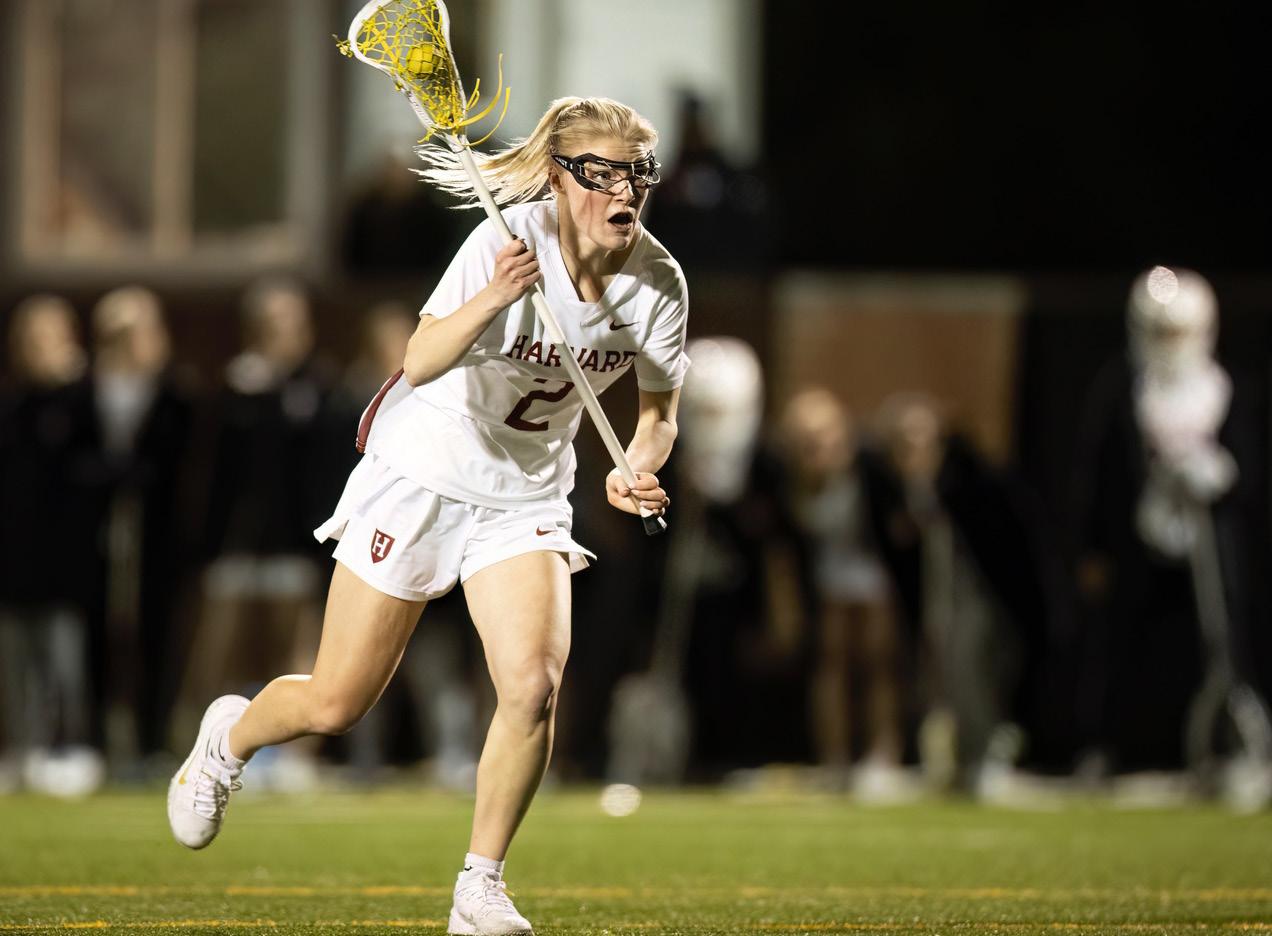
At the end of the first quarter, Harvard maintained the lead with a score of 5-4. Notably, the Crimson had earned each of its five points from different players, showcasing its dynamic offensive capabilities. Harvard did an excellent job defending Cornell’s Caitlin Slaminko, who also made the Tewaaraton Award Watch List. This season, Slaminko has been a dominant offensive weapon for the Big Red. She has already tallied an impressive 38 goals this season. However, the Crimson’s aggressive defense effectively shut her down, keeping her to just one goal during the game. Although the pace certainly did not slow down in the second quarter, it was clear that the defensive units on either side of the field warmed up, as scoring plays were less frequent. Harvard’s freshman Tori Balser earned the first draw control and was able to swing the ball around the 12-meter.
The Crimson’s third captain, Meier, looked for her second goal of the game, but ripped the shot just wide of the net. Her effort was backed up by the crease attackers, who kept the ball in Harvard’s hands. Sophomore Chloe Bednar flung another shot on net, but it was saved by Cornell’s goalkeeper, Mackenzie Clark. Despite Harvard’s aggressive
ride, Cornell was able to complete a clean transition upfield and capitalized on a free-position shot, tying the score at 5-5. Hodgson then earned yet another draw control and set up in Cornell’s defensive territory. Caroline Mullahy, looking for a feed, was pushed from behind by a Big Red defender. The referees penalized Cornell with a yellow card for the incident, giving Harvard a woman-up advantage. Mullahy, seemingly unfazed by the push, set up for a free position shot on the 8-meter. When the whistle blew, the senior fired the shot home, putting the Crimson ahead, 6-5. After a media timeout, Harvard struck again. Balser was able to snatch up the draw and send the ball back to Mullahy behind the net. The captain looked for a feed and found Batchelder alone in front of the goal. She dished the pass to Batchelder, who deftly caught the ball and sent it home. The score read 7-5, in favor of the Crimson.
In the final minute of the half, there was a series of turnovers, fouls, and failed clear attempts from both teams, resulting in a chaotic back-and-forth rush in the midfield. Cornell was finally able to snag a ground ball and earn clean possession. The Big Red’s senior attacker Maggie
Pons executed a stellar backdoor cut, secured the feed, and scored on the play.
Thanks to another excellent effort from Hodgson, Harvard won the following draw control. The team also drew a yellow card foul from a Cornell defender, earning another woman-up advantage. It looked like the Crimson would score on the opportunity, as sophomore Stella Shea lined up for a free-position shot. However, the Big Red’s goalie came up with another huge save, squashing Harvard’s attempt. Cornell, led again by Pons, capitalized on the following slow break, as the team completed the same play as before, and Pons scored on another backdoor cut. With less than a minute remaining in the half, the scoreboard remained locked in a 7-7 tie.
After the halftime break, Harvard’s head coach Devon Wills made the surprising decision to switch goalkeepers, swapping out senior Lizzie Francioli for freshman Emma Barkauskas. The game marked the rookie’s second collegiate appearance, the first being the Crimson’s 23-12 win over Bryant.
The two teams seemed to be stuck in a defensive standstill during the first half of the third quarter, as neither side was able to
score. After seven and a half minutes of play, Cornell finally struck, which ignited a three-goal scoring streak.
After the Crimson’s Despina Giannakopoulos was called with a yellow card, Pons converted again on the woman-up chance.
Hodgson, seemingly unstoppable in the circle, won the next draw. The Wyndmoor, Pa., native raced upfield and ripped a shot, however, she was stopped by Clark, who made another critical save for Cornell.
The Big Red’s bench and sideline both exploded in cheers for Clark’s impressive save, and the home team ramped up its momentum. Back-to-back goals from Kylie Gelabert and Pons rounded out the quarter, putting their team ahead by three and blanking the Crimson during the quarter.
Harvard stormed into the fourth quarter with urgency, determined to overcome the deficit.
Caroline Mullahy, who was hounded all game by Cornell’s aggressive defense, earned a free position shot early and converted it to finally break the Crimson’s second-half scoring drought. Moments later, a Cornell green card gave Harvard another opportunity, and Hodgson buried a free-position goal to cut the deficit to one.
Hodgson excelled in the circle as she and Nicole Giannakopoulos secured possession for their team again. The Crimson capitalized on the opportunity. Batchelder, spotted open in front of the net by Grace Mullahy, was hit with a perfect feed and completed her hat trick to tie the score at 10–10.
Cornell, rattled by both the ease and the speed at which Harvard evened the score, called a timeout to eliminate its opponent’s momentum. The Big Red earned possession of the ball but was then stopped by the Crimson’s defense, as Balser scooped up an overthrown pass and sprinted upfield, transitioning smoothly to offense. Grace Mullahy, following in the selfless footsteps of her older sister, made another stellar pass, this time to Shea, who sniped a quick stick goal to give Harvard an 11-10 lead.
Cornell answered immediately, tying the game at 11-11 after
a strong defensive stand and another goal from Vogel. This time, Caroline Mullahy responded, as she sent a sharp feed to her tri-captain Meier, who cut towards the net to make it 1211 with less than six minutes remaining on the clock.
Cornell, still energized by its senior class, was somehow able to sneak another goal past the Harvard defenders.
With the score tied at 12-12, the Big Red won a crucial draw control. Cornell’s offense then expertly bled out the clock, waiting until just six seconds remained on the shot clock to convert, making the score 13-12. Wills called a timeout. With 39 seconds left on the clock, the game was far from over. After the break, the Crimson won the draw. Shea was set up for a shot and fired the ball toward Clark, looking to tie the game and force overtime. Unfortunately for Harvard, though, Clark made the high-stakes save, winning the game for Cornell in honor of her team’s 16 seniors. The loss is devastating for the Crimson, which outscored the Big Red 5-3 in the final quarter of play. Harvard will now look to rebound against No. 8 Yale next weekend. After its loss, the Crimson sits just outside of the top four Ivy League teams, meaning that if the regular season ended today, the team would not get a bid to the Ivy League Tournament. Therefore, Harvard, a team hungry for a postseason opportunity, will fight hard for a win against the top-ranked Bulldogs. The rivalry game will take place in Cambridge, where Harvard is hosting two important lacrosse competitions. The No. 9 men’s team will play first, at noon, against No. 1 Cornell. Then, the women will take the field at 4:00 pm to battle against Yale. Head to Jordan Field on Saturday, April 19, to watch as Harvard women’s lacrosse looks to stay in contention for a spot in the Ivy League Tournament with an upset win over Yale, and as Harvard men’s lacrosse faces off against the best team in the country.
IN PHOTOS 20
From Clay to Pots: The Harvard Ceramics Program
BY LOTEM L. LOEB — CRIMSON PHOTOGRAPHER
SCULPTING STORIES. The unique and imaginative Harvard Ceramics Program lives in the heart of Allston on Barry’s Corner. Affiliated with the Office for the Arts at Harvard, the program flourishes for three semesters every year, offering educational opportunities, artistic events, and workshops to Harvard affiliates and greater Boston residents. In this photo essay, Crimson photographer Lotem L. Loeb goes behind the scenes at the Program, documenting its creative explorations and the stories of its artists.
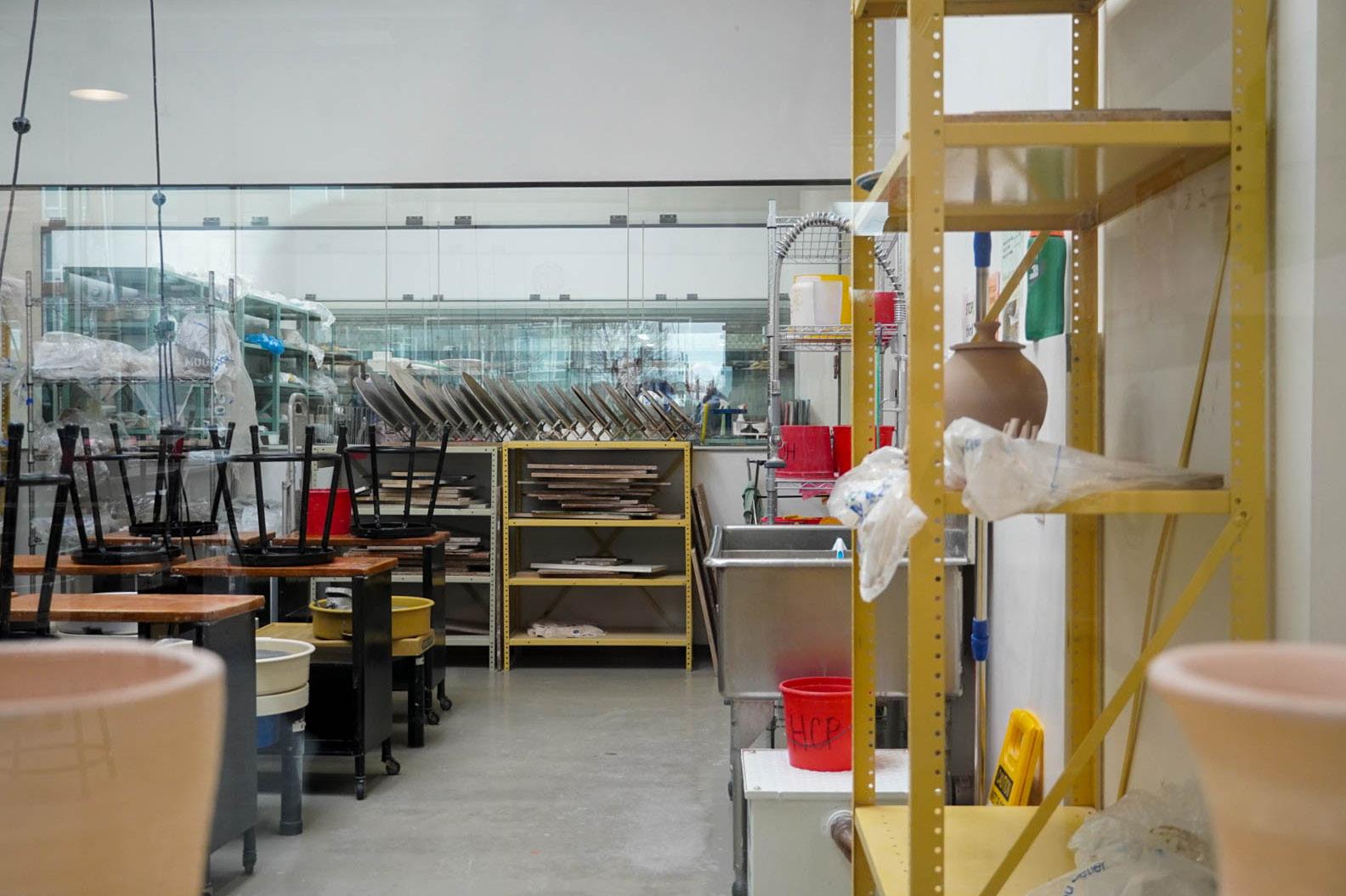

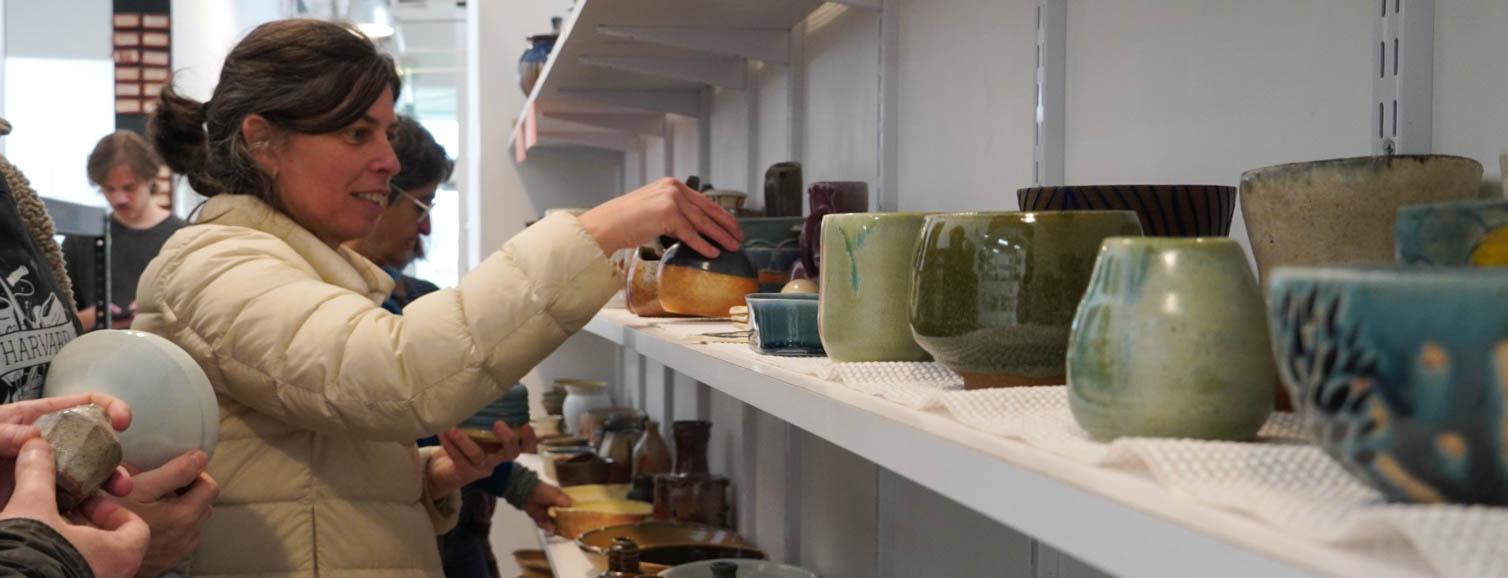
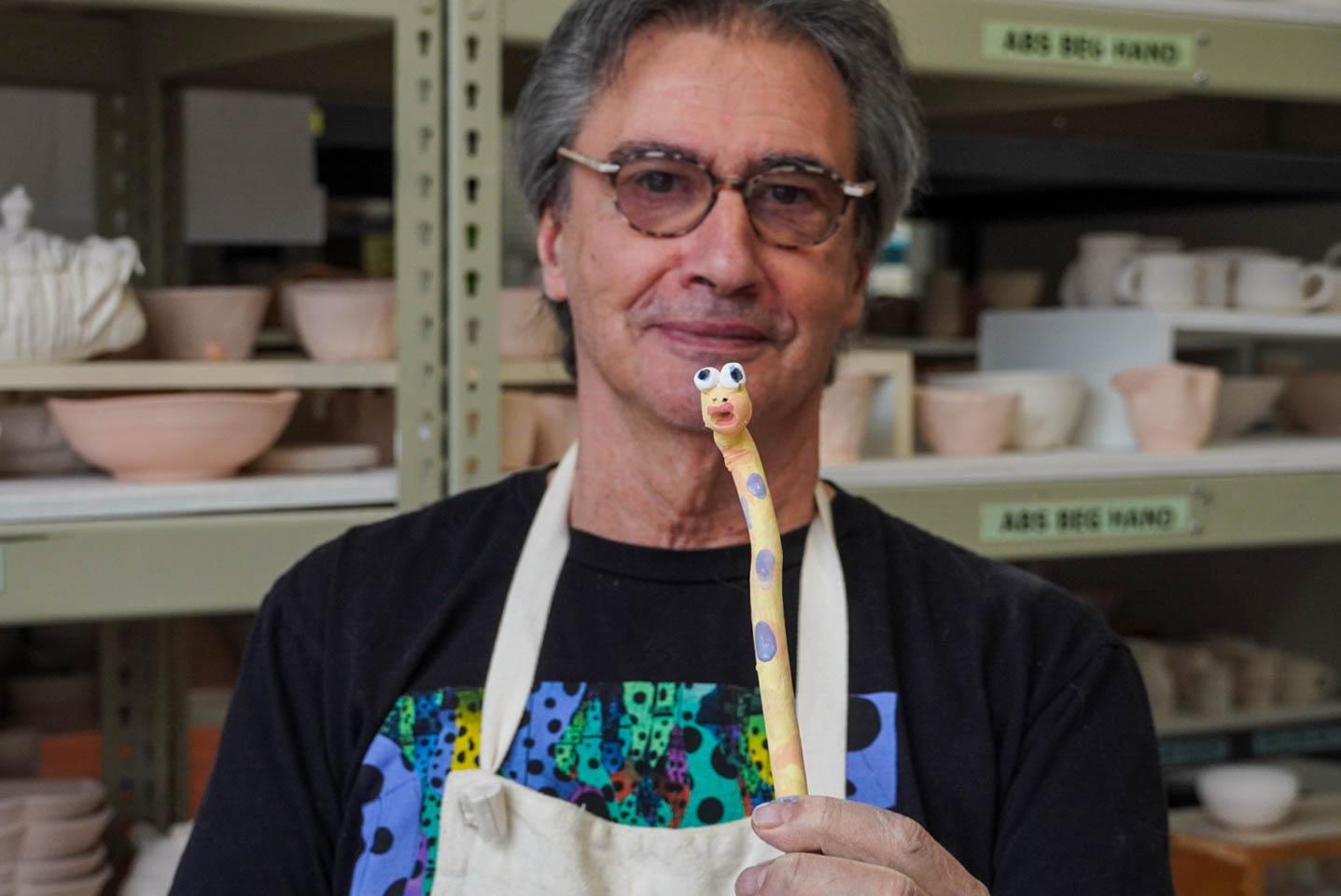

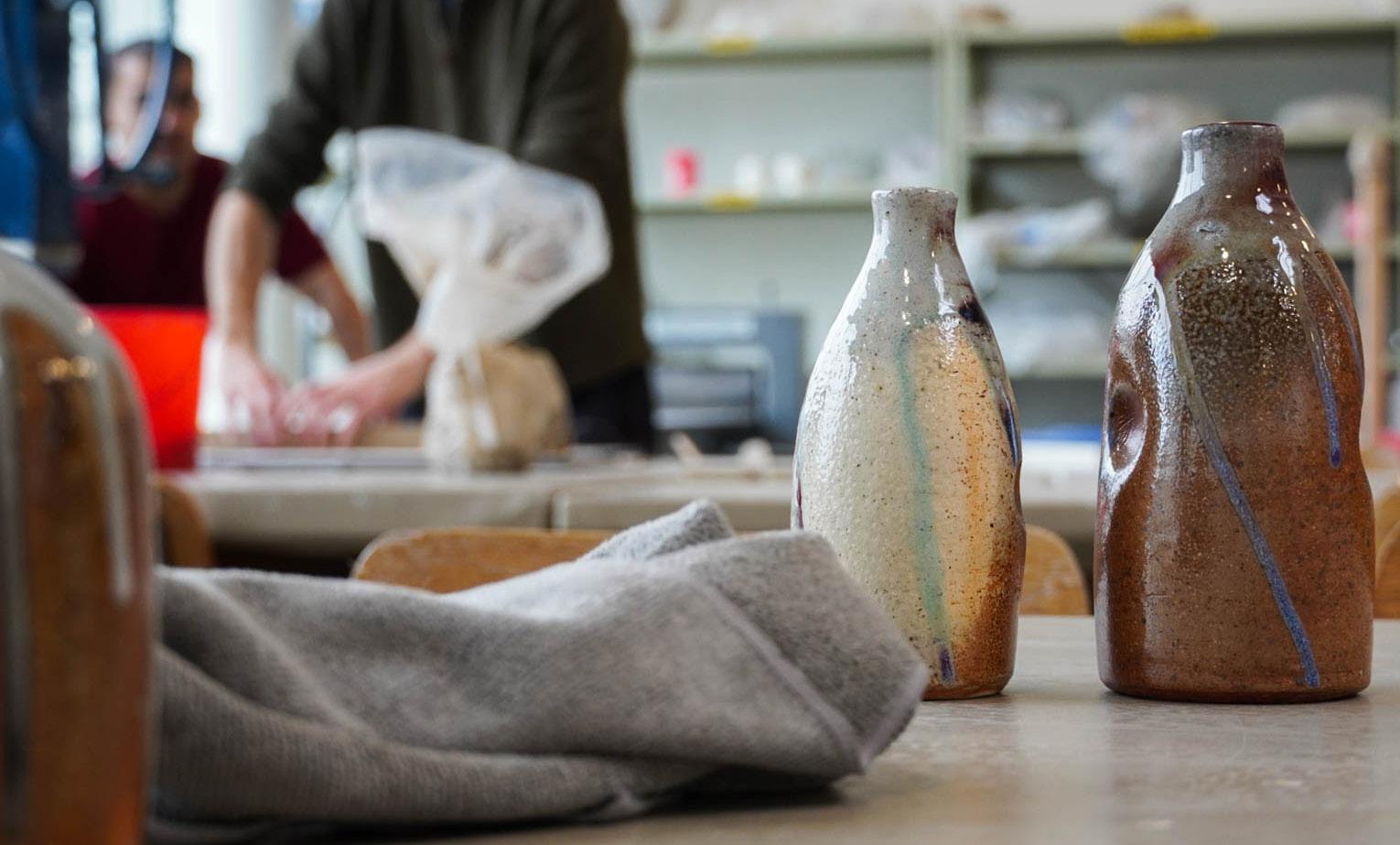
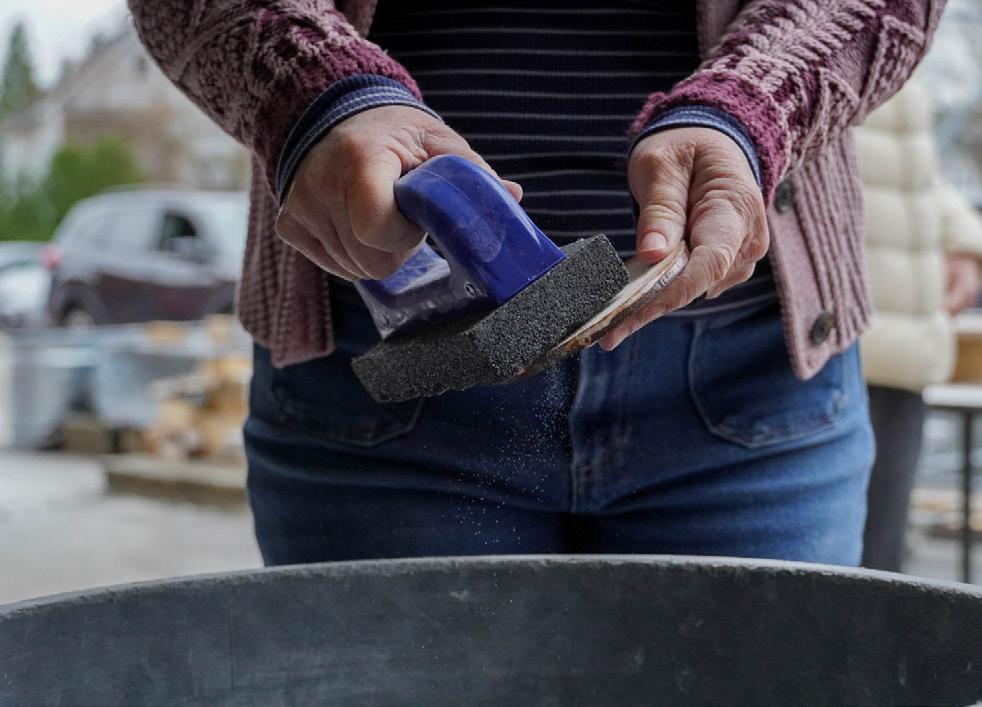

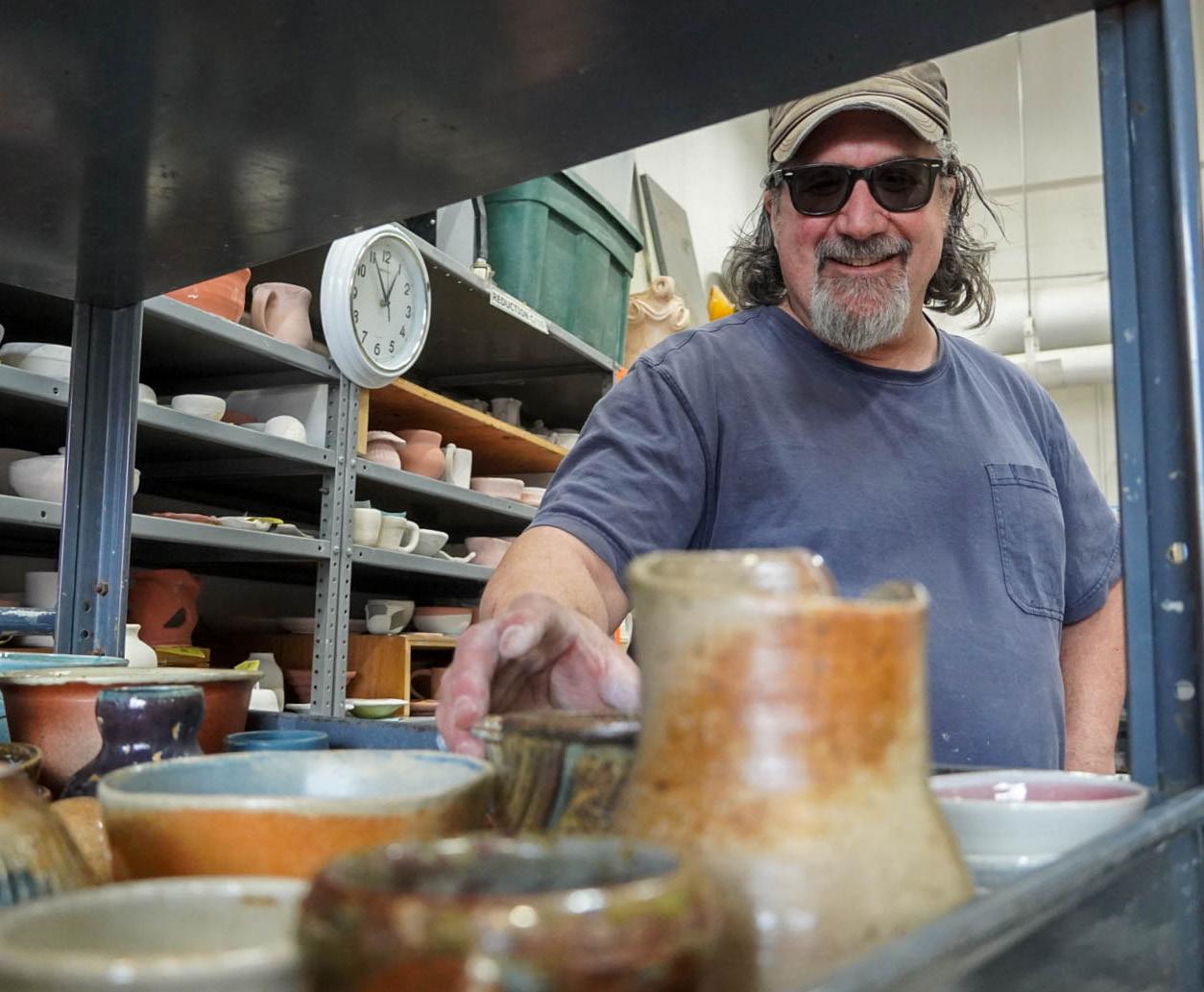
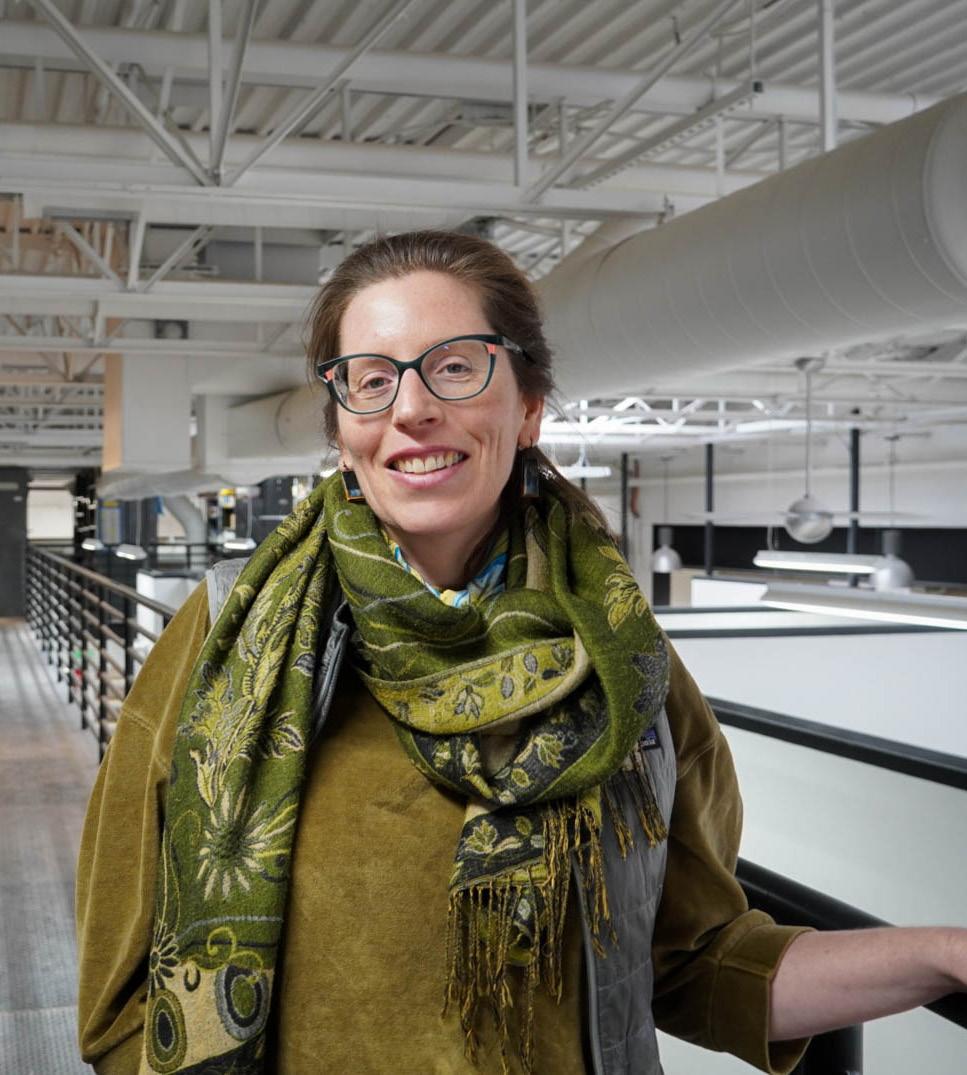
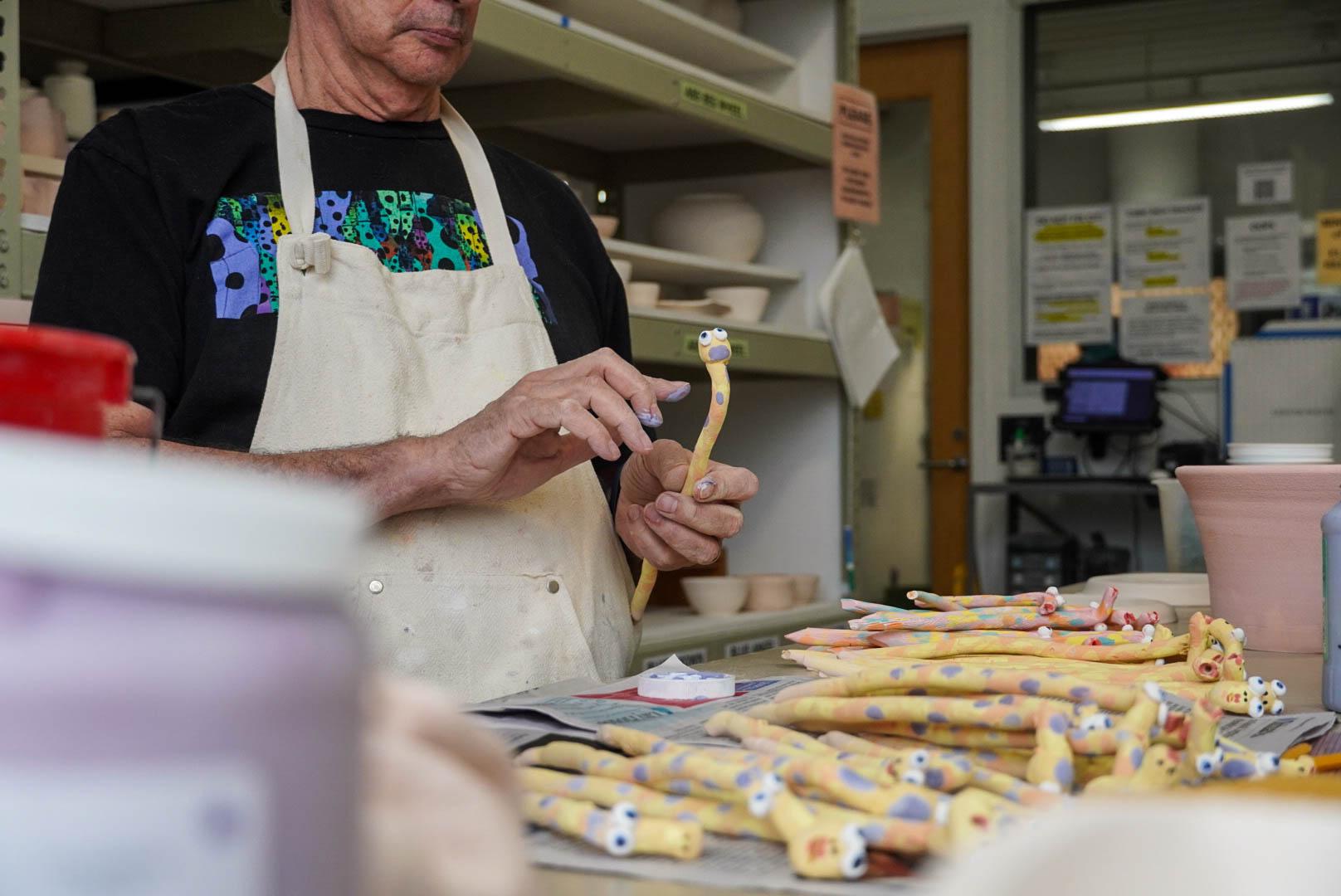
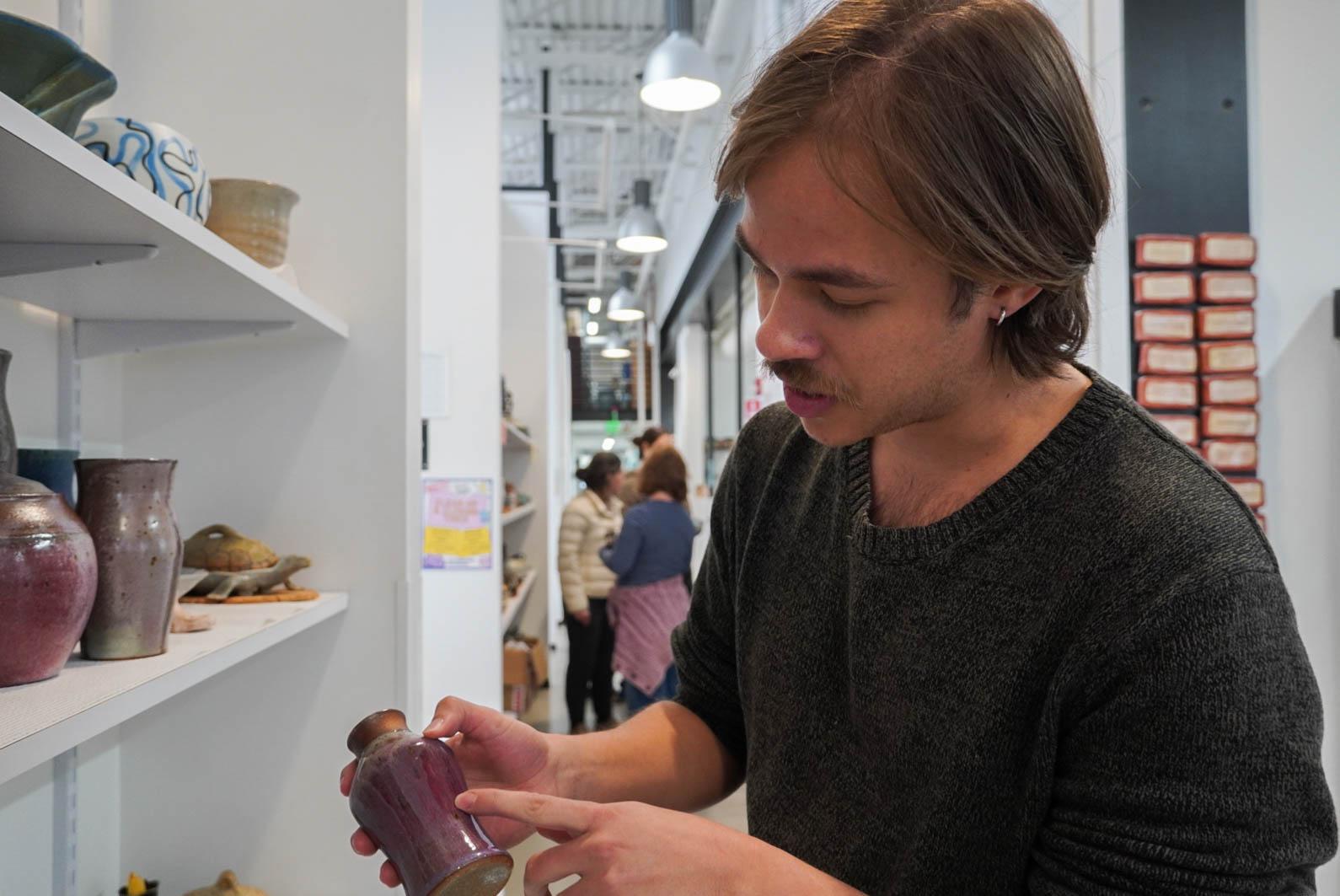

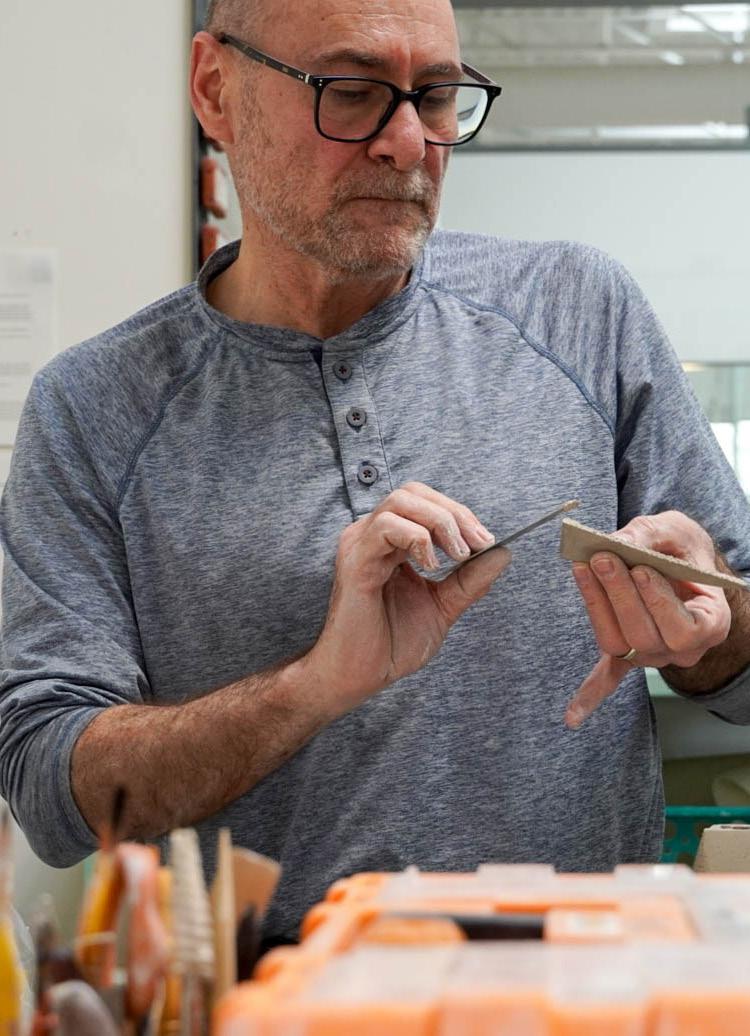

WOMEN’S BASKETBALL
Turner Picked by Aces With 35th WNBA Pick SPORTS 18
BY SUDHISH M.
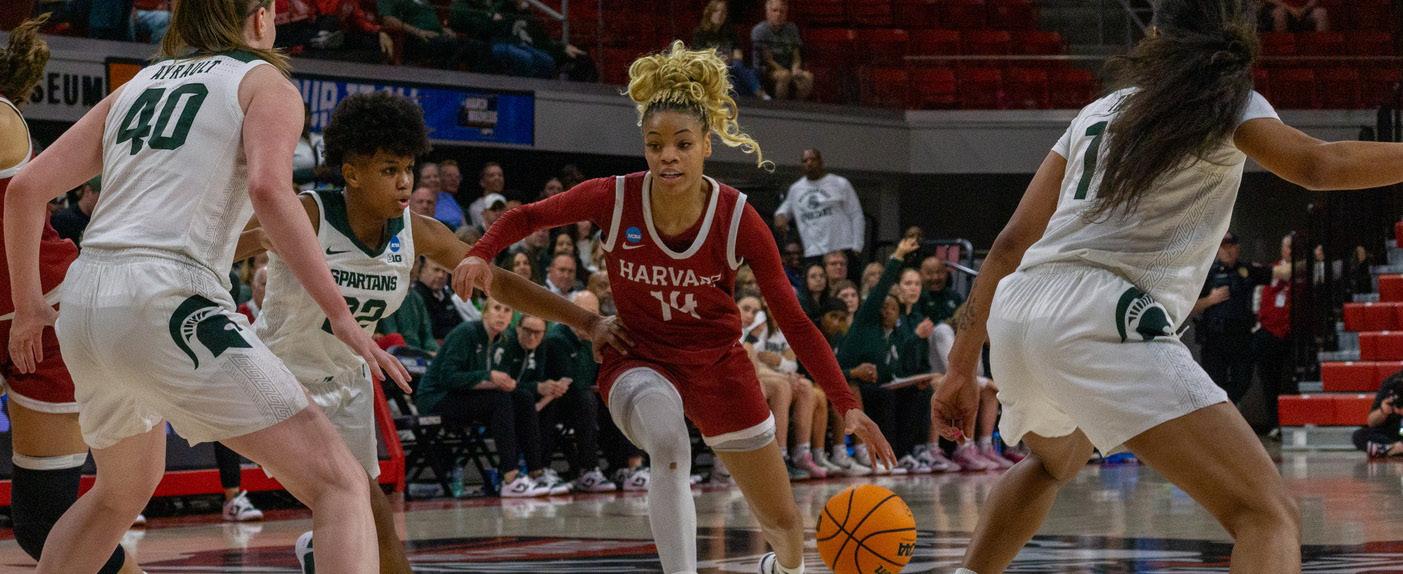
Harvard Secures Ivy Tournament Bid
For the first time since 2013 the No. 10 Harvard men’s lacrosse team (9-2, 3-1 Ivy) took down the University of Pennsylvania Quakers (47, 1-3 Ivy), dominantly beating its Ancient Eight foe 13-6 on Jordan Field. The team’s penultimate home game of the season marked another milestone for the squad as the win clinched the team’s bid for a coveted spot in the 2025 postseason Ivy League tournament, marking its first appearance in the battle since 2016. Heading into the game, UPenn had the cards stacked against it as the squad was battling against a then-four, and now-five, game losing streak. Winning every stat line on the score sheet — outside of saves, for which the Quakers’ goalie Emmet Carroll out-saved freshman goalie Graham Stevens, who went 54 percent on the day — the battle tipped in favor of the Crimson through all four quarters.
Sitting first in the Ivy League for caused turnovers and second in the nation, the Harvard defense made its presence felt through the first 15 minutes, getting out on the UPenn offense and shutting down its opportunities. In the first five minutes, UPenn saw three TOs in the midfield, and that stat line only worsened as the squad posted a whopping six TOs in the first eight minutes of the game. Turning the ball over 24 times — 11 of which were caused by the Crimson defense — UPenn’s inability to cherish the ball allowed Harvard a more-lopsided offensive onslaught, which Assistant Coach and Offensive Coordinator Neil Hutchinson’s attack capitalized on. “We guarded and communicat-
ed at a really high level,” said junior SSDM Owen Guest. “Coach Grill and Coach Byrne had us dialed in on the macro-level tendencies of Penn’s offense, and we took a big step in understanding our individual matchups on a micro level.”
Sitting at No. 3 in the nation for scoring, No. 3 in the nation for assists, and No. 4 for shot percentage per game, the Harvard attack didn’t deviate from its team-style offense, making the most of its time with the ball and out-shooting UPenn with 46 shots to the visitor’s mere 26. With just 13 shots on goal throughout all 60 minutes, the Quakers gave Stevens a much-needed break before the squad battles against No. 1 Cornell this weekend.
Stacking wins against then-No. 17 Boston University, Binghamton, then-No.18 Dartmouth, and UPenn, the team has clearly started to find its rhythm. The team played loose the whole game, showing off moments of creative brilliance that the ESPN+ broadcasters lauded as the squad playing “freelance style” and “just having fun on the offense.”
Getting things going on the attack was junior attackman Teddy Malone, who hit twine about three minutes into play on a textbook finish fast break play. Riding hard following a missed shot from senior middie Owen Gaffney, the attack got the ball back immediately in the midfield — a hallmark of the game as UPenn was only able to successfully clear on 16 of its 25 attempts, or 64 percent — and made light work of the Quakers’ inability to recover as sophomore attackman Jack Speidell found Malone waiting for the finish. Six minutes later UPenn would equalize the score at one-all, but Harvard would answer with two in kind just moments later. The first came from senior attackman Sam
King — who sits at No. 9 in the nation for total points, and is a contender for the coveted Tewaaraton trophy — who struck paydirt with just three seconds left on the shotclock. Bodying up his guy as he took it himself around the left side of the crease, King found glory as he fell to the turf.
Striking up momentum, junior middie Andrew Perry would strike less than two minutes later, this time on a FB goal as he barrelled down the middle of the field on the transition after receiving the ball from senior defender Logan Darrin. The defense played lockdown against the Quakers, getting out on its matchups, making contact, sending slides, and communicating through its rotations. Overall, the unit — led by Darrin, junior Charlie Muller, and senior Martin Nelson, proved an immovable brick wall that several times caused UPenn’s shot clock to expire, and made pivotal stops that allowed middies like Perry to find those chances.
Despite losing the first face off of the second quarter, play at the X was certainly an improvement from past performances, with Harvard winning the day — not, necessarily, on the initial clamp, but in the 50-50 GB scrum — with 64 percent of the draws.
Freshman FOGO Jackson Henehan posted a six-for-nine record, sophomore FOGO Owen Umansky went one-for-one, and junior FOGO Matt Barraco went 7-for12. The wings really distinguished the squad, however, with sophomore LSM Joost de Koning and senior SSDM Ray Dearth making their presence known with standout GB play.
The first goal of the second half was yet another buzzer-beater by King, this time on a broken play that saw the captain snag a one-handed ground ball and work
through three defenders before sniping top shelf with six on the shot clock. Next, Speidell tallied his first of five on the day on the assist from King, flying through the middle of the arc before sending it behind the back as he crossed GLE where he was met with a look of utter bewilderment from UPenn’s goalie Emmet Carroll.
The Quakers would answer about a minute later, and Speidell would notch his second to keep Harvard ahead by four. Notoriously a gritty program, UPenn showed it wasn’t down for the count. Working its way back into contention, the Quakers celebrated with the final two goals of the half, cutting the Crimson’s lead to just two. The first on a shifty take from attackman Chris Patterson – a transfer from Hobart — and the second from middie Casey Mulligan. It seemed that the game might shift into the visitor’s favor.
However, Harvard is no longer a team led by undreclassmen. And, the poise and composure showed. Not allowing the dip at the end of the second define it, the squad came out blazing, and held UPenn to zero goals in the third quarter. Malone got things going two minutes into play on another FB opportunity, this time on the assist from Guest, who got the ball safely out of the defensive zone on the pass from junior middie Francisco Cortes.
The next two goals both came from Speidell, the first on a manup attempt that saw him assume his usual position posting up in the middle, and the second on a highIQ creep around the left side of the cage where junior middie John Aurandt IV found him with the crosscrease assist.
Rounding out play for the third quarter was a buzzer-beater from Guest, who took it himself on the clear from the defen-
sive end, not drawing a slide from the scrambling UPenn defense, and getting the shot off with 0.1 seconds left on the clock. Tallying his third-straight game with a goal, the SSDM certainly has proven his prowess on the offensive end. Up 10-4 and with a comfortable 6-goal lead, the squad was starting to find its groove. Back and forth play defined the first three minutes of the last quarter, and the Harvard attack was rewarded with a one-minute extra-man opportuntity that it quickly squandered. Carroll realized that the Crimson was trying to find Speidell in the middle for another quick finish, and the goalie easily intercepted the pass before finding his outlet and getting the ball over the midline.
The mistake didn’t haunt it, though, as another solid round of defense neutralized the UPenn possession. Back-to-back saves from Stevens bailed out the squad, and this time Harvard capitalized. Rotating on its second line of middies, the team set up and got to work. A decisive dodge from Malone got the defense biting, and unable to recover on the second slide, Aurandt found himself calling for the ball wide open on the left wing. King hit him from behind and the junior wisely saw his defender overplay him on the approach, toe dragging around the SSDM before using the approaching slide as a screen to send it past Carroll.
Up by its largest lead of the day — seven goals — with nine minutes left to play, it was go time for the Quakers if they wanted to have any hope of a comeback. In a seeming answer, UPenn’s attackman Ben Smith tallied back-to-back goals following Aurandt’s, the second of which was alley-ooped on a slick BTB assist to Smith as he cut through the fan.
Even with the late-game push from Smith, though, Harvard’s lead was too much to overcome, and the squad equalized Smith’s two goals with two of its own to end the game up by seven. Speidell’s last goal of the day was the penultimate strike, this one again coming off the feed from King who hit the St. Anthony’s product with a leading feed from left X as Speidell got a step on his cutter and broke away to wrap around the right side of the crease. Putting the nail in the coffin was junior middie Logan Ip, who, with about three-and-a-half minutes left found himself double-teamed in the low right corner in UPenn’s last-ditch attempt to get the ball on attack. Splitting the double team and racing towards cage, Ip scored on the open net and secured another win for the Crimson. Running out the clock for the last minutes, Head Coach Gerry Bryne celebrated his first Harvard victory against the Quakers by substituting on his senior class to get them involved in the historic matchup.
“We have to make sure we have a great week of practice to set up a good 60 minutes on Saturday,” said Malone about what the team needs to do heading into its game against Cornell this weekend. “We can’t lose sight of what is important, which is playing for each other and earning more games with our teammates this season.”
The seniors will be celebrated once again this weekend as the squad welcomes No. 1 Cornell to Jordan Field on Saturday at 1 p.m. for both senior day celebrations and alumni day. Following the matchup, the women’s team will be hosting Ancient Eight rival No. 6 Yale at 4 p.m.. If you can’t catch the action live, stream both contests on ESPN+.
katharine.forst@thecrimson.com
Harvard Clinches 2025 Ivy League Title
Harvard women’s tennis (13-8, 5-0 Ivy) claimed the 2025 Ivy League championship following a dominant 4-1 victory over Yale on senior day.
The success marks the first time since 2017 — and the 20th time in program history — that the Crimson team has earned the title of Ivy League Champions.
“I am so proud of our crew and all the accomplishments they received thus far,” said Coach Green after earning her third title. “They work so hard.”
Coming off a 4-2 win at Brown on Friday, the Crimson entered its last home match undefeated in league play. This achievement is the result of a number of successes from the Harvard team, but most notable was a strong showing in the doubles matches. Senior day was no different, with Harvard seniors Holly
Fischer, Rachel Arbitman, Angel You, and Maxi Duncan all helping to earn their last doubles point at home. “I’m super proud of our seniors,” said Green. “They really stepped up and showed their grit, determination, and perseverance.”
Those three qualities showcased by Harvard’s class of 2025 were also vital while maintaining a lead in singles.
Junior Charlotte Owensby demonstrated outstanding skill in her two sets, winning the first singles point and the second overall match point for Harvard.
Sophomore Stephanie Yakoff lost her first set 2-6, but showed unmatched tenacity in her gameplay and subsequently flipped the score to win her next two sets 6-1 and 6-0.
“We have a very gritty team,” Green added.
The Crimson’s grit was reflected on other courts, as its players battled out close sets with its Yale opponents. As most of the Harvard players
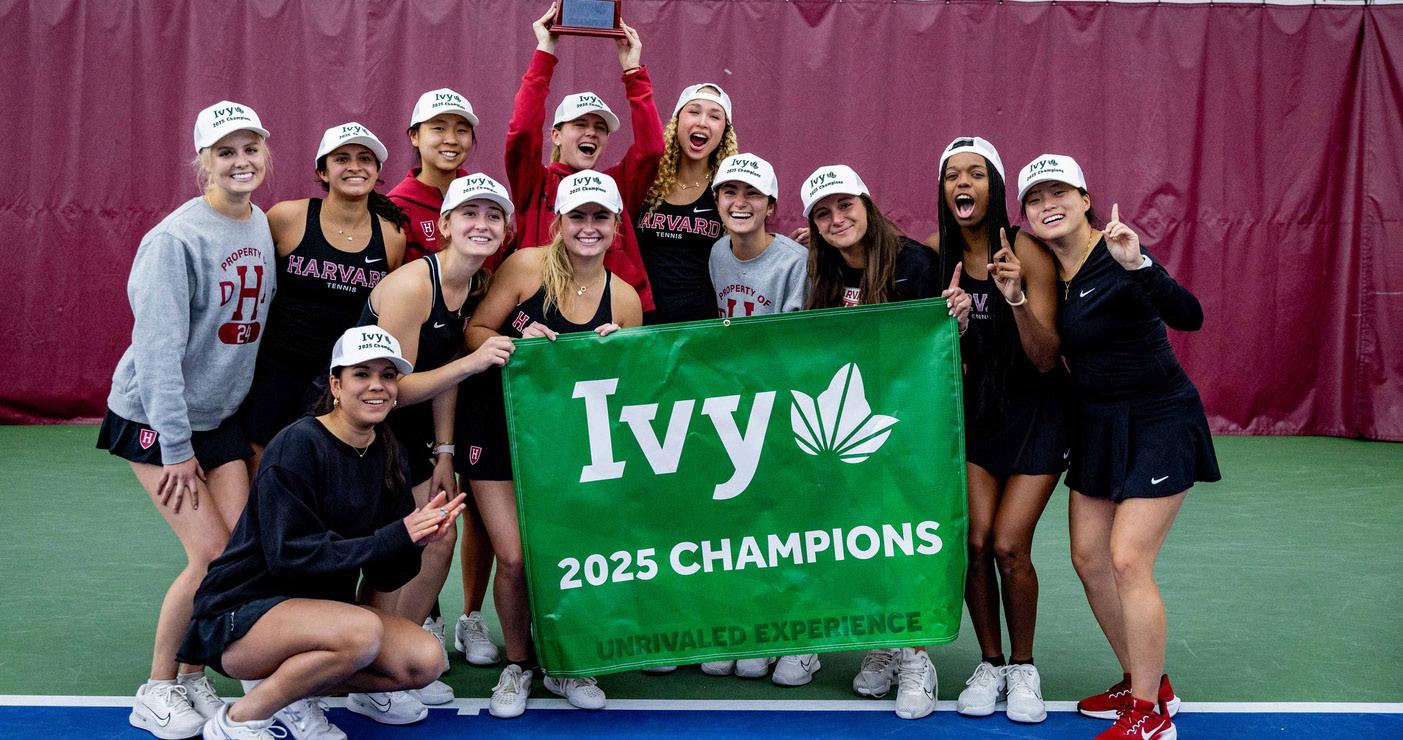
split scores with the Bulldogs, the match result came down to critical third sets. No. 1 Fischer, No. 5 Duncan, and No. 6 sophomore Kavya Karra were the Crimson’s last hopes for securing a final singles point, and they did not dis -
appoint. Fischer had an especially close series of games following her initial 6-4 set win, and second set 3-6 drop. With rallies that were as long as they were aggressive, the London, U.K., native needed patience and
persistence in order to edge out Orly Ogilvy of Yale. Luckily for Harvard, she displayed both
